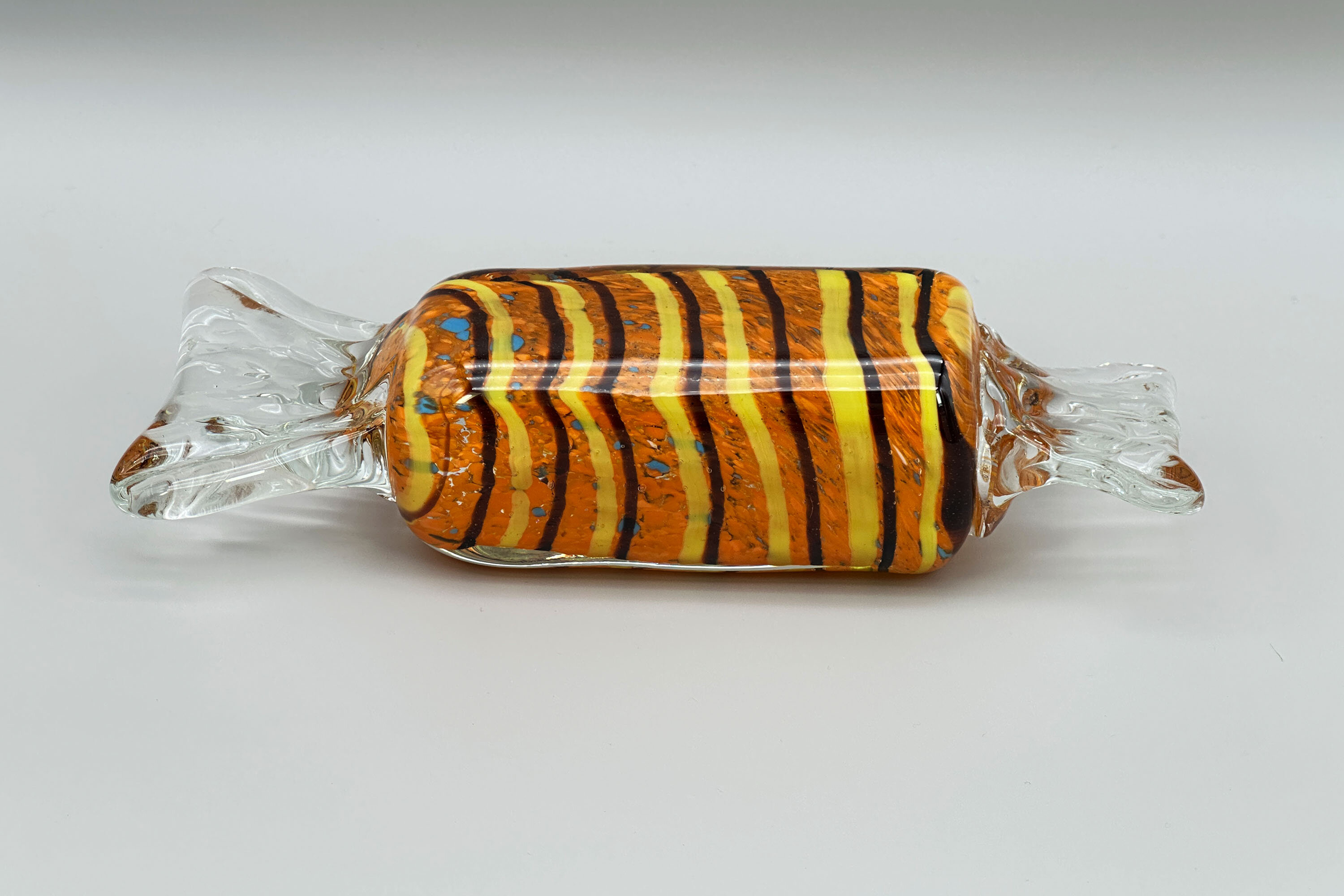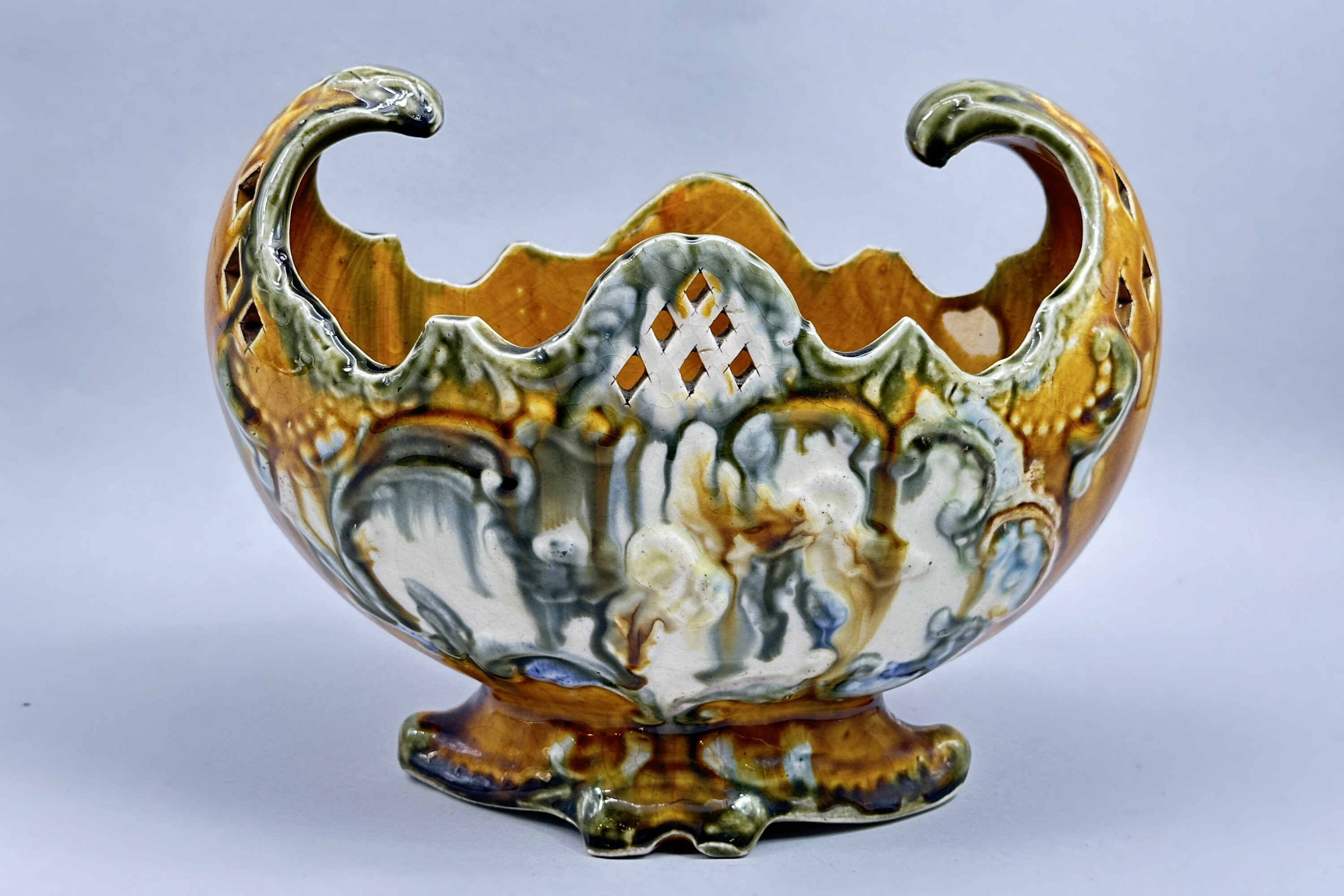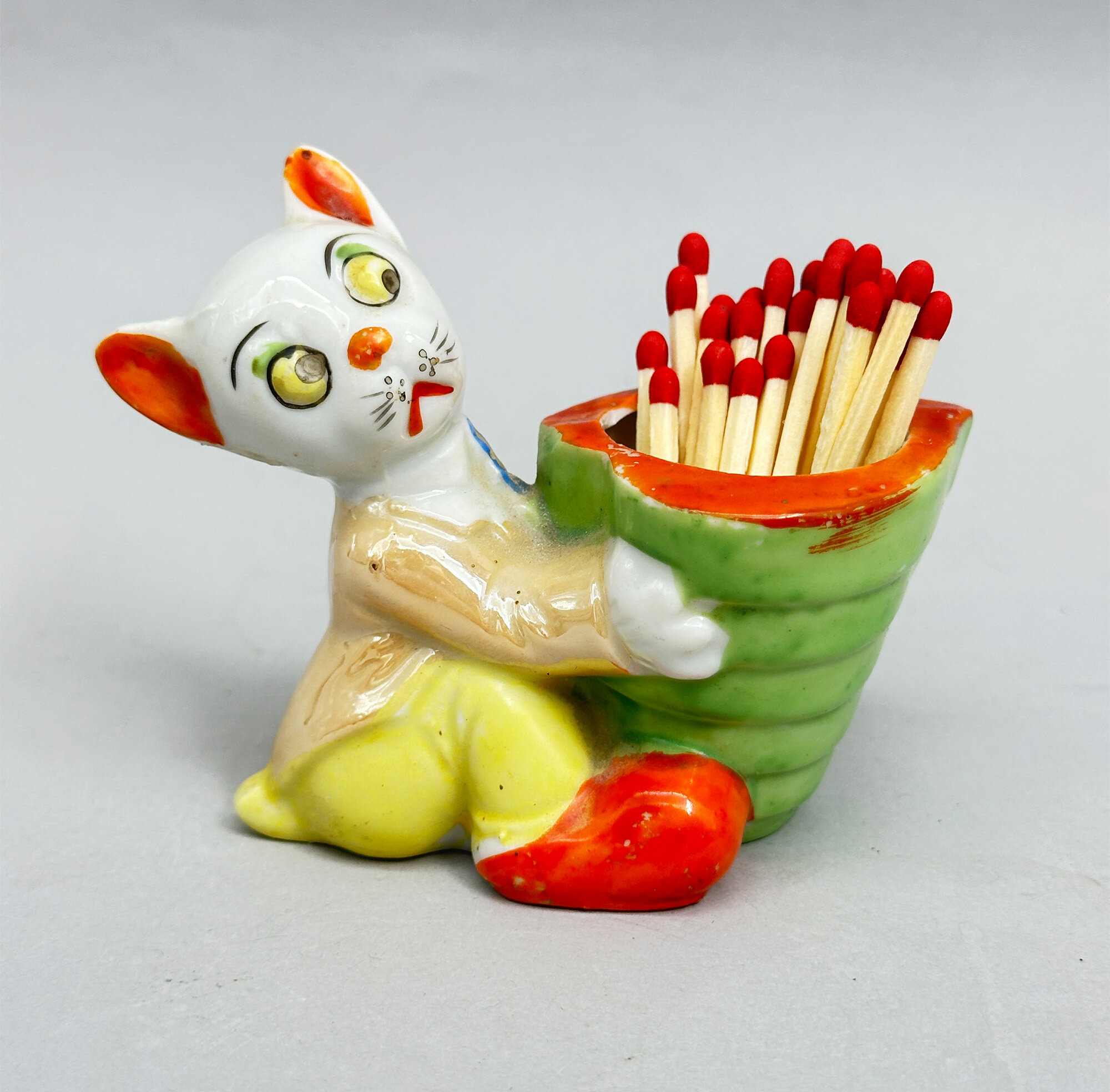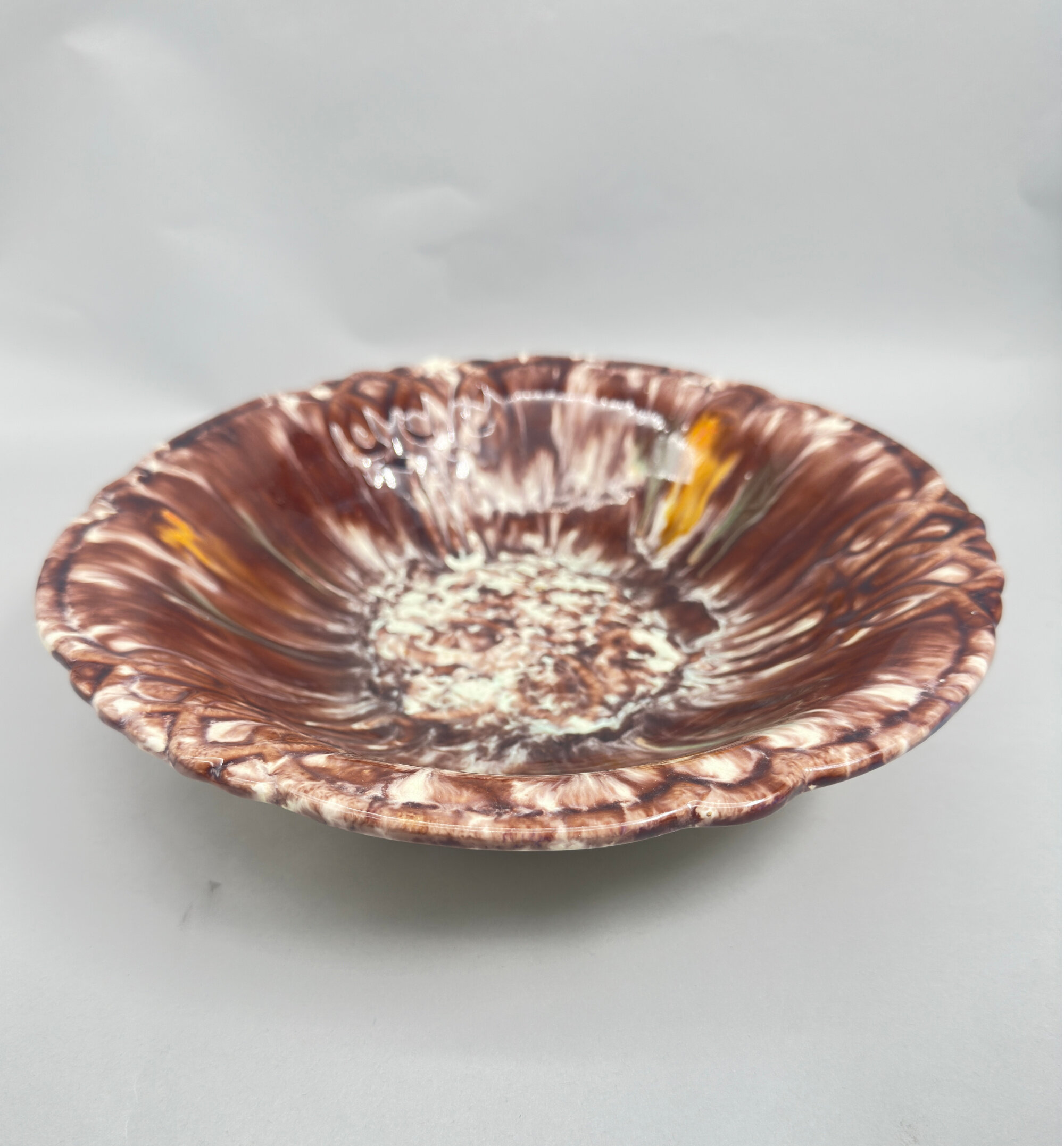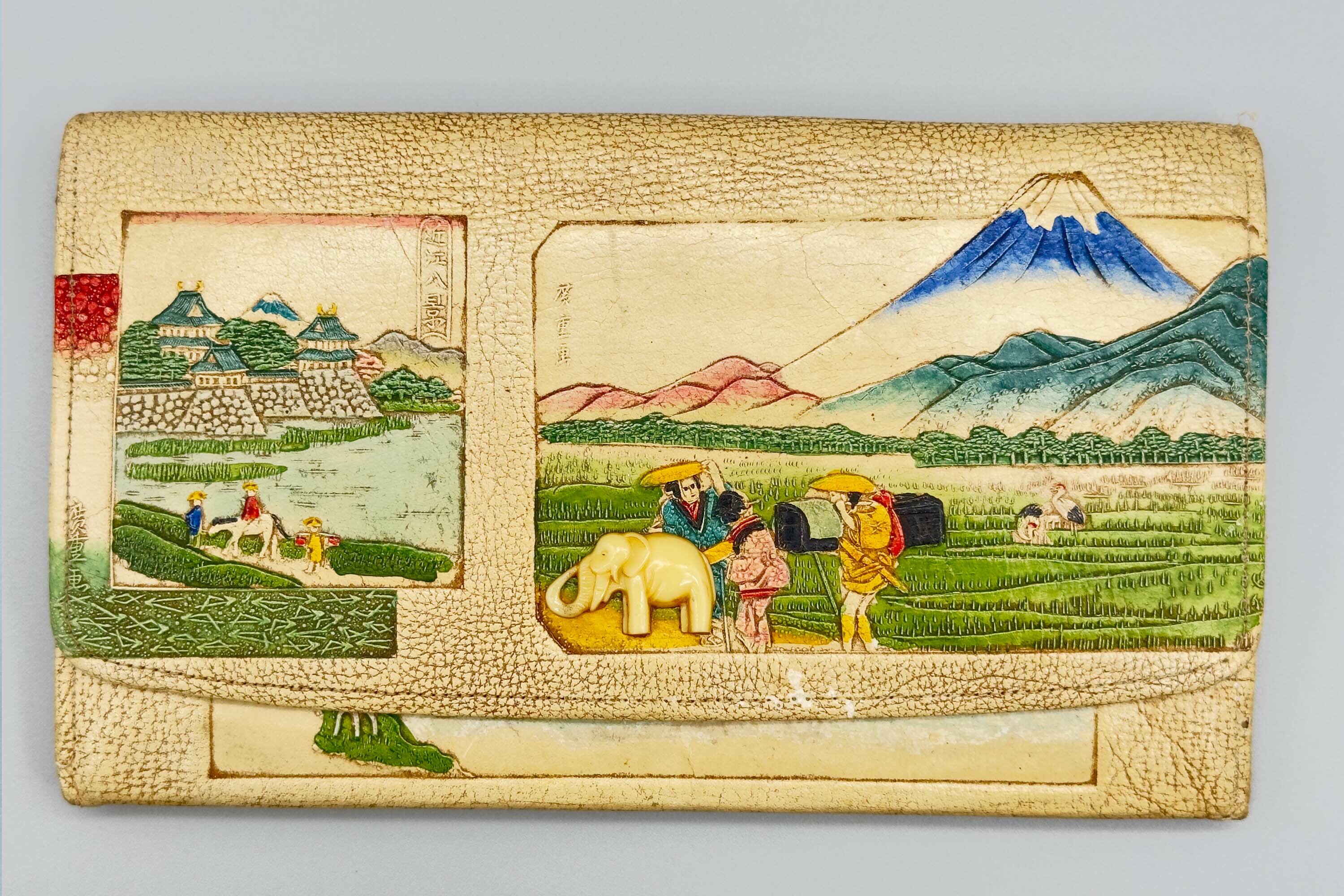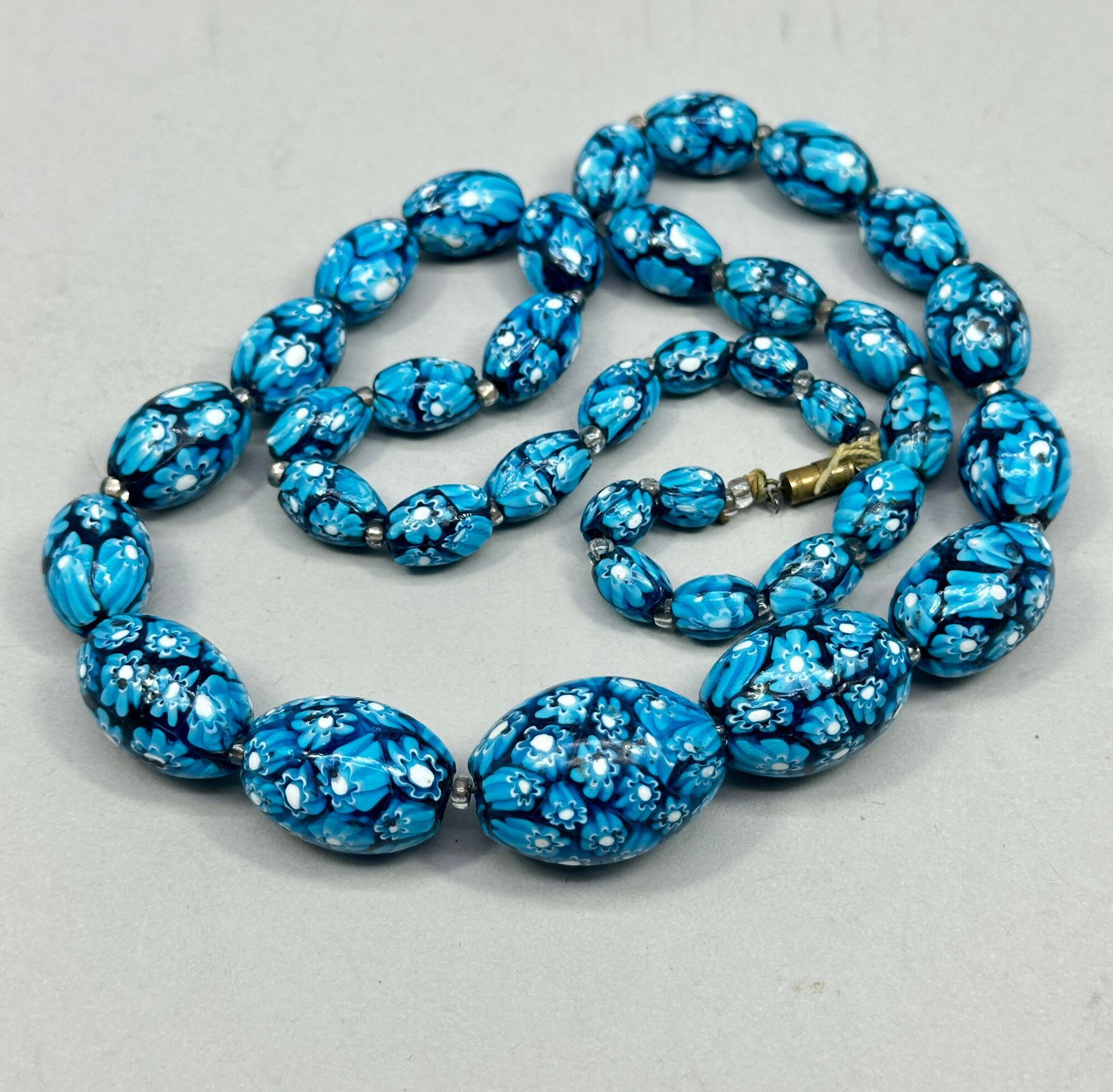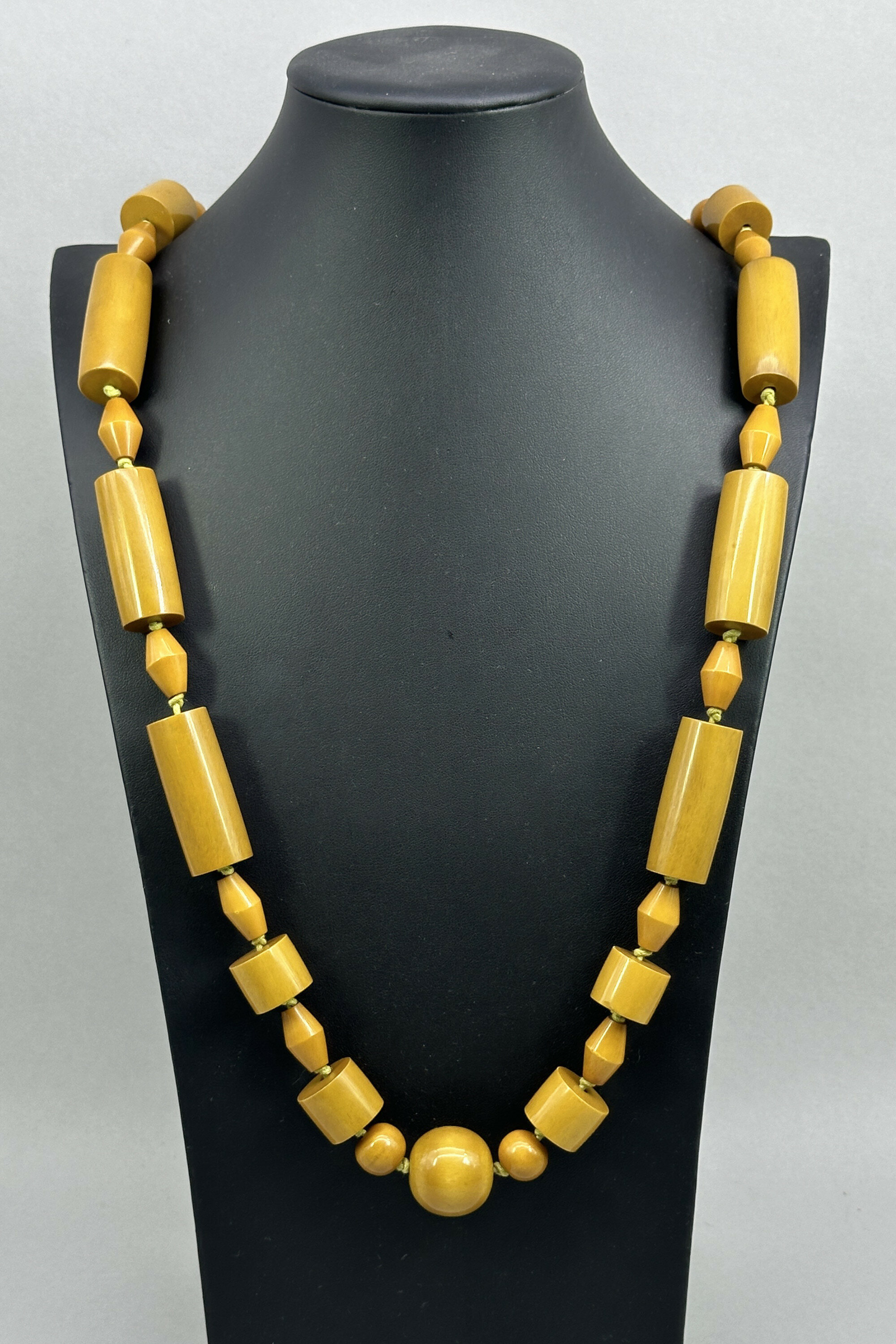
Art Deco Catalin Bakelite necklace, American c1930
Price: £125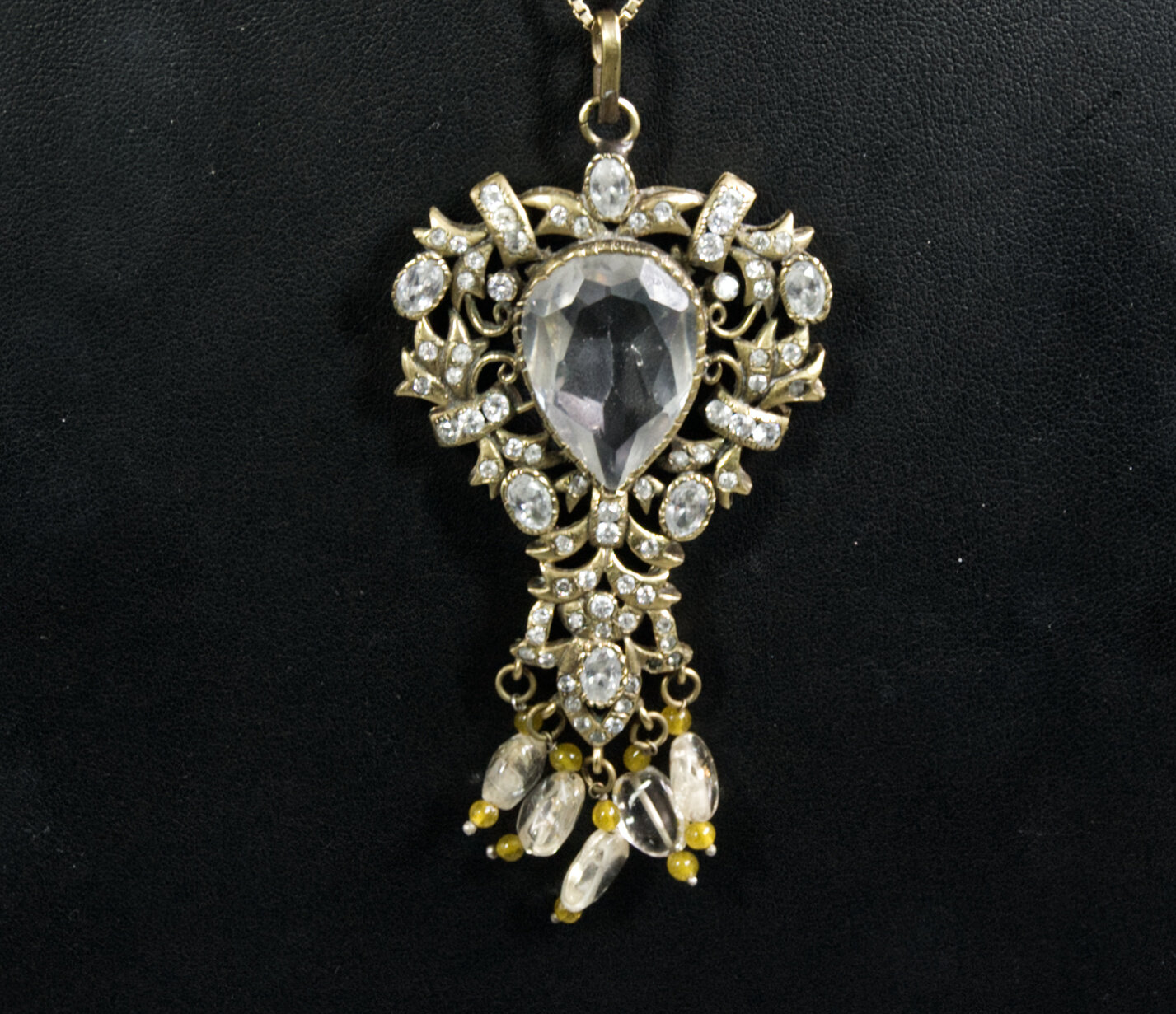
Victorian Indian paste pendant
Price: £55
Pair of Victorian marcasite and silver earrings
Price: £25
Heavy brass and enamel collar necklace in the manner of Albert Gustav Bunge (1893 - 1967)
Price: £35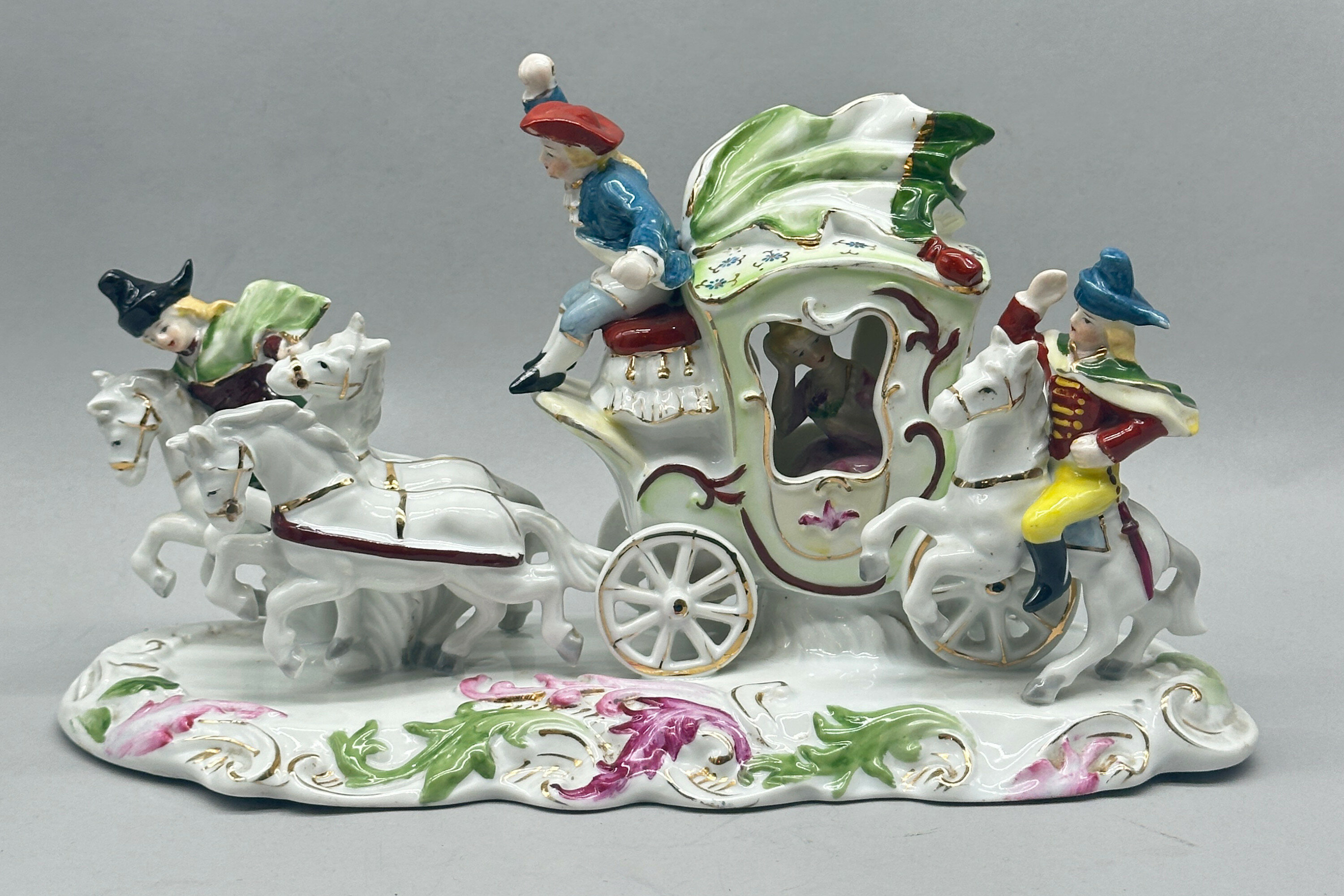
Dresden style model of a Coach and Horses, probably German early C20th
Price: £75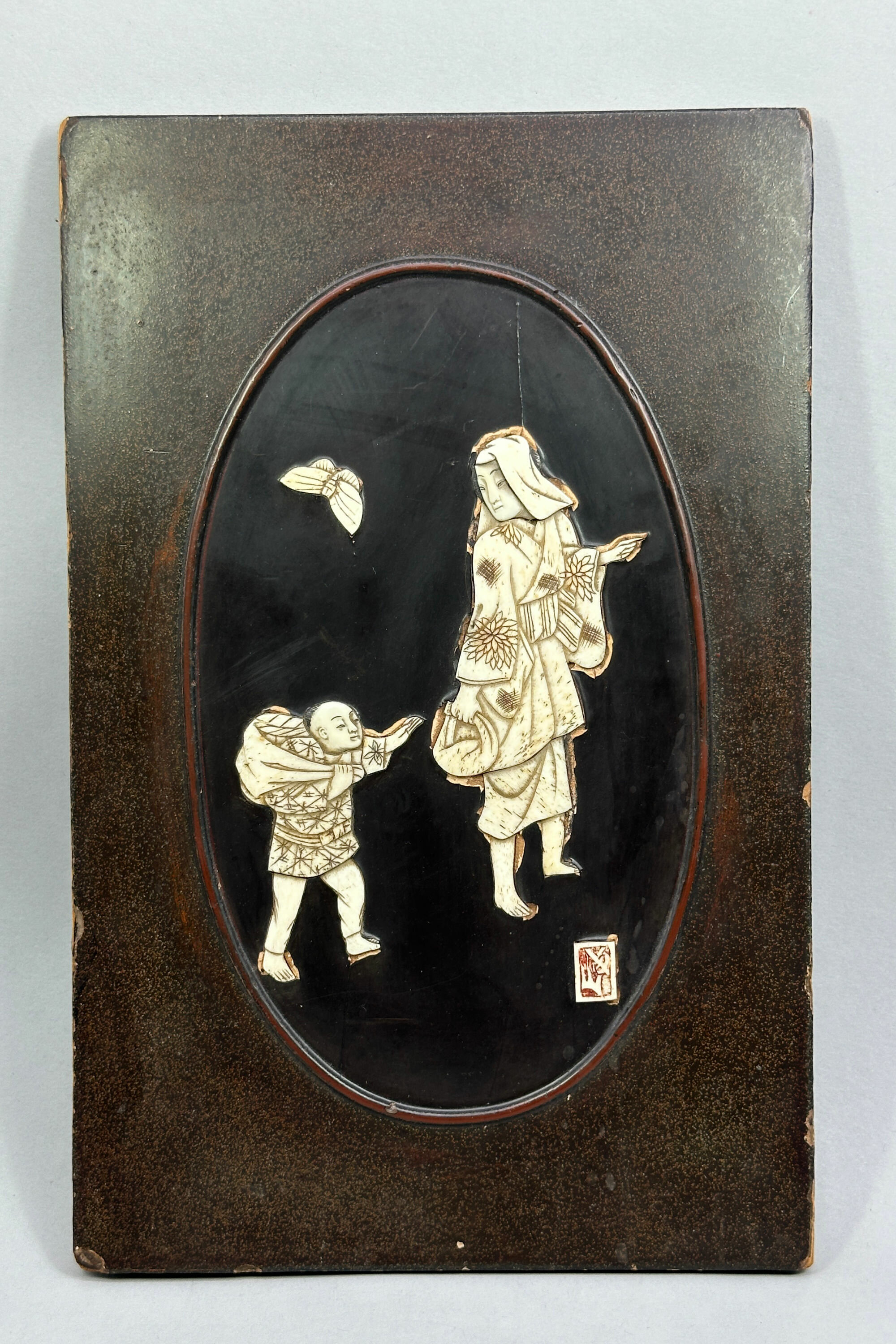
Japanese Bone and Lacquer Plaque, Lady and Boy, signed, late C19th
Price: £45These bone and lacquer plaques were produced in great quantities by Japanese artists in the late nineteenth century for export to the West and became a familiar feature of the European drawing room. The medium was easily subject to damage and loss, especially in respect of the bone inlay, and while this example has some slight damage this is confined to a crack in the lacquer ground of the panel itself and some chipping to the extremities of the panel. The decoration of the figures remains intact (the surround seems to have been cut away in some places to give added definition to the composition) and allows appreciation of the skill with which they were carved, presenting a genre scene of great charm.
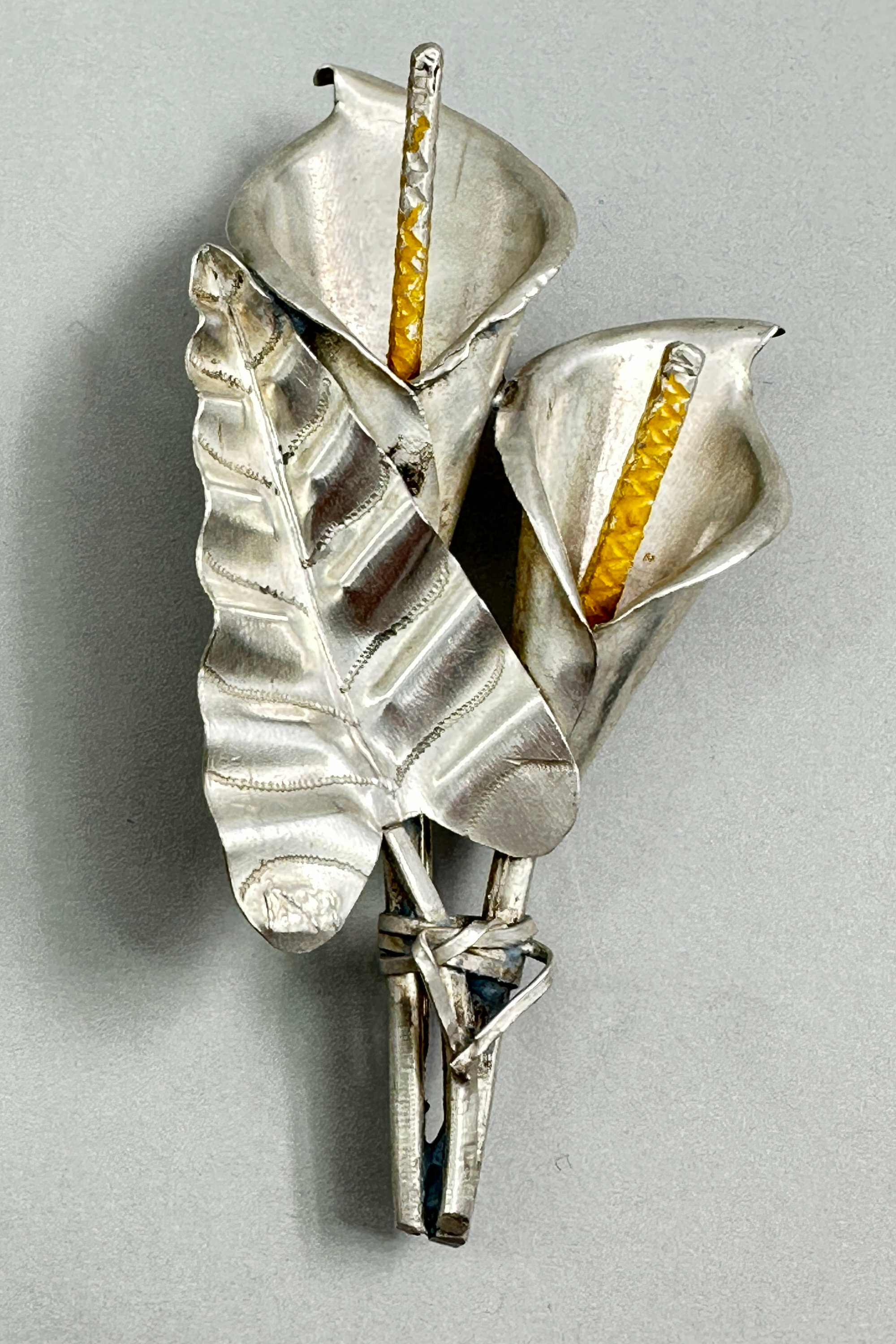
Modernist Silver White Anthurium Brooch, Mexico, 1970s
Price: £25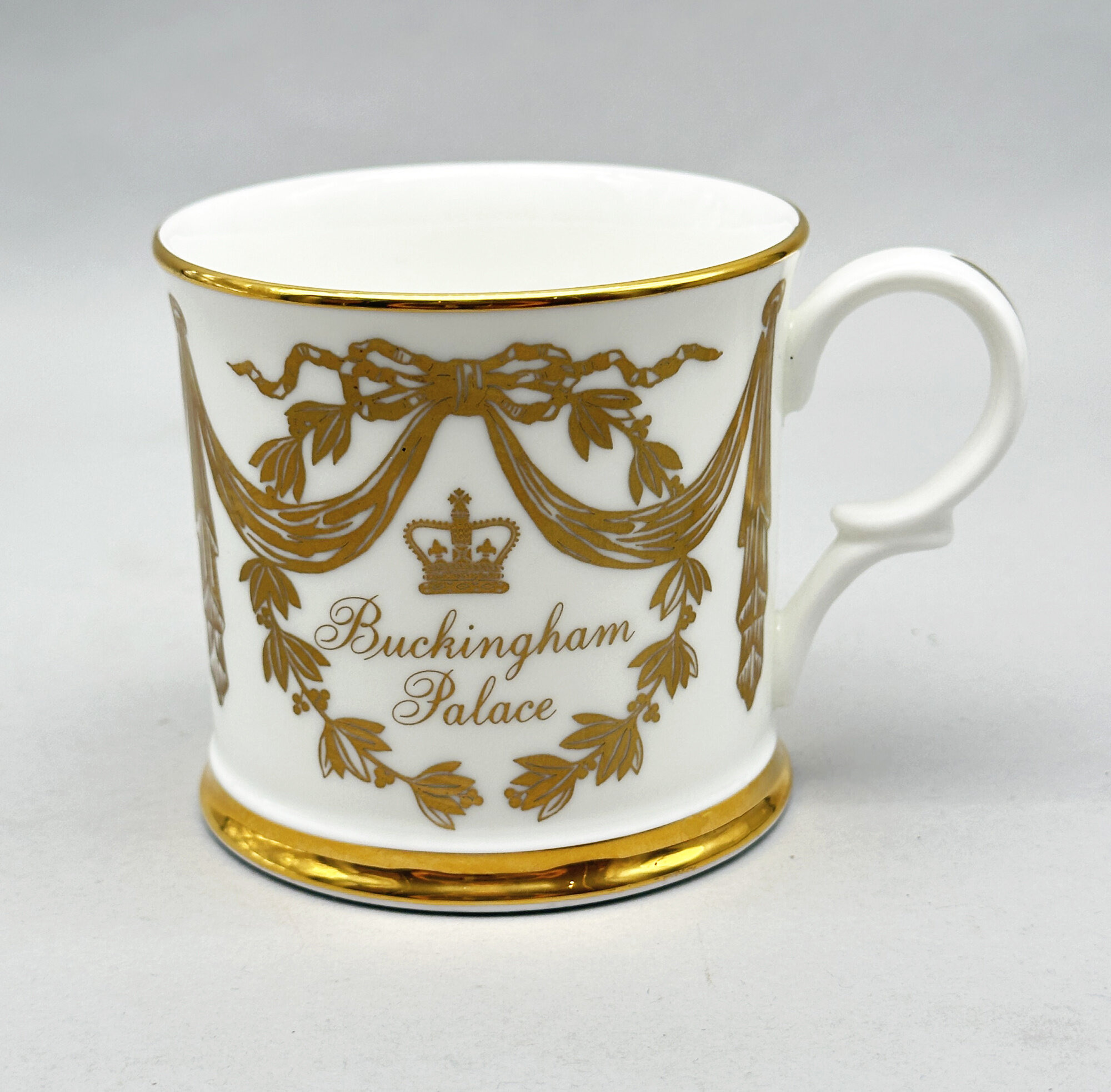
Porcelain Mug : Buckingham Palace 1997
Price: £10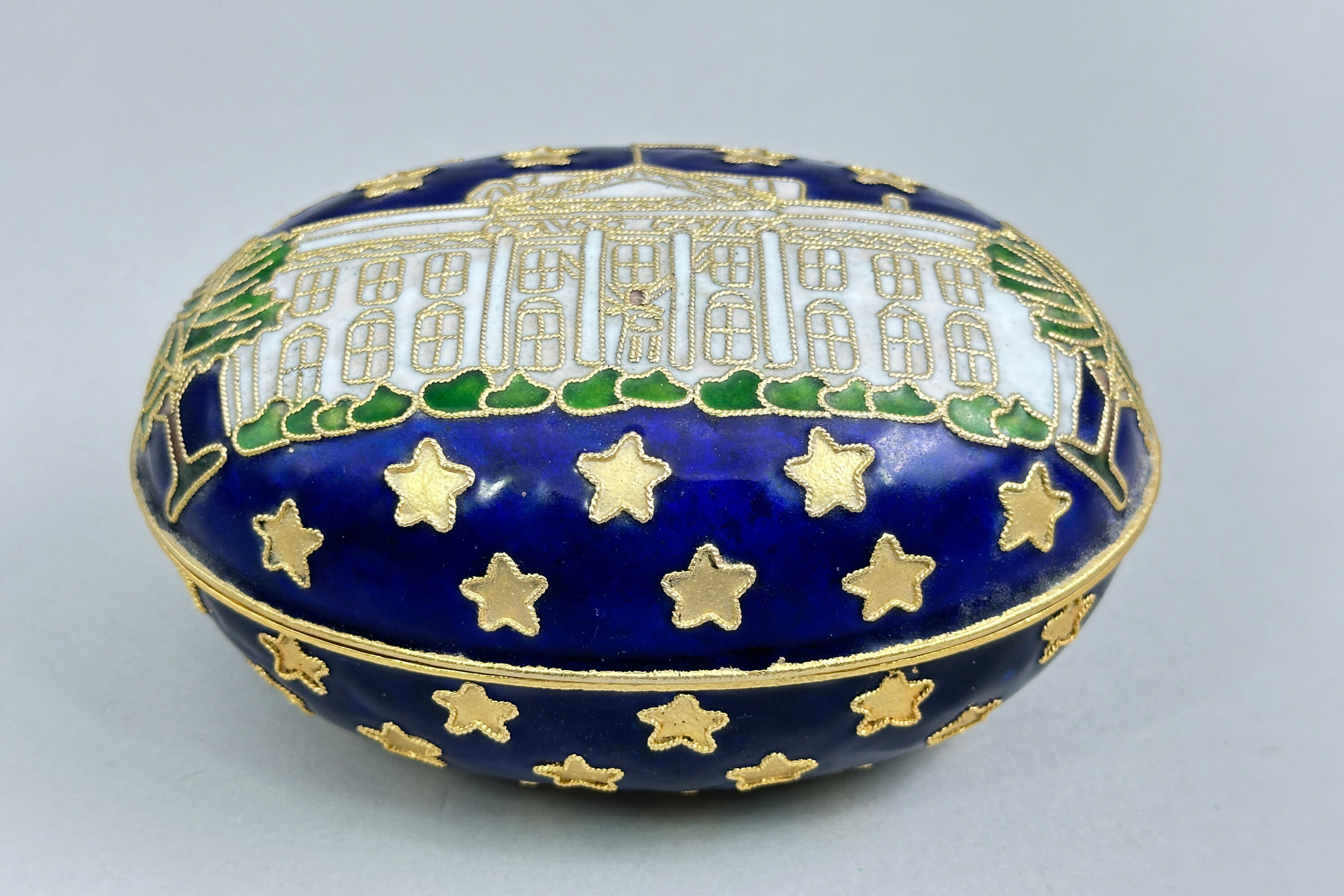
Souvenir White House Enamel Box and Cover
Price: £15
Chinese cloisonne bangle with raised enamel decoration circa 1900
Price: £35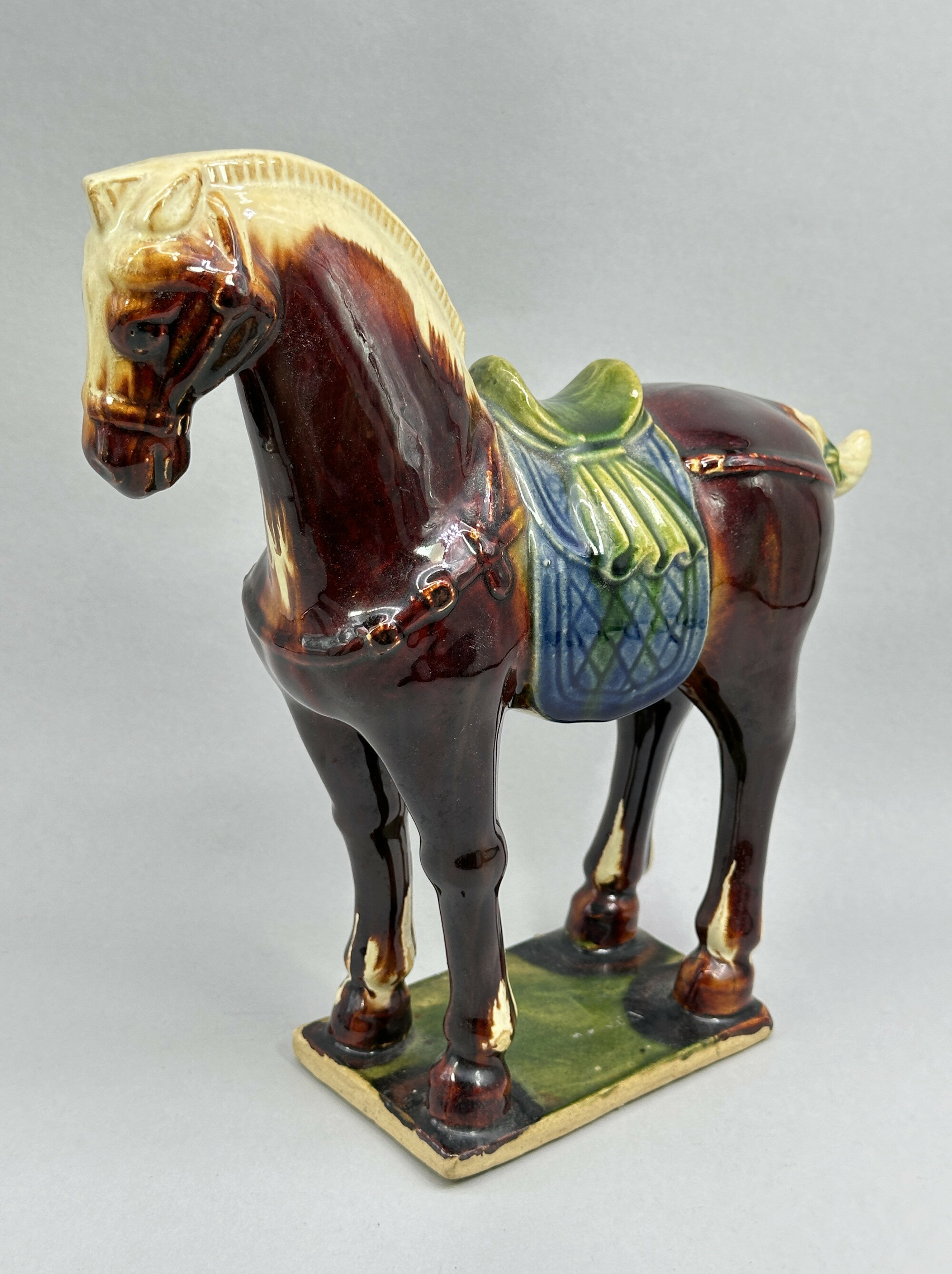
Chinese Sancai Glaze Model of a Horse in the Tang Dynasty Style, 20th Century
Price: £45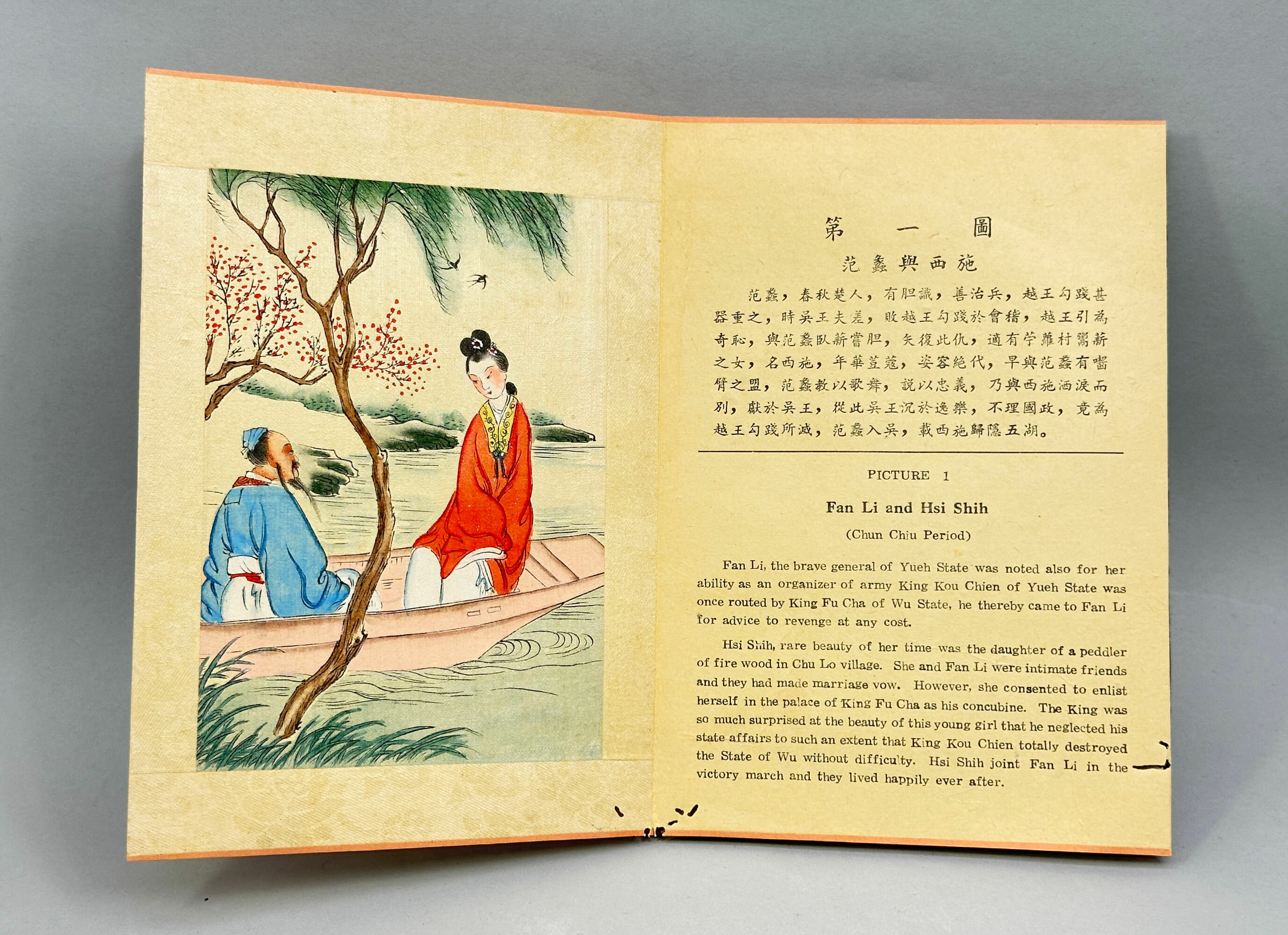
The Braves and the Fair Men of Letters and Women of Fame of Old China circa 1900
Price: £75Each of the ten characters are described in a double page spread, the right hand containing texts in both Chinese and English and the left hand with hand coloured illustrations on silk , delicately rendered. All ten ‘couples’ represent the Confucian of harmony between husband and wife. The book 'works' from right to left and the reverses of the pages are left blank. At each end are fabric covered boards, the front board with a pasted paper inscription in Chinese with a small red seal mark. Other examples are finished with boards in wood, but these are, perhaps, not original or a more deluxe version of the volume. In addition there are other books in a near identical format and presumably issued by the same publisher including ‘Stories of Ancient Chinese Noted Beauties’ and ‘Eight Fairies Festival’.
The illustrations are in excellent condition with the colours still bright. The yellow finish to the paper is original and perhaps intended to give an 'antique' effect. Each of the end boards are very slightly scuffed at the borders. Some of the pages, including the title page and the two end papers, suffer from varying degrees of 'worm hole' perforation. There are also various small tears. A full set of illustrations can be seen above and further images (and a more detailed condition report) are, of course, available on request. But these condition issues should not necessarily detract from the charm of the item which is an attempt to present some of the folk lore of China for Westerners keen to know more about the culture of a country which had attracted such popular interest during the Victorian period.

Japanese Fukagawa Jug and Stand decorated lotus, signed, circa 1900
Price: £45The Fukagawa kilns produced the best quality Imari items made in Japan in the late nineteenth century for export to the West. Their history starts with Ezaiemon Fukagawa who in 1856 became head of his family's porcelain business and in 1875 founded Koransha (The Company of the Scented Orchid) in Arita, Japan, to produce tableware for export. In 1894 the modern Fukagawa company was founded by Chuji Fukagawa, with the Fukagawa trade mark of Mount Fuji and a stream, as its trade mark. Dating of these pieces is therefore towards the end of the Meiji period (1868 - 1912) probably around 1900. While the decoration is similar to that found on other Fukagawa pieces there are few, if any parallels, and tea ware pieces by the firm are not very often seen.
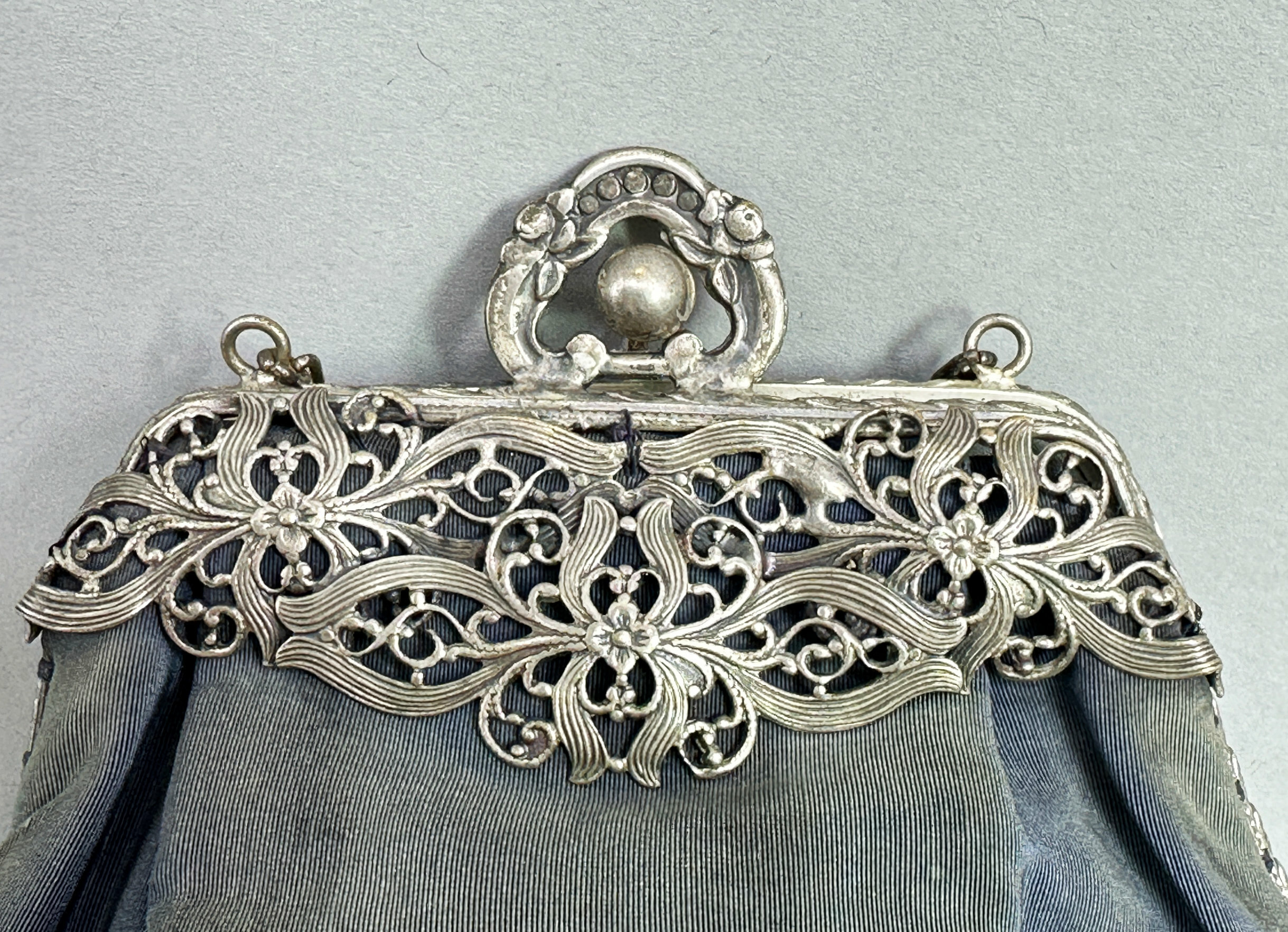
Victorian filigree style handbag c1900
Price: £25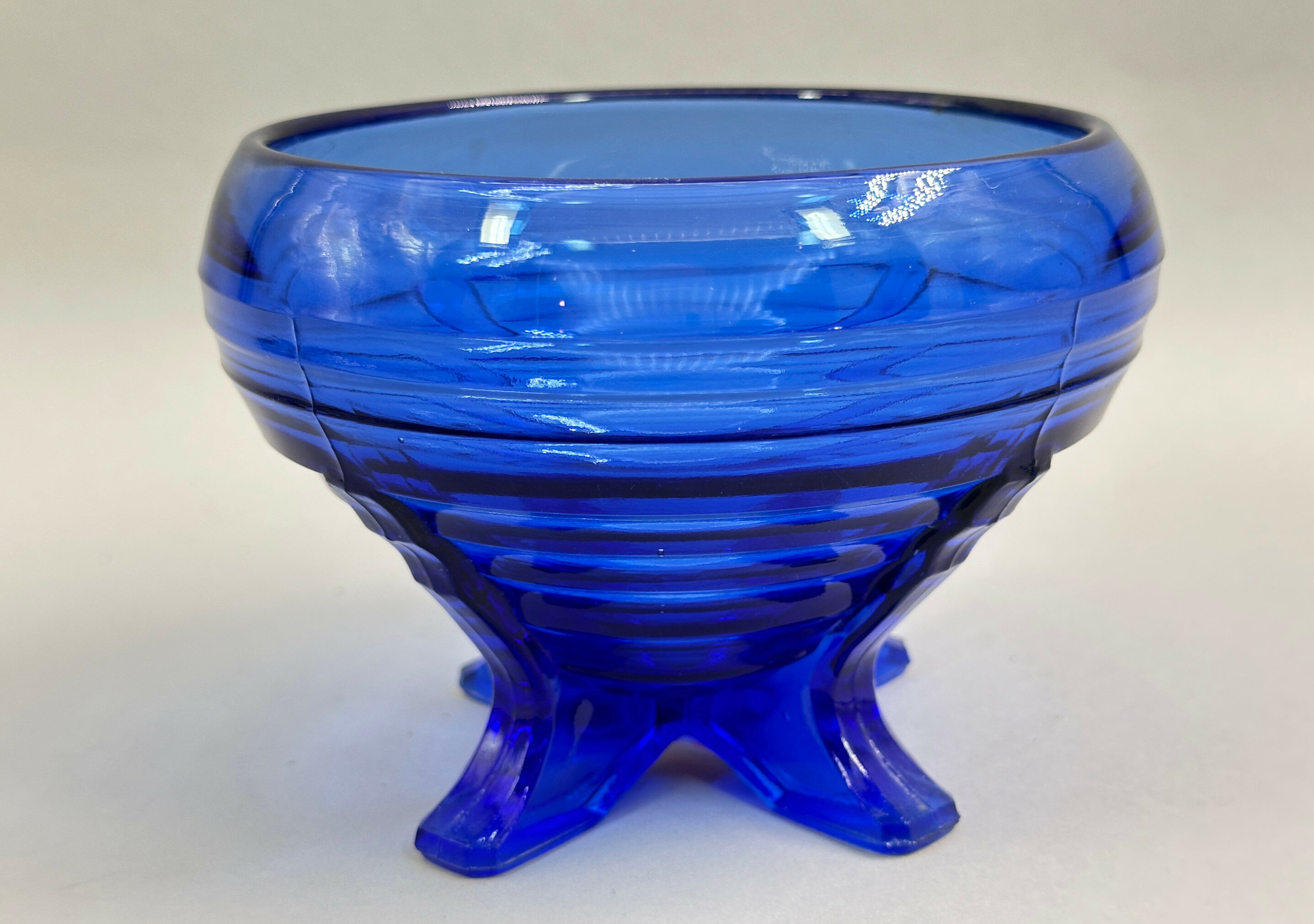
Sowerby Blue Glass Footed Bowl, 1930s/1940s
Price: £25The Sowerby family came from the North West of England near Carlisle and settled in Gateshead in the late eighteenth century. The firm Sowerby Glassworks is known from 1807 onwards and continued production until 1972, concentrating on pressed glass. Catalogues of their wares still exist and they produced pieces in a wide variety of styles and shapes which retain their popularity today.
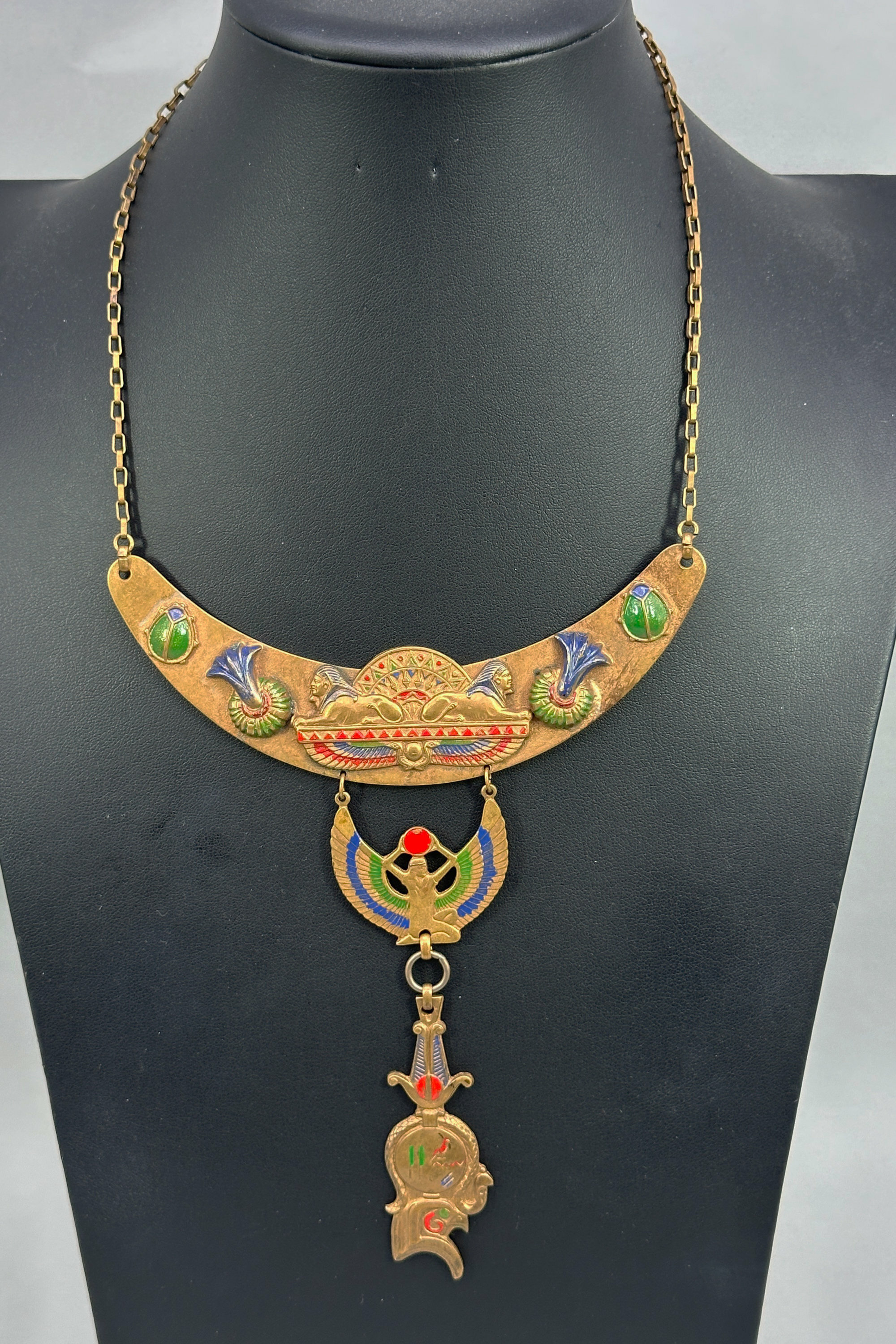
Egyptian Revival statement necklace c1920
Price: £85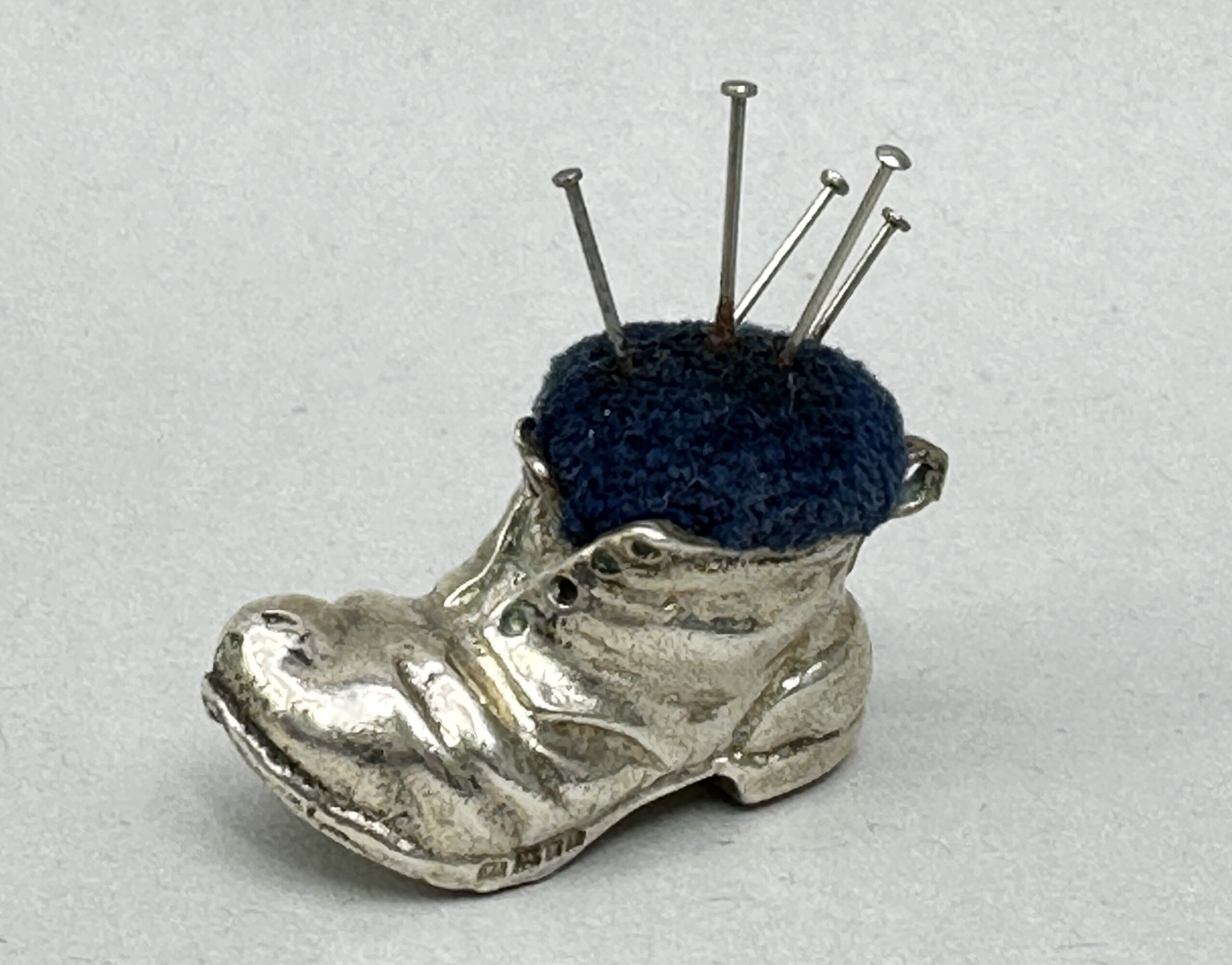
English Silver pin cushion in the form of a boot, London 1991
Price: £75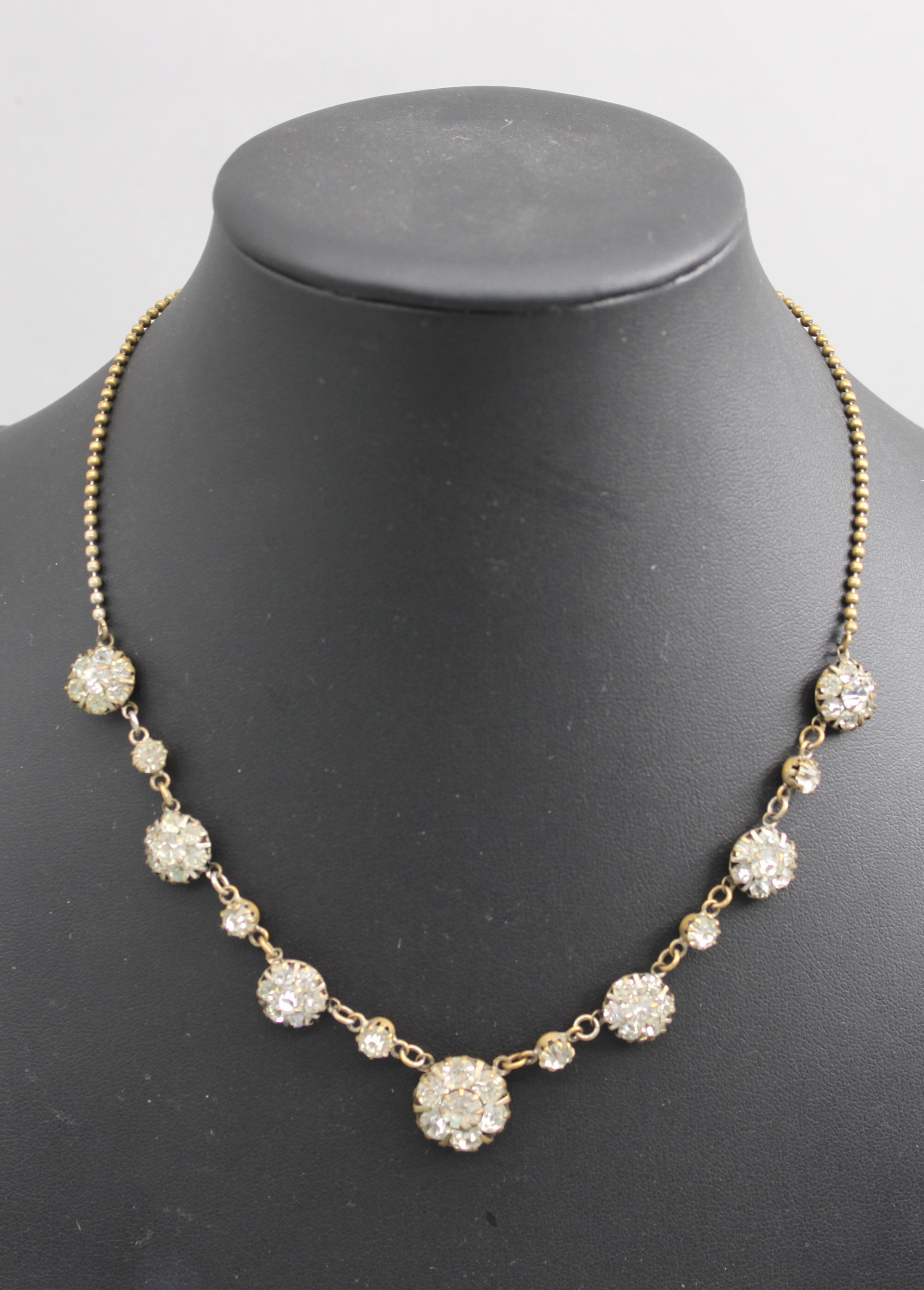
Exceptional Paste necklace 1940s
Price: £25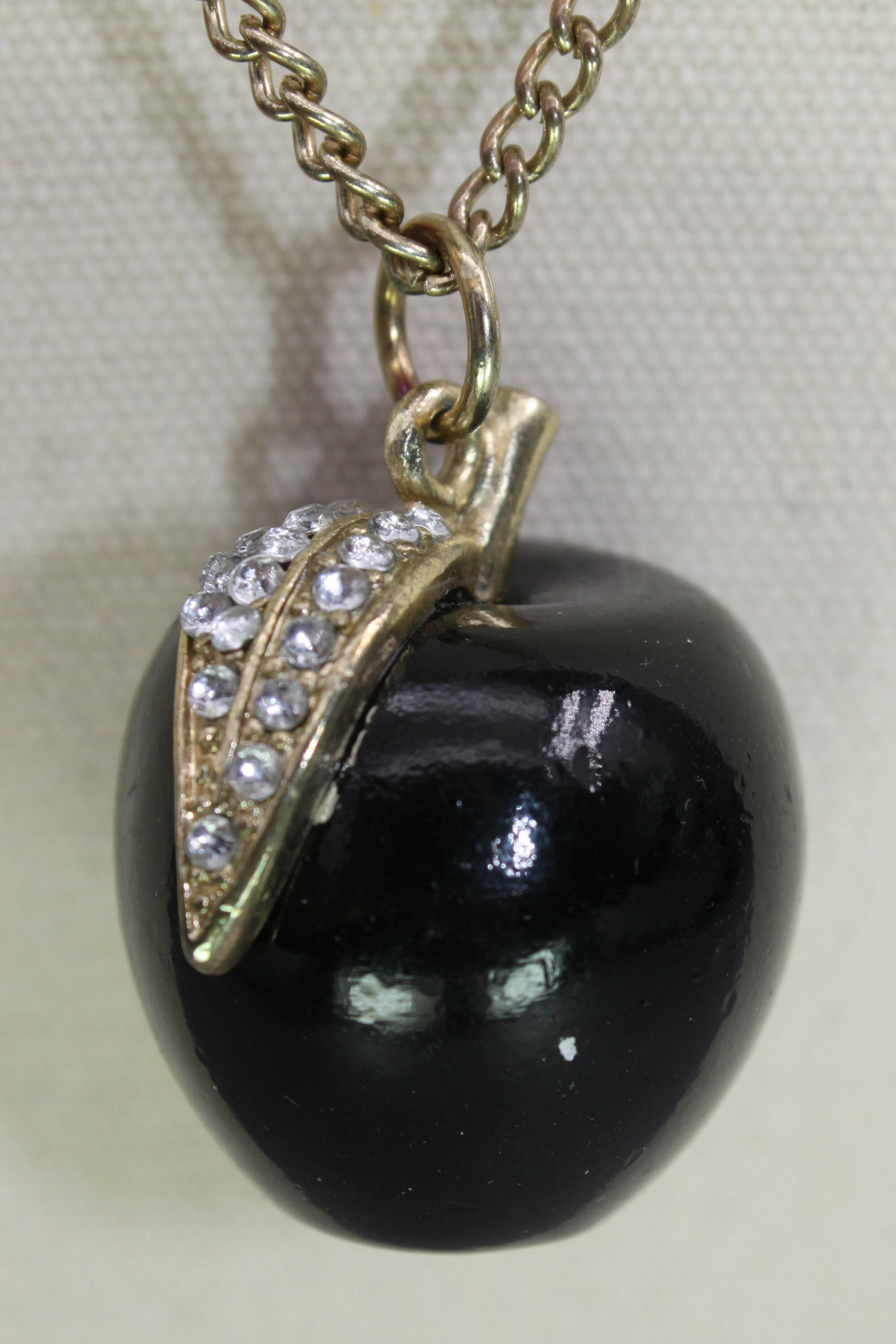
Black glass apple pendant on a long chain, 1980s
Price: £25PLEASE NOTE THAT THERE IS FREE UK SHIPPING ON THIS ITEM. For international buyers the shipping cost will be reduced by the UK shipping cost, so don't worry if you are outside the UK, you still receive this benefit!
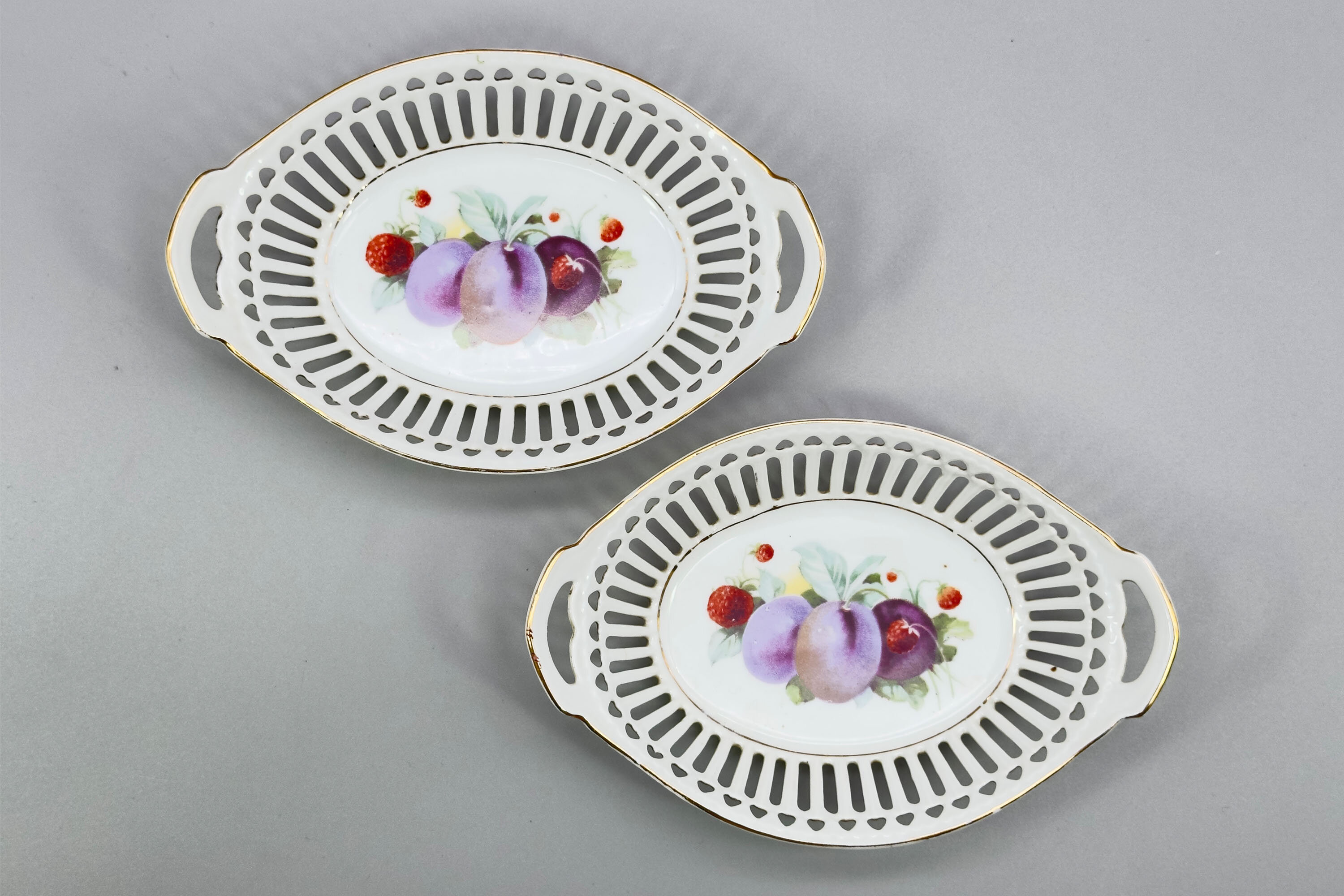
Pair of continental style openwork border Dishes, probably Chinese C20th
Estimate: £10 – 20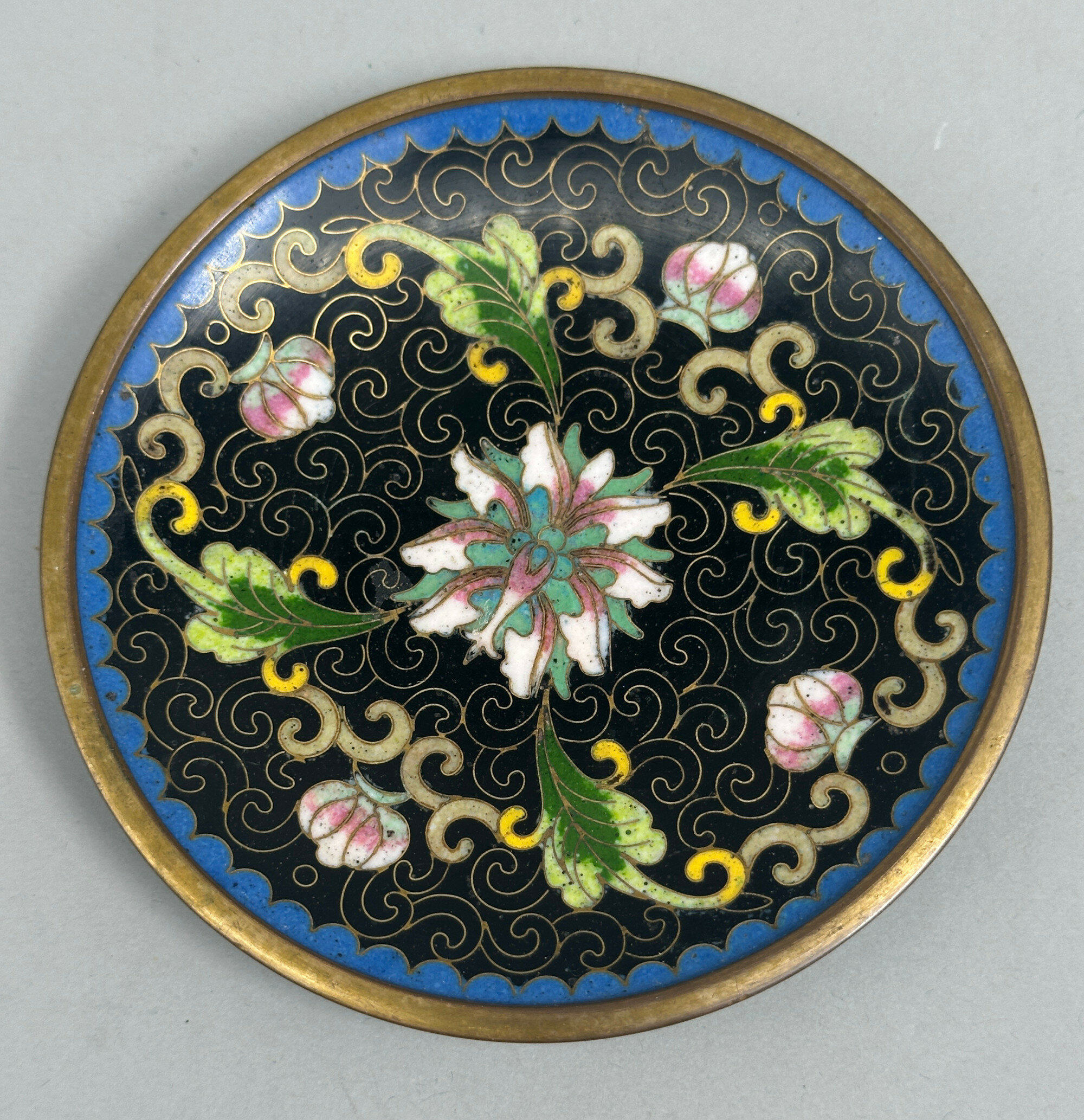
Small Chinese Cloisonné Dish decorated lotus, C20th
Price: £25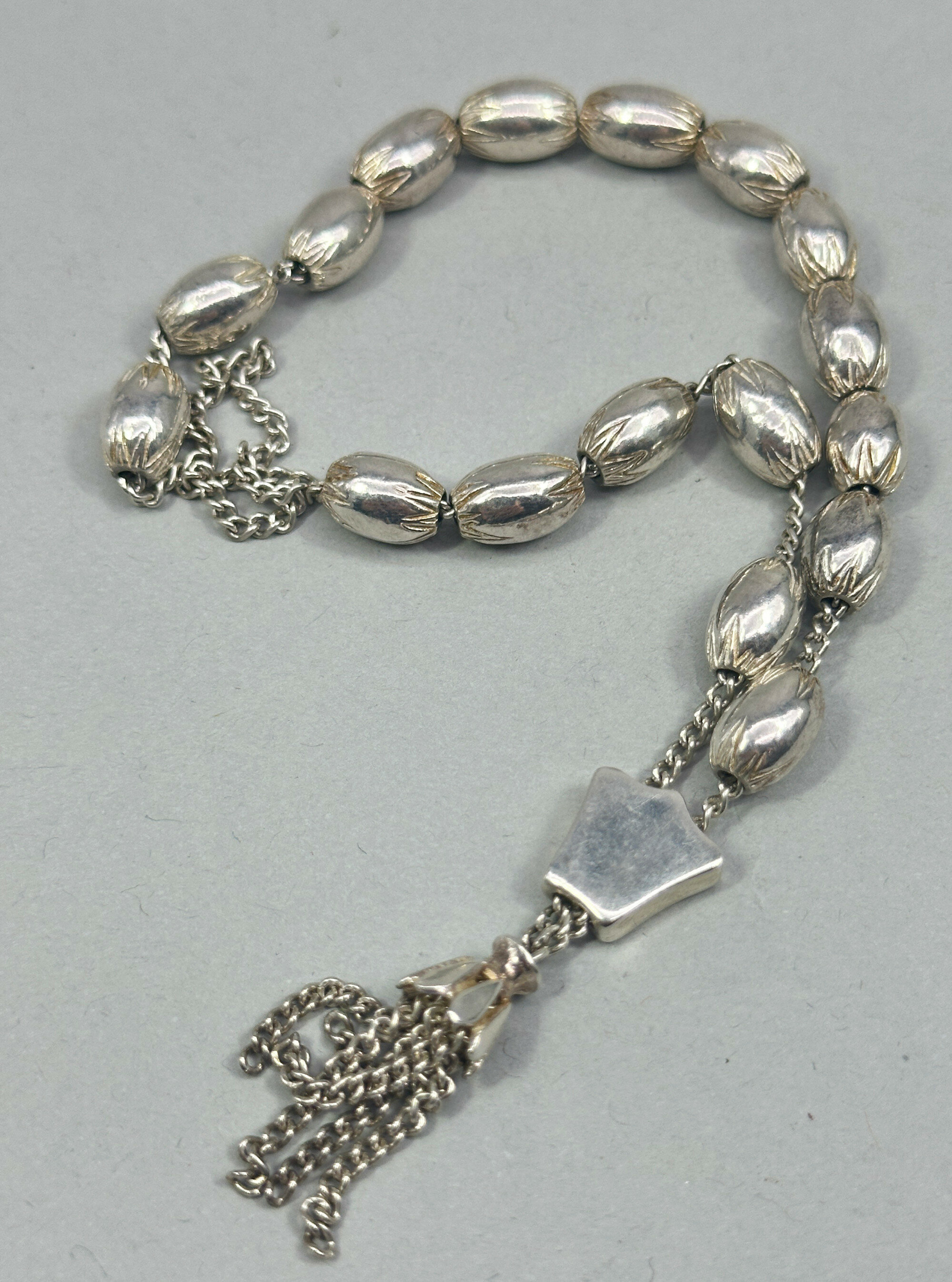
Silver prayer beads with seventeen Beads, 20th century
Price: £75
West German Bay Keramik Pitcher with stylised floral designs, late C20th
Price: £45Founded by Eduard Bay in the 1930s and based in Ransbach Baumbach in the heart of the main West German pottery producing region, Bay Keramik grew to be one of the most prolific producers of ceramics in the ‘West German’ style and continued production into the 1990s. This piece retains its original paper label and the format of this allows dating to the 1970s/1980s. The jug has almost a slightly rustic feel and recalls much earlier German ceramic items. The numbers on the base indicate the form number but it has not been possible to identify this.
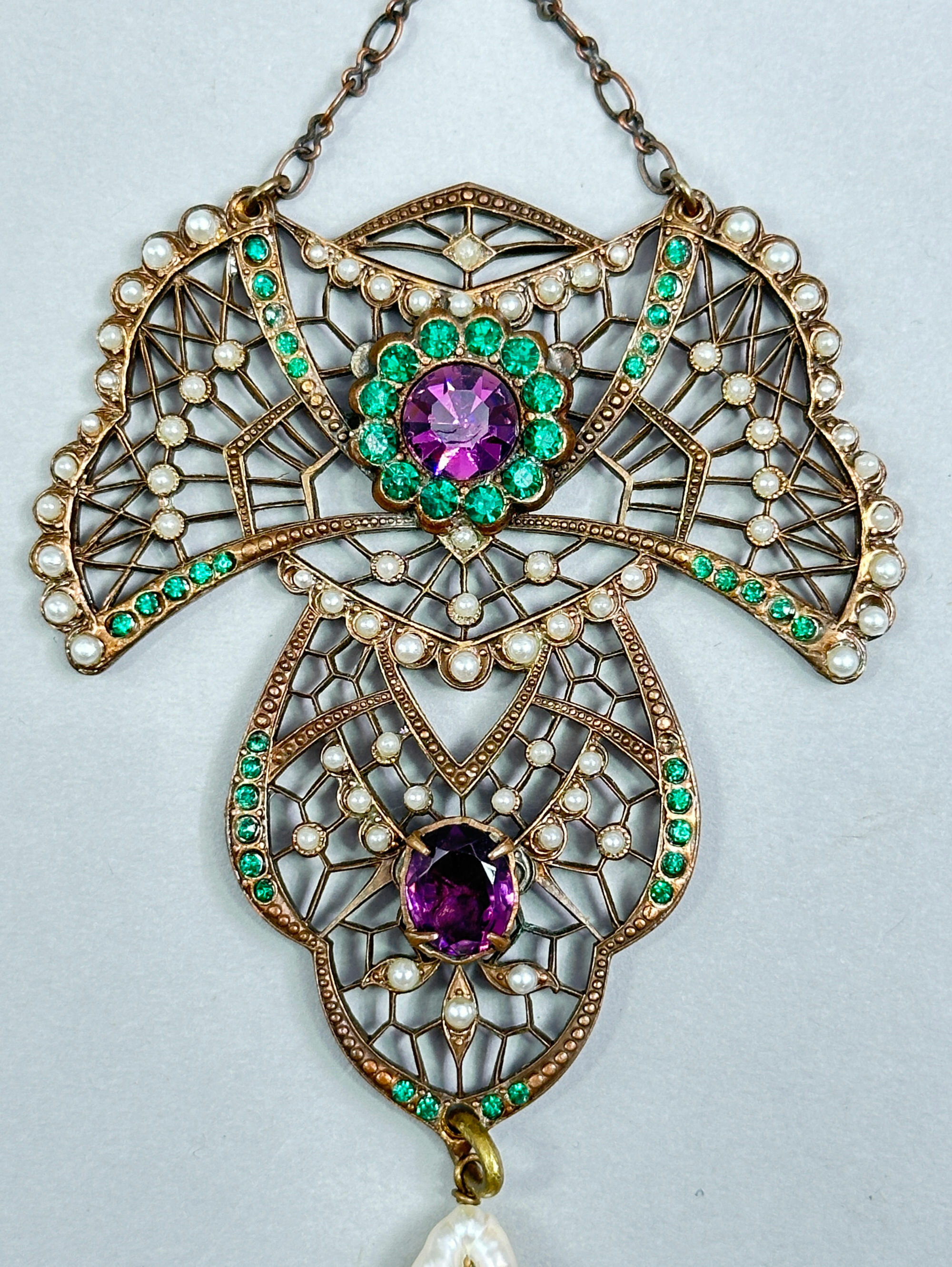
Art Deco statement necklace with real pearls and paste stones c1920
Price: £100
Japanese Blue and White Porcelain Bowl decorated with hydrangea, early C20th
Price: £25Hydrangeas flourish in Japan and also carry a hidden meaning of apology and gratitude based on a mythical story of an Emperor, who angered a woman he loved by neglecting her, and gave her in recompense a bunch of blue hydrangeas as a symbol of his deep emotion and gratitude. Used here as a decorative motif, the painting of the flowers is skilful and elegantly combined with the plainer exterior. The paste of the foot rim suggests an early C20th dating, perhaps to the late Taisho era (1912-1926).

Charming pair of silver piglet earrings
Price: £35
Unusual Victorian style earrings
Price: £15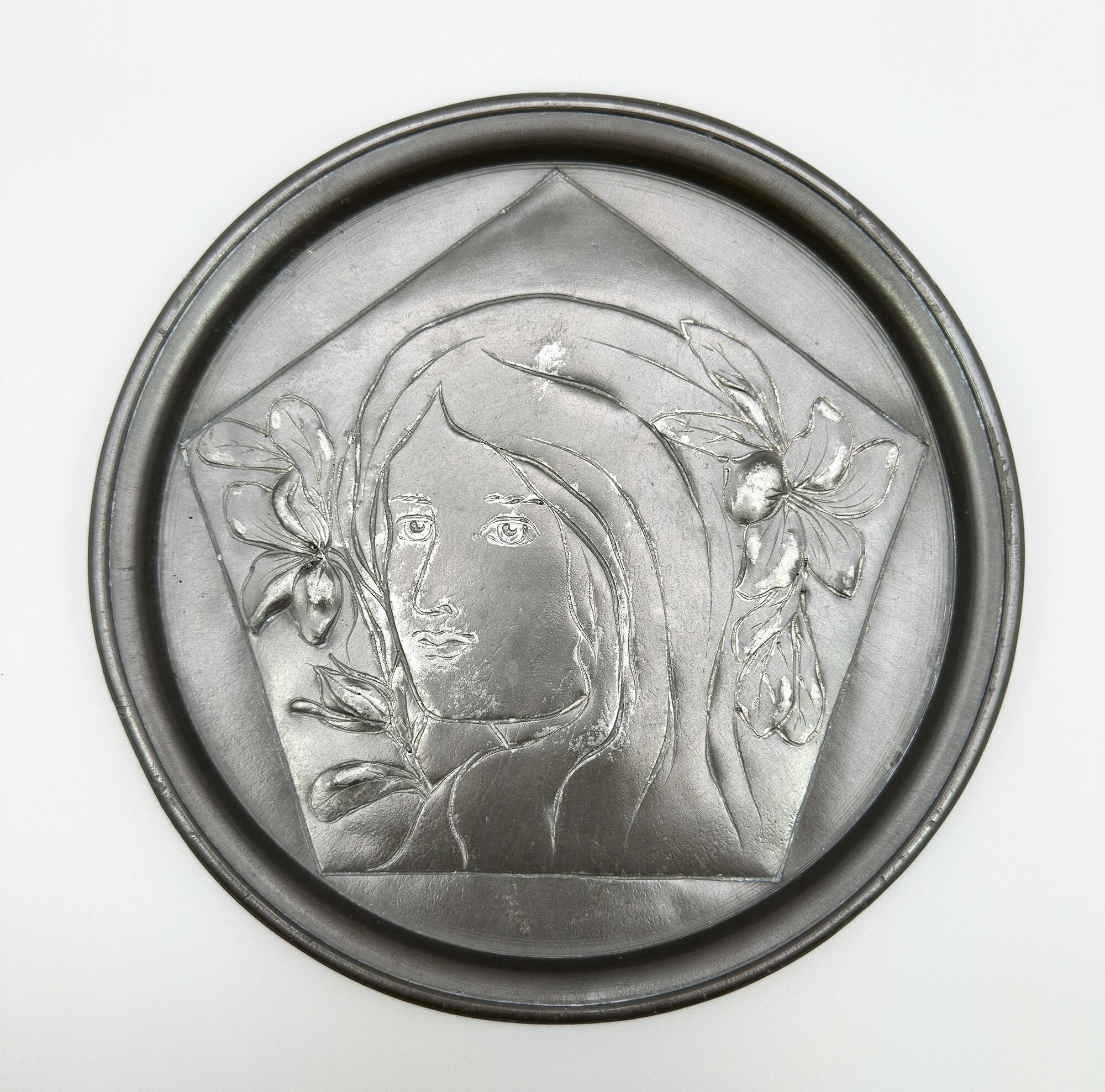
Pewter Plate in the Art Nouveau style, marked Joh. Heidl, C20th
Estimate: £20 – 30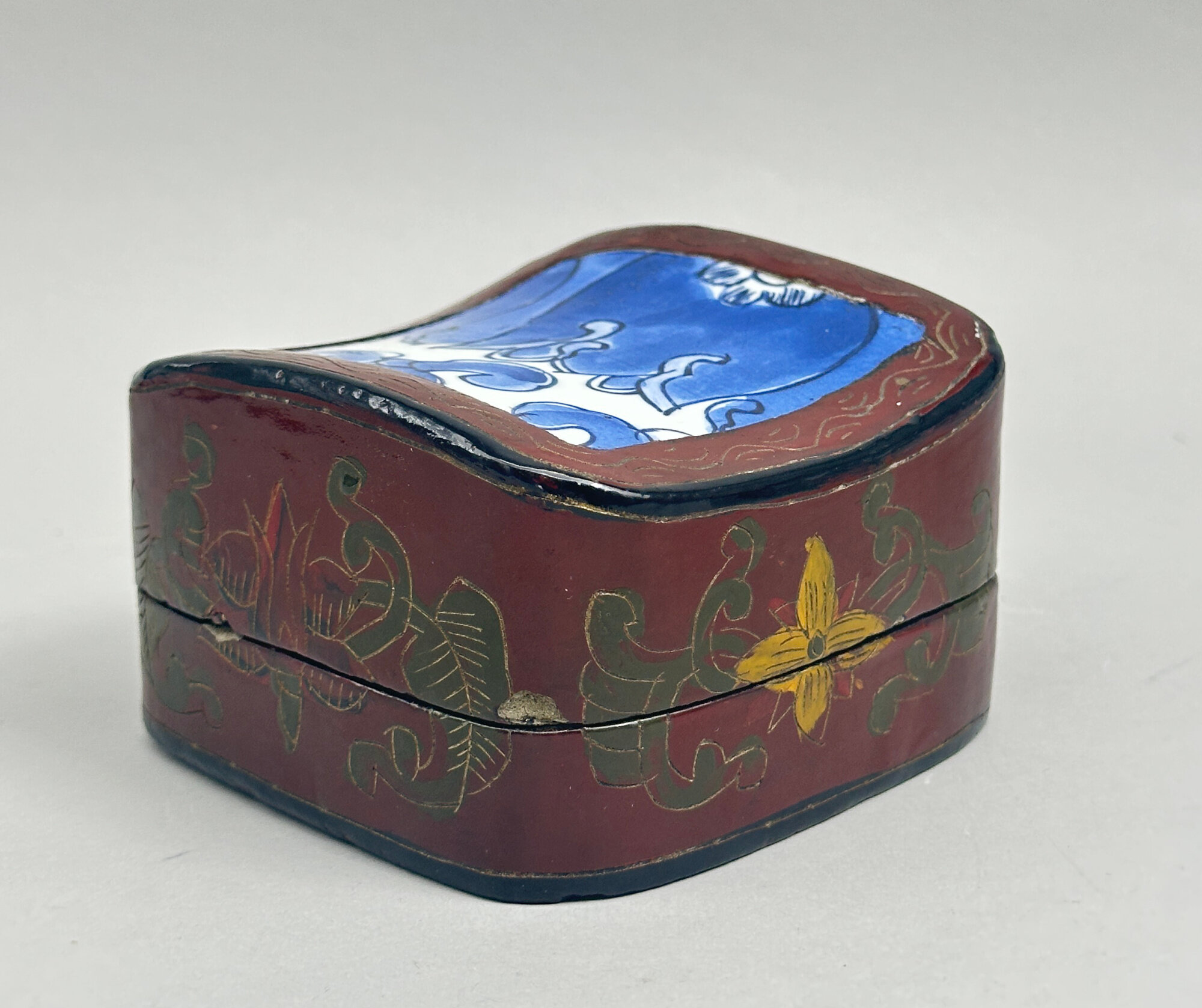
Vintage Lacquer Box with an inset ceramic Shard, probably Persian C20th
Price: £25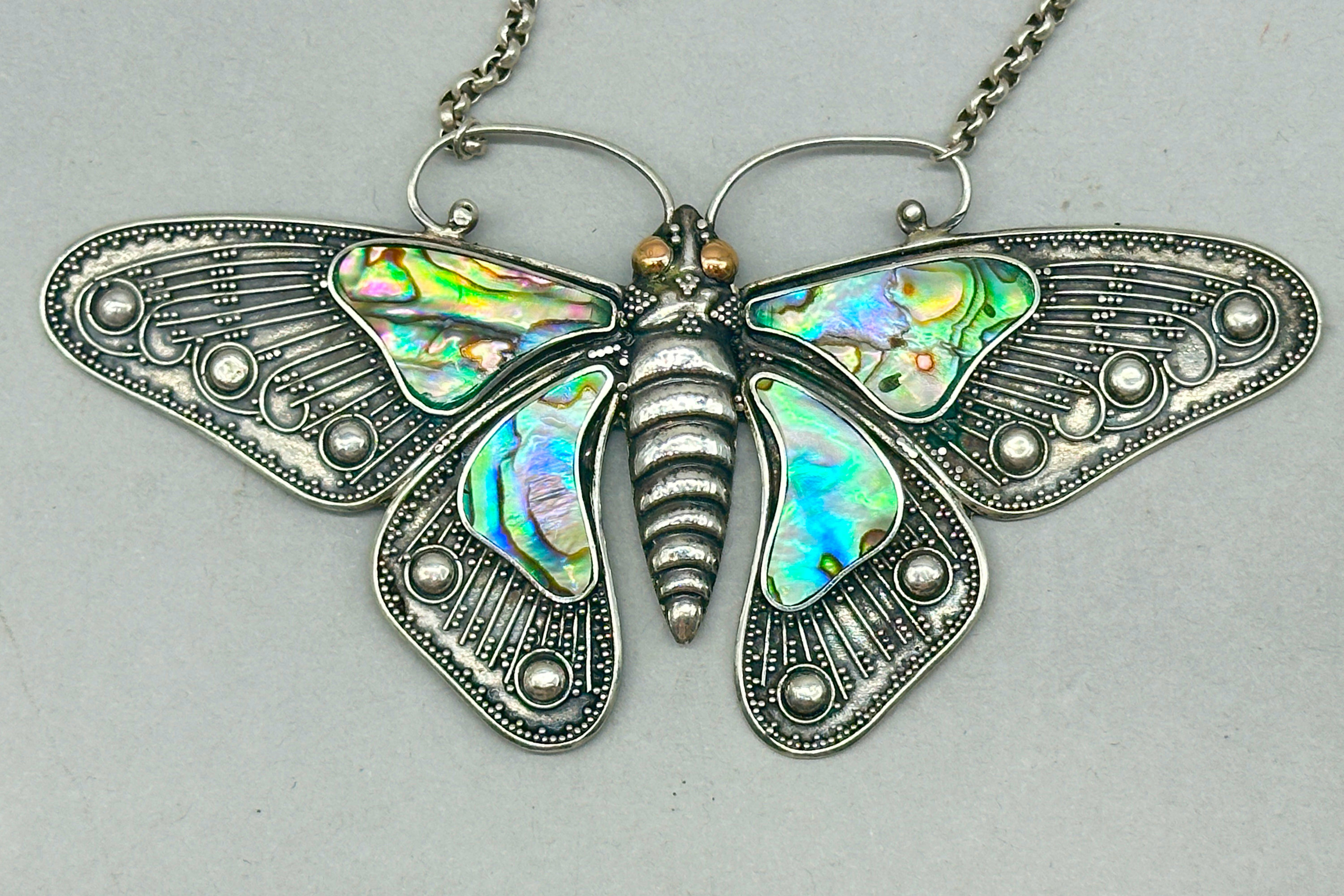
Silver Butterfly form Pendant set with Abalone, Bali, C20th
Price: £95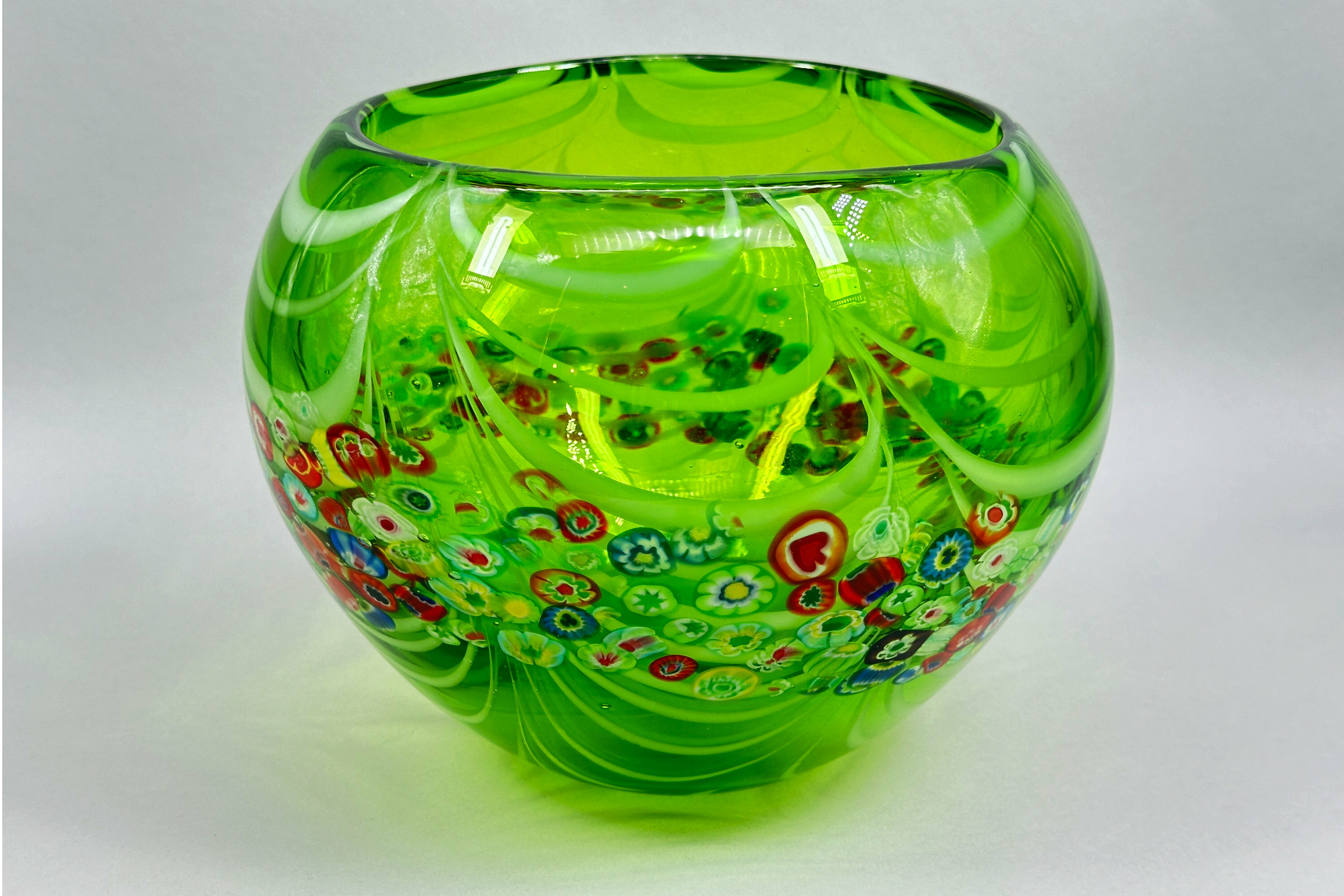
Green Murano Millefiori Latticino Glass Bowl, 1960s
Price: £150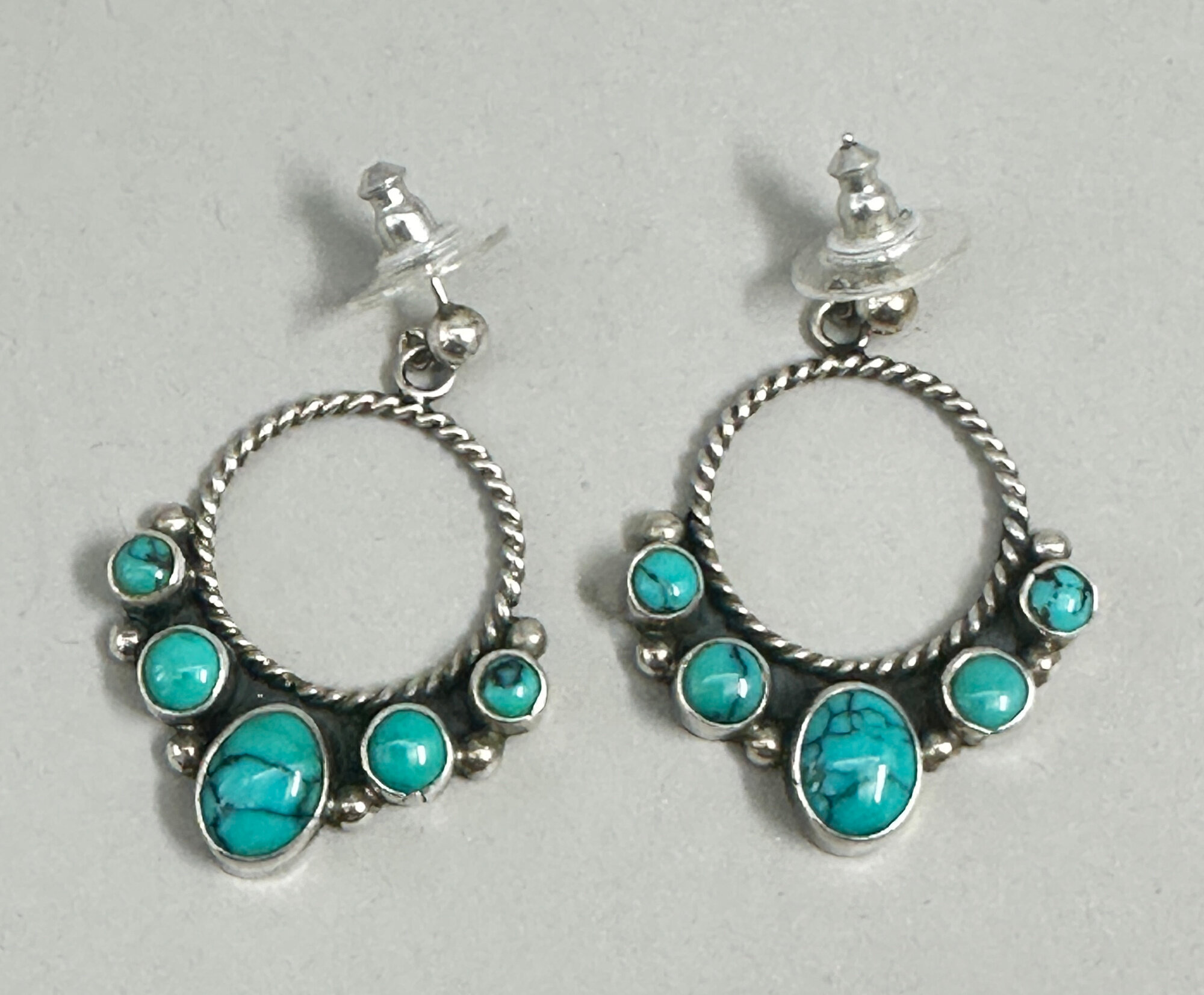
Pair of Navajo Kingman turquiose earrings, signed, 1970s
Price: £65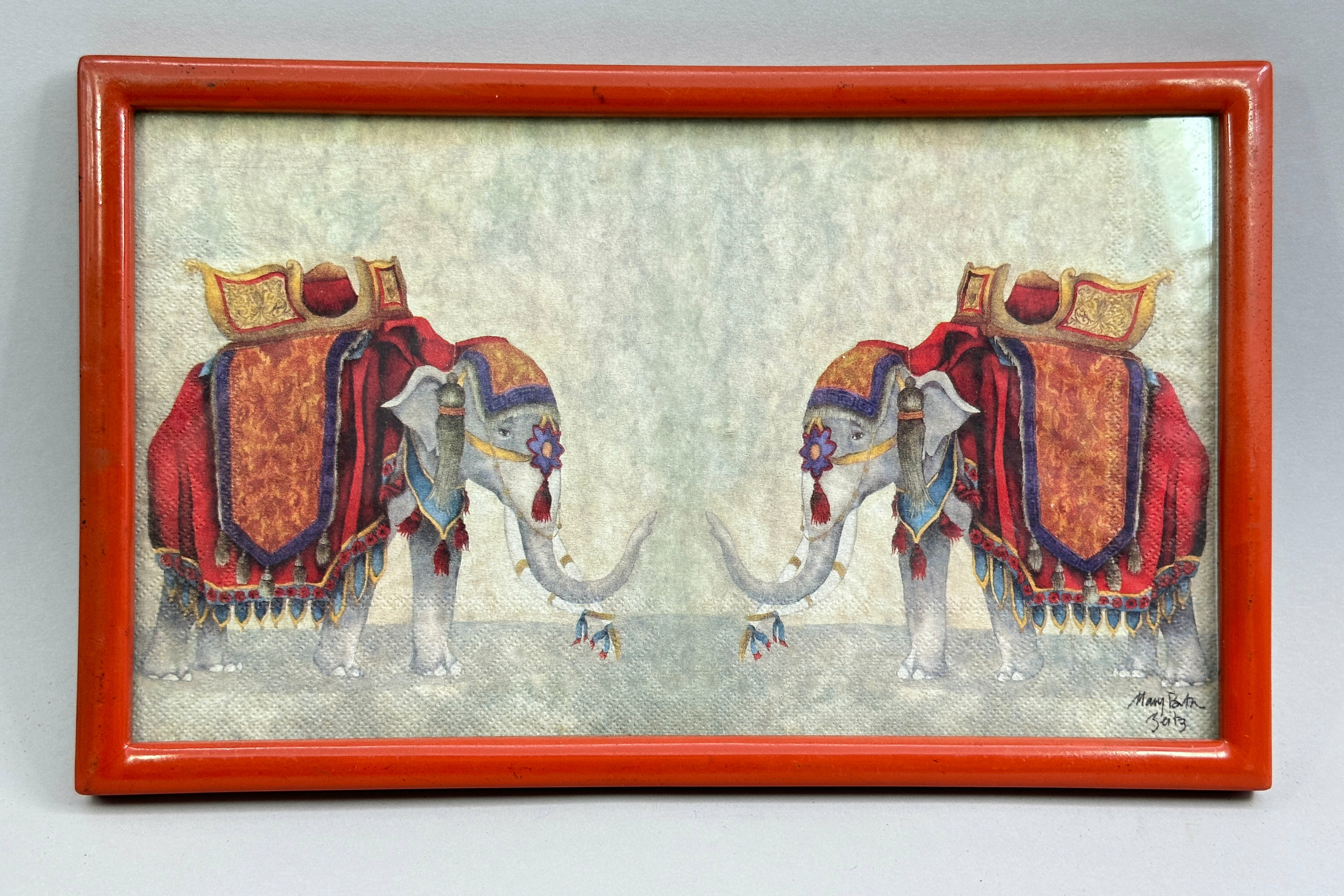
Framed Picture of Two Elephants signed Mary Beth Zeitz and dated 2003
Price: £25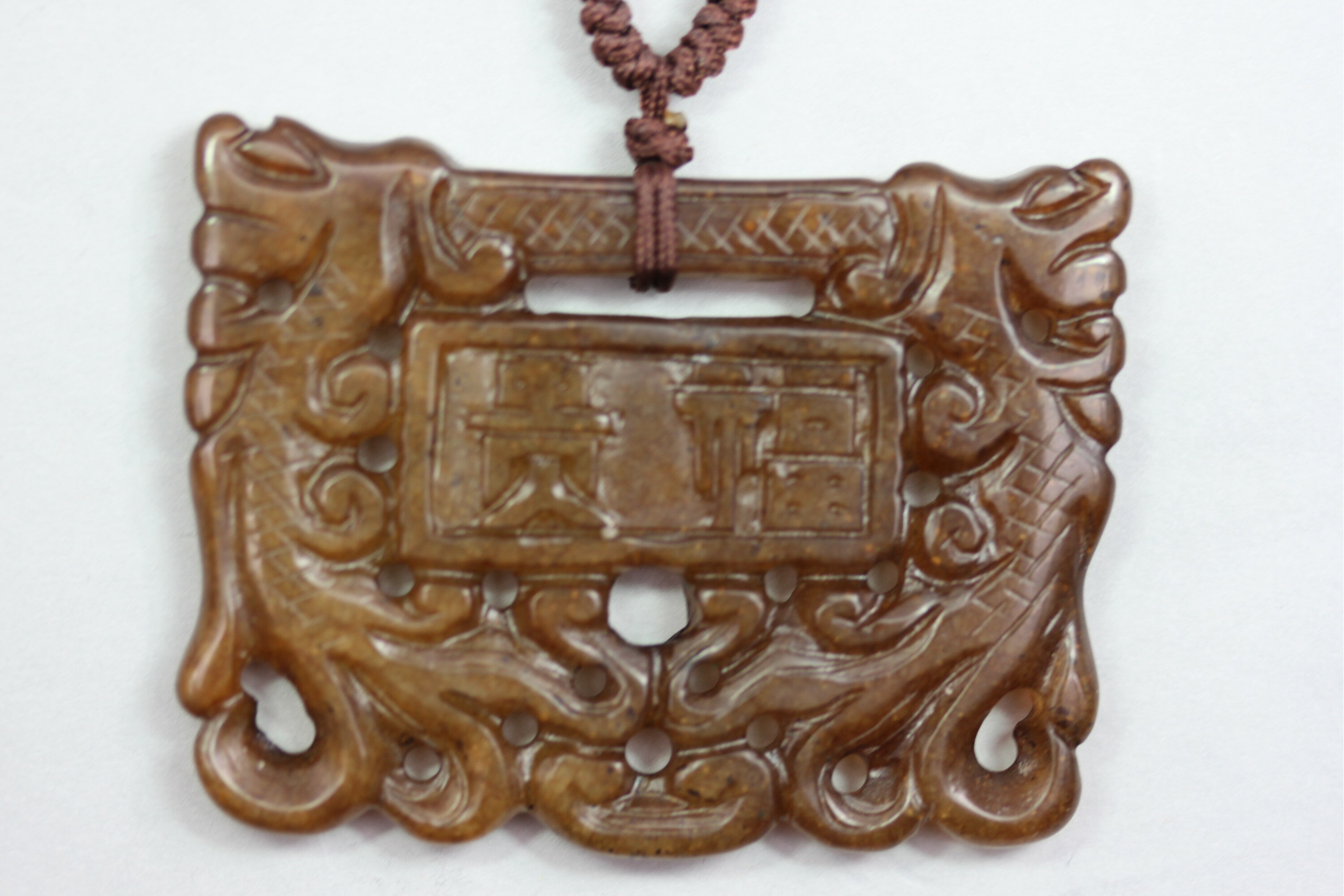
Carved Chinese brown jade necklace
Price: £55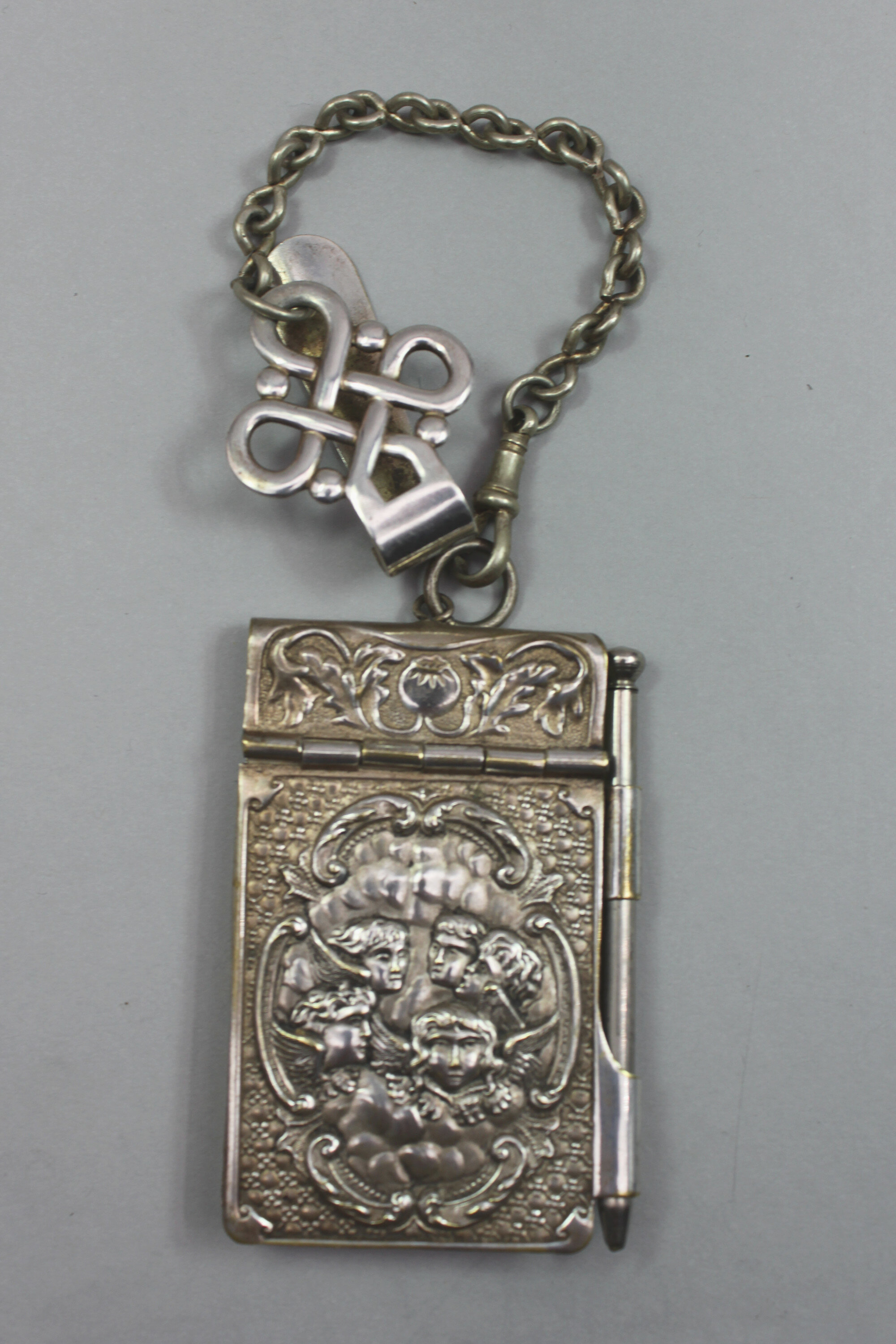
Victorian small note pad for chatelaine
Price: £45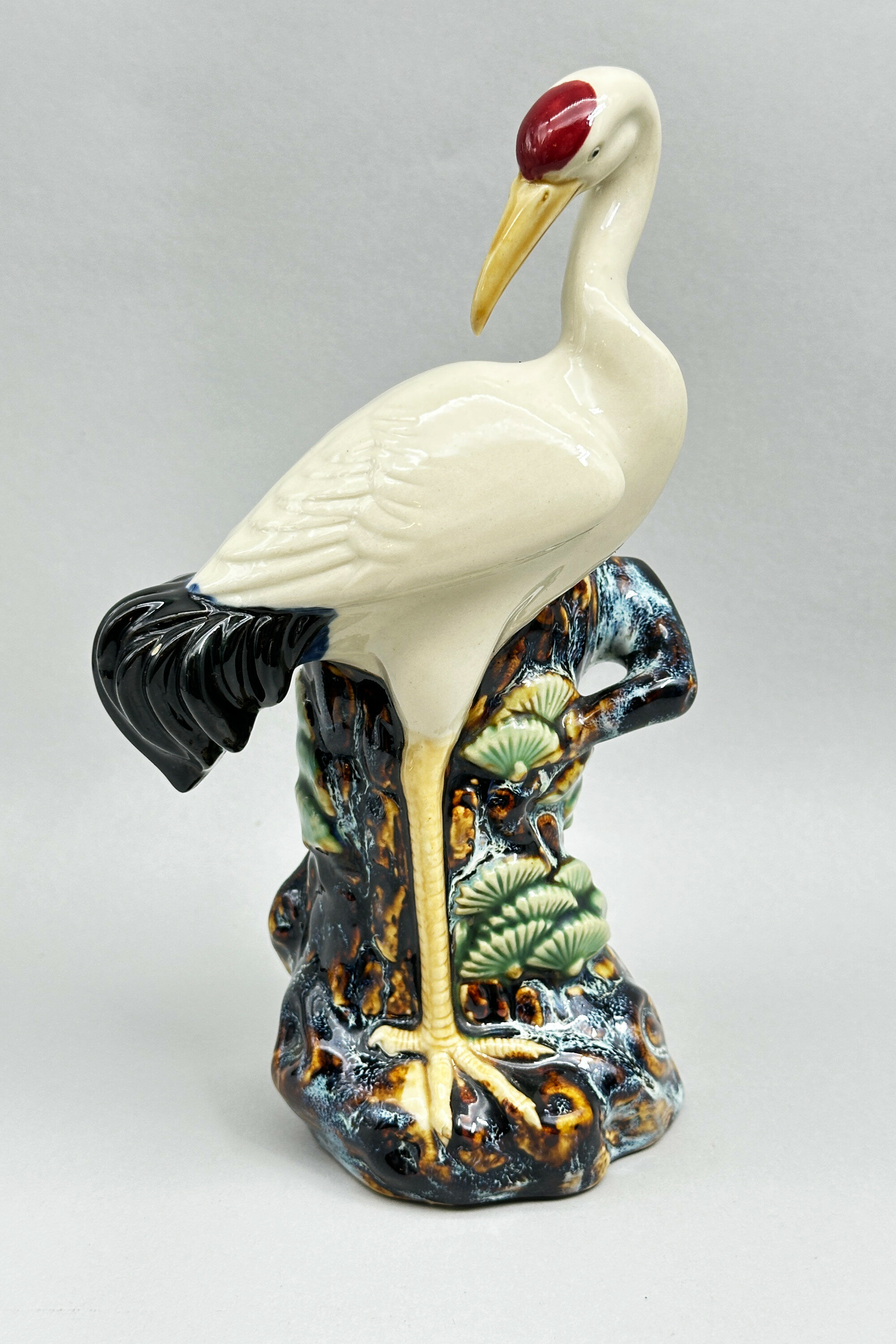
Chinese Majolica Style Brush Holder modelled as a Crane, mid C20th
Estimate: £30 – 40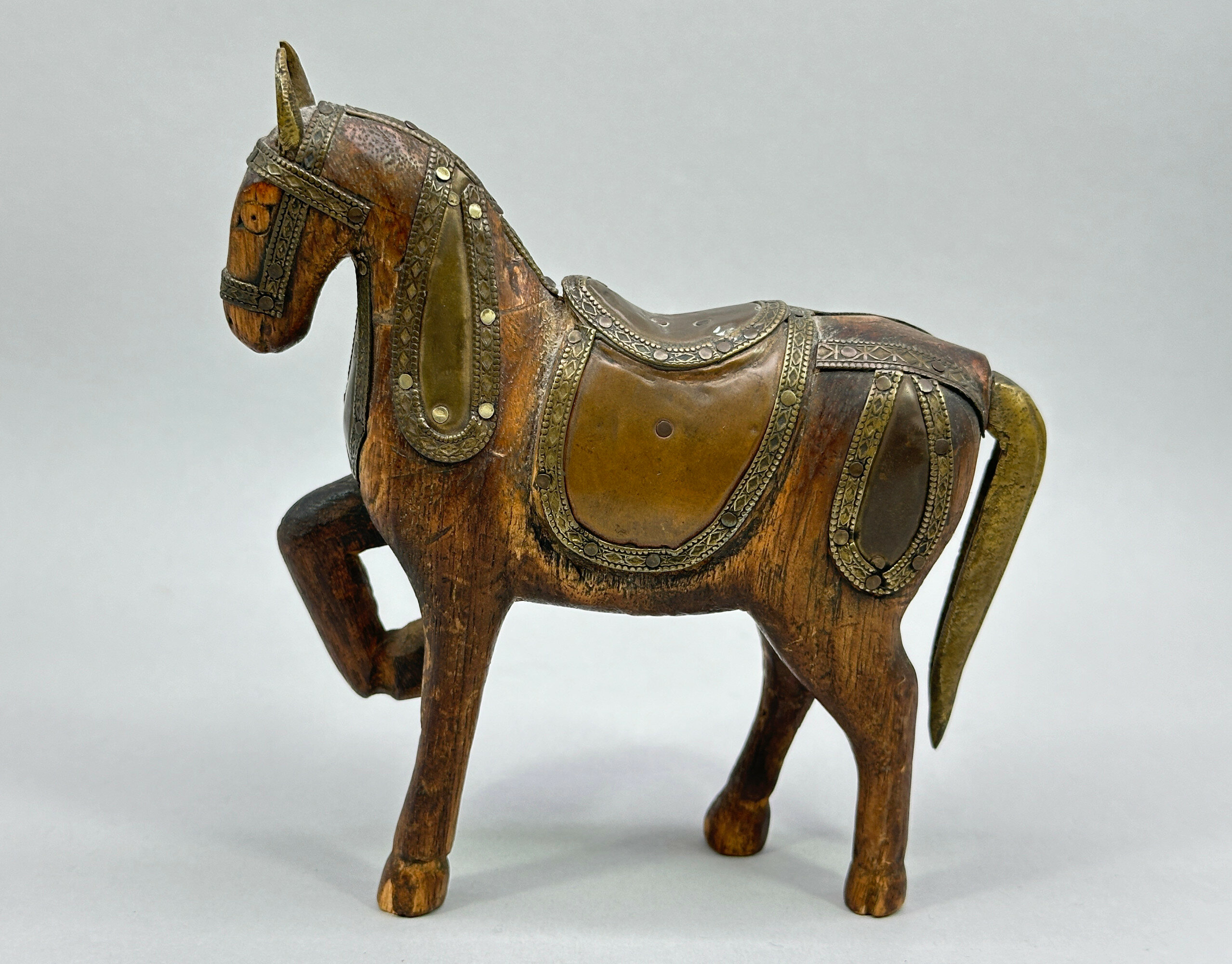
Indian wooden toy model of a Horse with metal fitments, early C20th
Price: £25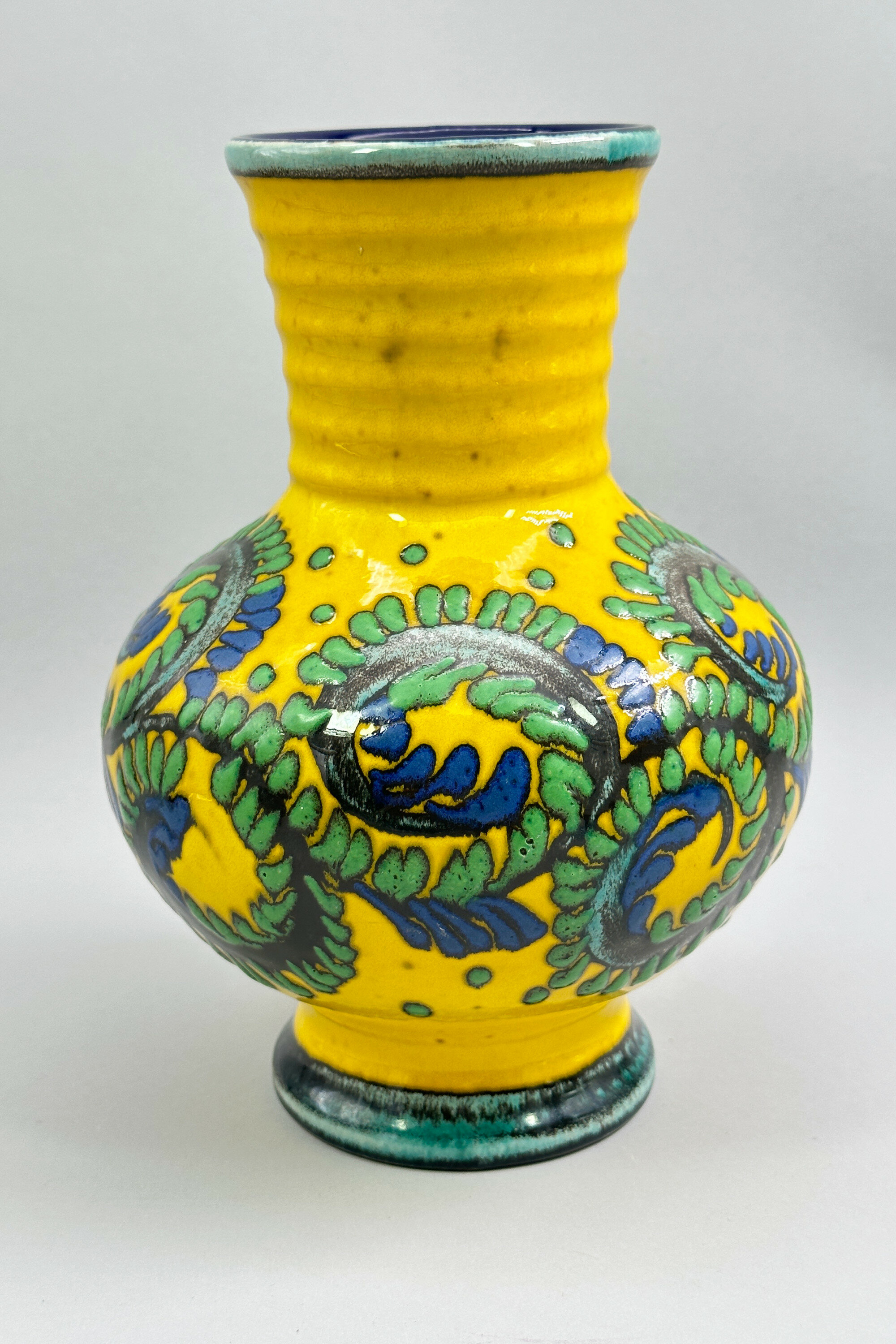
West German Ceramic Vase, Marei, 1970s
Price: £45While not stamped with a maker's mark, vases of this type are attributed to the West German Ceramics factory Marei which produced pieces from 1949 to 2016. Marei was the commonly used abbreviation for the firm's name which was Majolikafabrik Rheinbach Jean Fuss and Sohn. The pieces are distinguished by the use of a reddish clay but this was sometimes more brown or dark brown depending on the suppliers used. Marks are usually impressed into the base although these are often just pattern numbers, as here. Many pieces are unmarked and some are stamped 'MADE IN GERMANY' or 'W.GERMANY'. The pattern number here is '7104'and is found on similar pieces with the same shape but different decoration. This vase was probably made in the 1970s and is typical of the striking designs the firm produced.

A Celtic or Pictish Brooch decorated with Horses, St Justin of Cornwall, circa 1980
Price: £10Inverurie is a town in Scotland where Pictish carved stones are found in the graveyard dating from the 7th Century. The Picts were a tribe of peoples living in the East and North of Scotland. Little is known of their origins but they were called 'Picts' by the Romans because of their painted and tattooed bodies. The Inverurie horse is the inspiration for this brooch. The actual design of the three horses was created by George Bain (1881-1968) the Scottish artist and teacher, famous for chronicling Celtic Art.
St Justin of Cornwall is well known for the production of 'craft' pieces in a variety of forms and materials. This piece probably dates to the 1980s and certainly cannot be found in their current catalogue.
PLEASE NOTE THAT THERE IS FREE UK SHIPPING ON THIS ITEM. For international buyers the shipping cost will be reduced by the UK shipping cost, so don't worry if you are outside the UK, you still receive this benefit!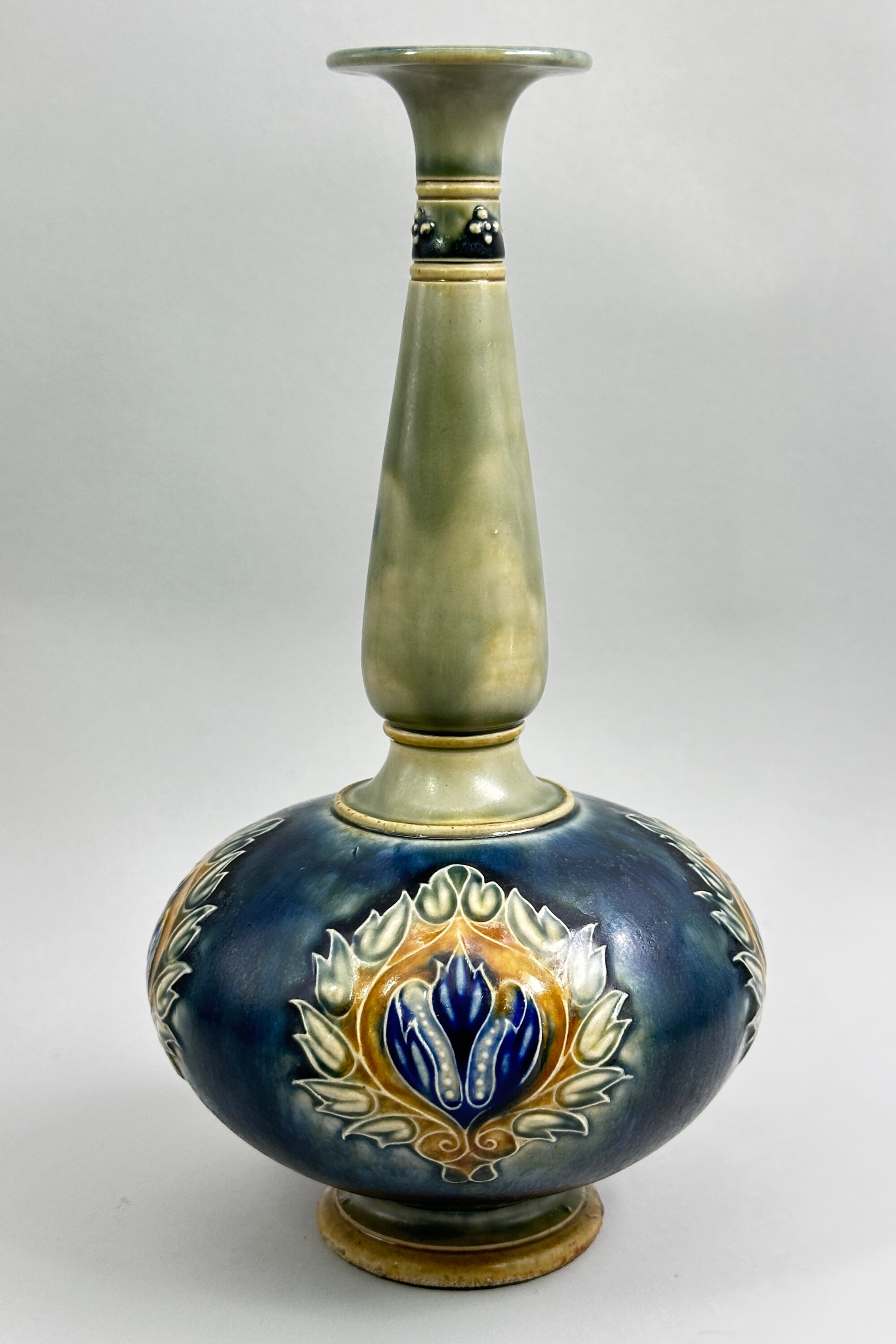
Royal Doulton bottle form Vase decorated with flowering lotus, early 20th Century
Price: £75The Doulton pottery originally had its first factory in Lambeth, London. Set up in 1815 by John Doulton, who is rumoured to have spent his life savings of £100 in starting the business, the firm concentrated on making pipes and utilitarian works. But in the 1880s the Company moved to Staffordshire and began making fine bone china tableware and decorative items. The pottery was located in Burslem, Stoke-on-Trent and has manufactured high quality ceramics and porcelains ever since, receiving a Royal Warrant in 1901.
This piece is typical of the glazed pottery pieces made in the late nineteenth and early twentieth centuries. A muted palette of colours was used and a variety of forms created with many artists taking a hand in the decoration. Most of the pieces are signed, as here. The pattern number indicates a date after 1894, but the Royal Warrant mark means a dating in the early 1900s. Perhaps a timing in the Edwardian era (1901-1910) is the most likely.
This vase is an excellent example of the creative designs which Doulton produced. As often, there is a slight Oriental influence but the style and design are unmistakeable.
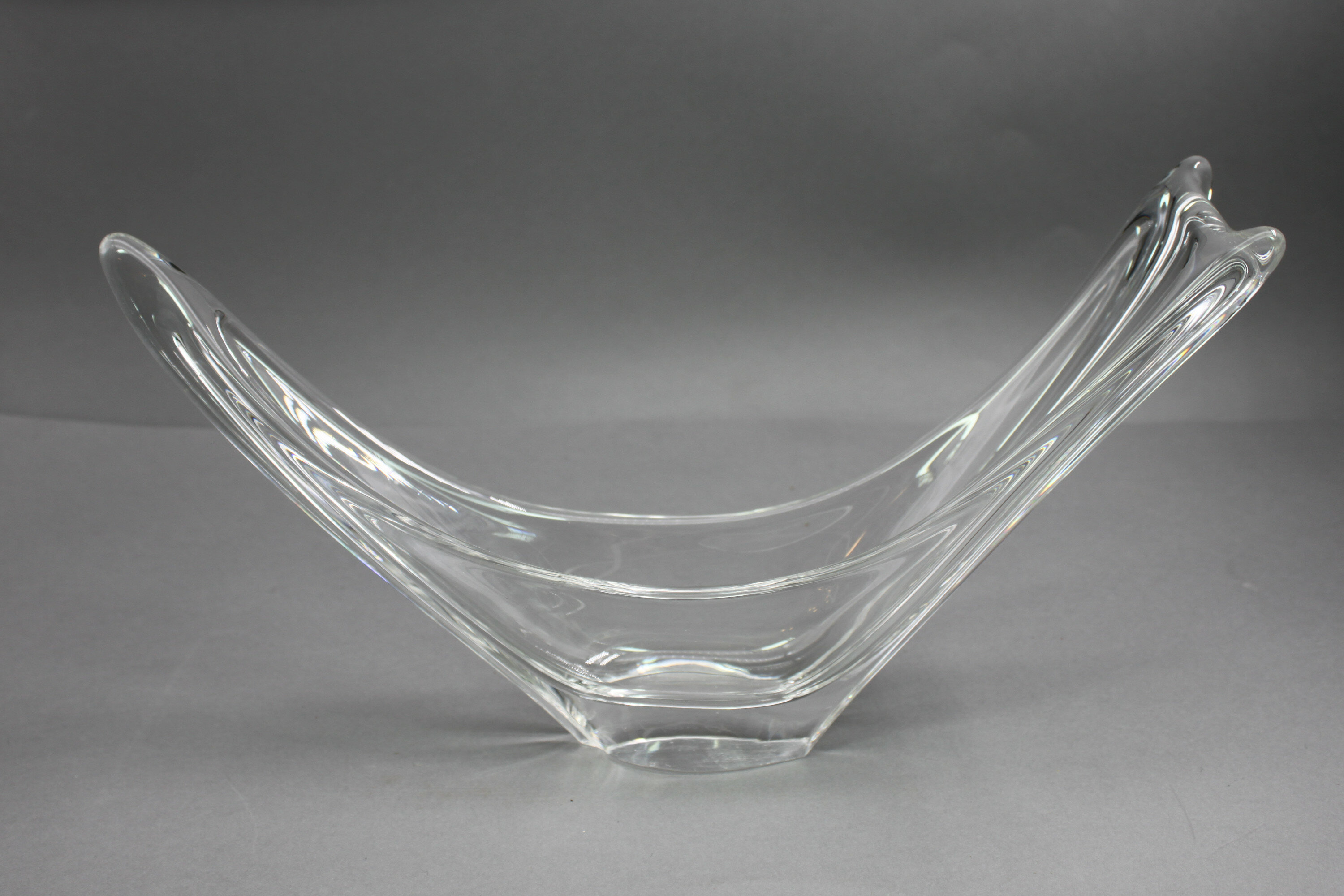
Daum Crystal Glass Swallowtail Bowl, signed Daum-France circa 1960
Price: £150Vases in this form were produced by the well known French maker Daum in the 1950s and the 1960s. The sizes and designs can vary with some examples measuring up to two feet and intended as table ornaments. This piece is rather smaller and perhaps more elegant. The crystal glass is of extremely high quality and reflects the light in a very attractive way. The weight is good and the glass itself is thickly blown and expertly formed, The flat base shows signs of bevelled edging at the exterior and one of the sides bears the typical etched Daum mark with 'Daum' and 'France' separated by a device comprising an upright line with two crosses.
The more petite size and the quality of the manufacture and design make this a most appealing example of Daum's work at its best. Dating can be assumed to be around 1960 if not slightly before. A desirable piece indeed for collectors of twentieth century art glass.
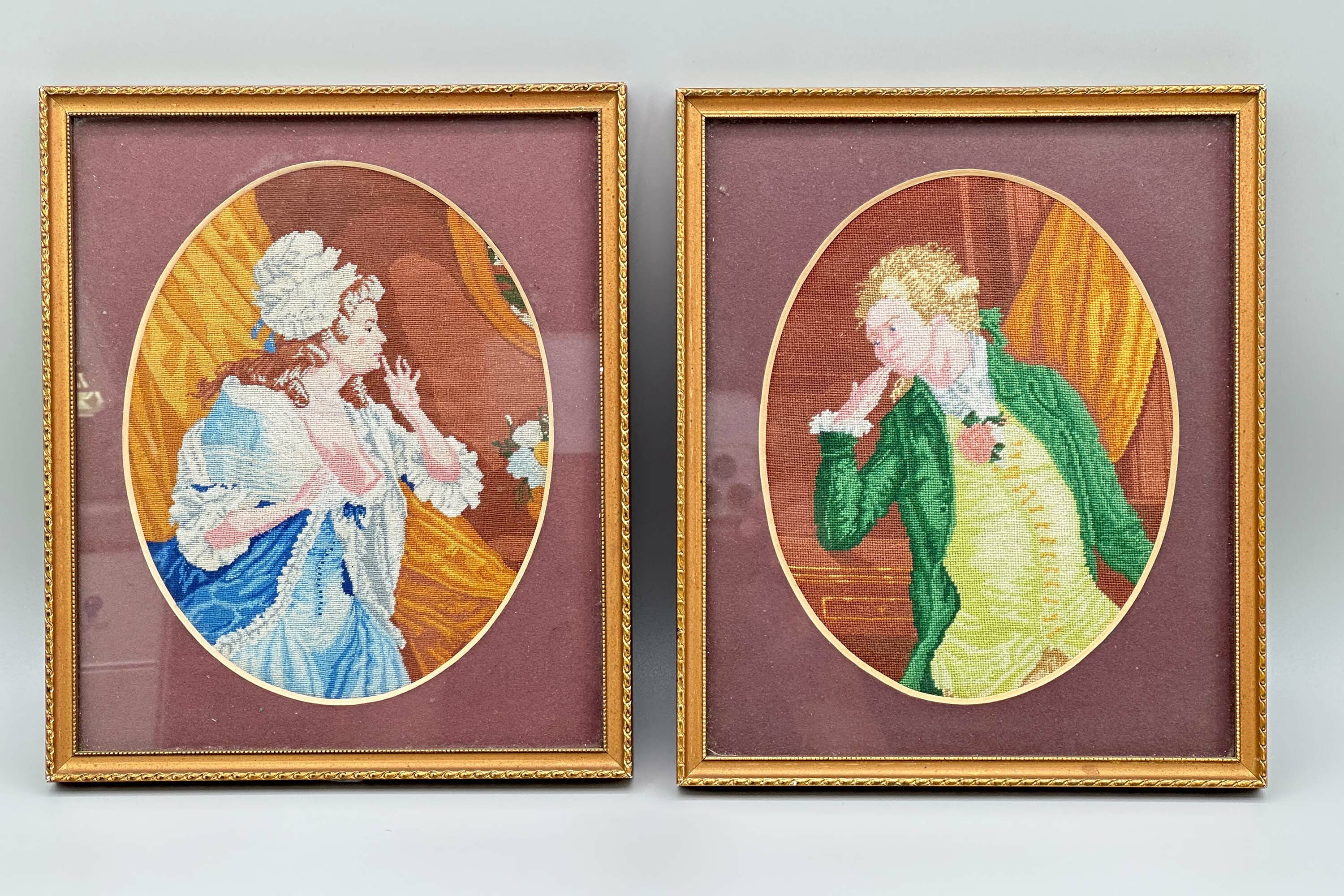
Pair of petit point Tapestry Pictures, The Needlewoman Shop London, mid C20th
Estimate: £30 – 40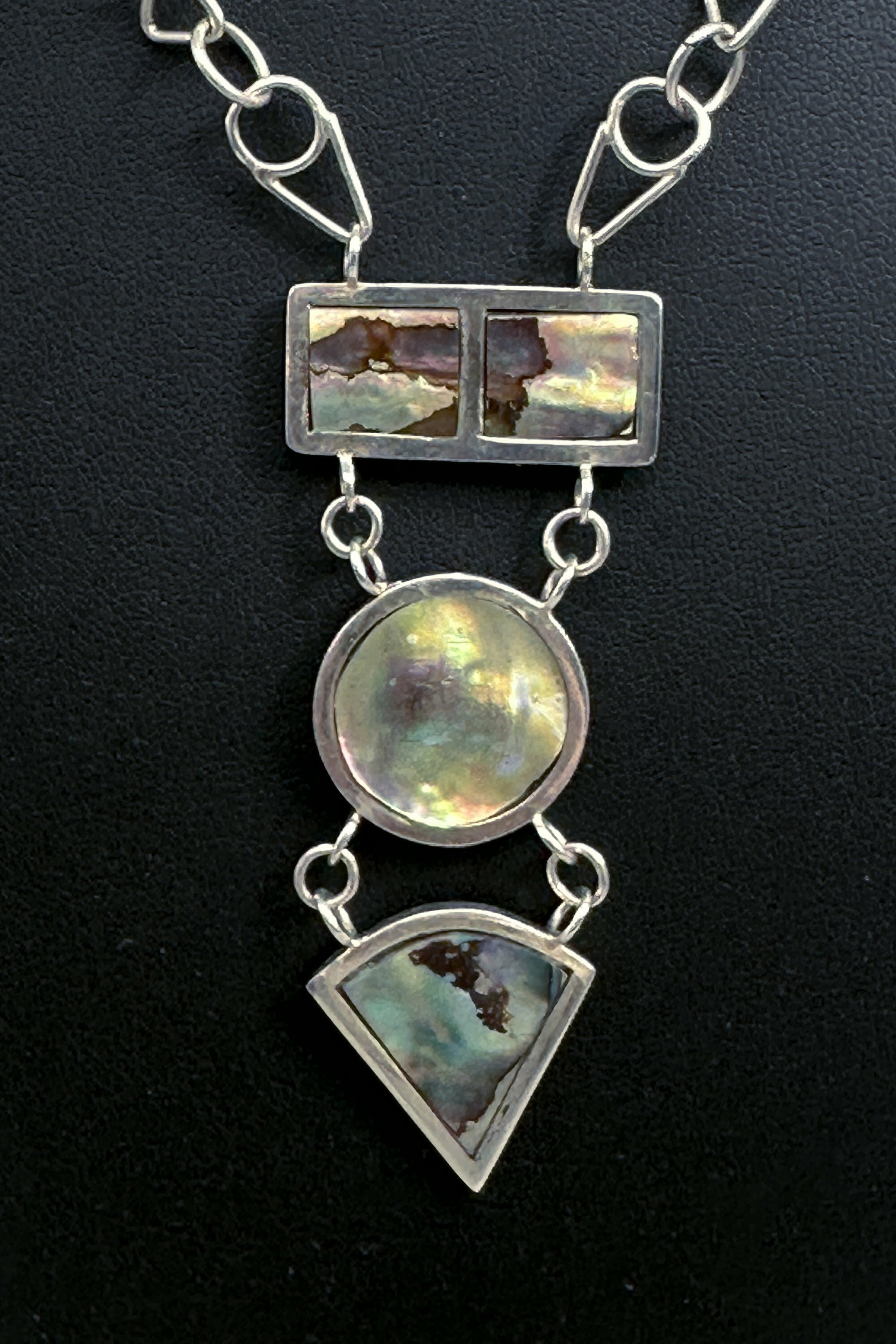
Abalone and silver modernist design Necklace, modern
Price: £60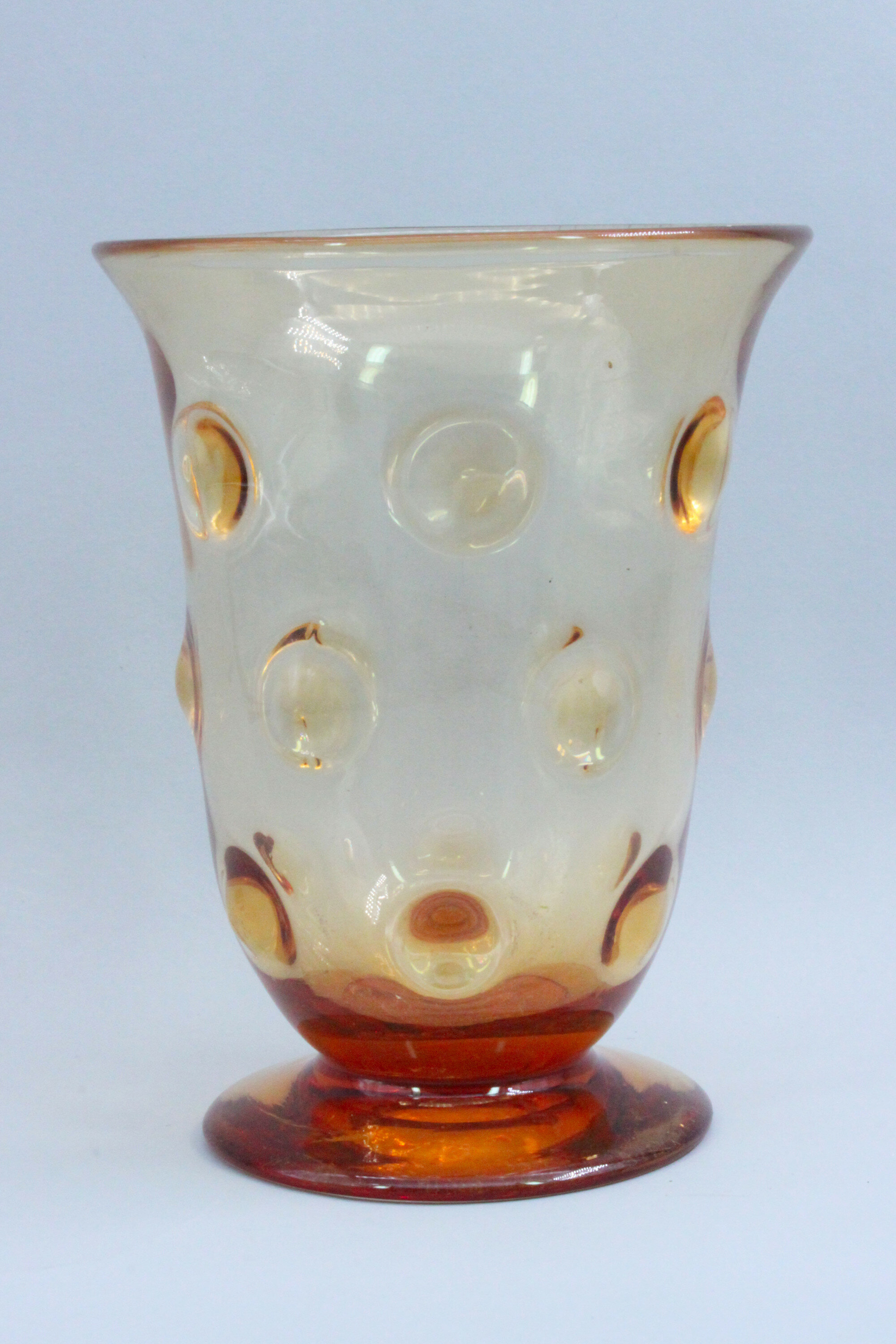
Golden Amber Webb Glass Vase, marked, 1950s
Price: £45Thomas Webb began his glass career in 1829, when he became a partner in the Wordsley Glassworks. Various career changes followed and in 1859 he was joined by his sons Thomas Wilkes Webb and Charles Webb and began trading as Thomas Webb & Sons based in Stourbridge. The firm was run by various family members until mergers started to occur in the early twentieth century and Sven Fogelberg, previously from Swedish glassworks Kosta, became manager in 1932. Production continued with more mergers in the 1960s and 1970s until the firm closed in 1990. This vase was made by Thomas Webb during the 1950s as part of their 'Gay Glass' range in a design called 'Old English Bull's Eye' and has the typical 'Webb England' mark to the base.

Taxco Silver and Copper Bracelet, c1940
Price: £55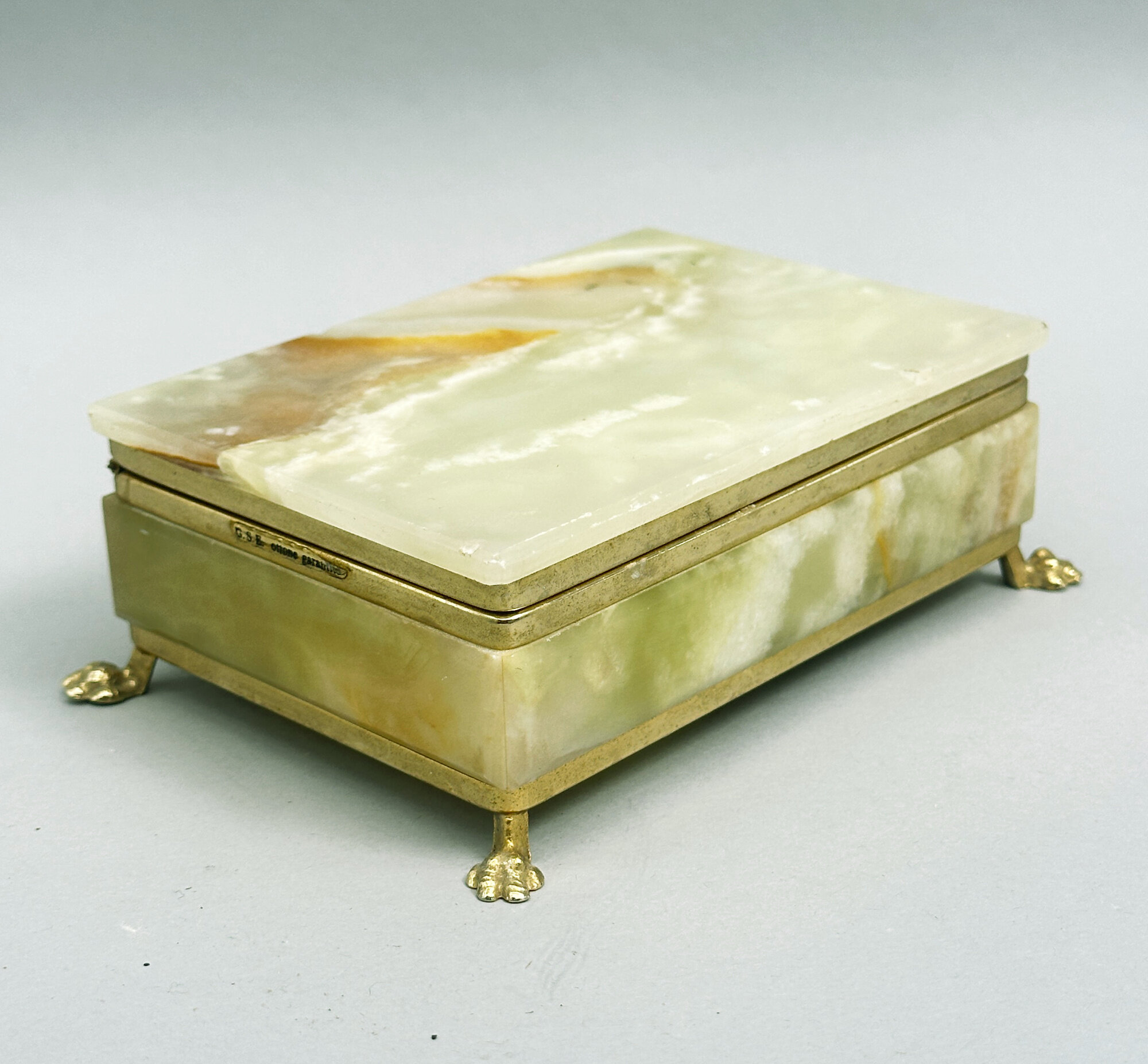
Rectangular Footed Green Onyx Box and Cover, G.S.E. Ottone Garantito, 1960s
Price: £45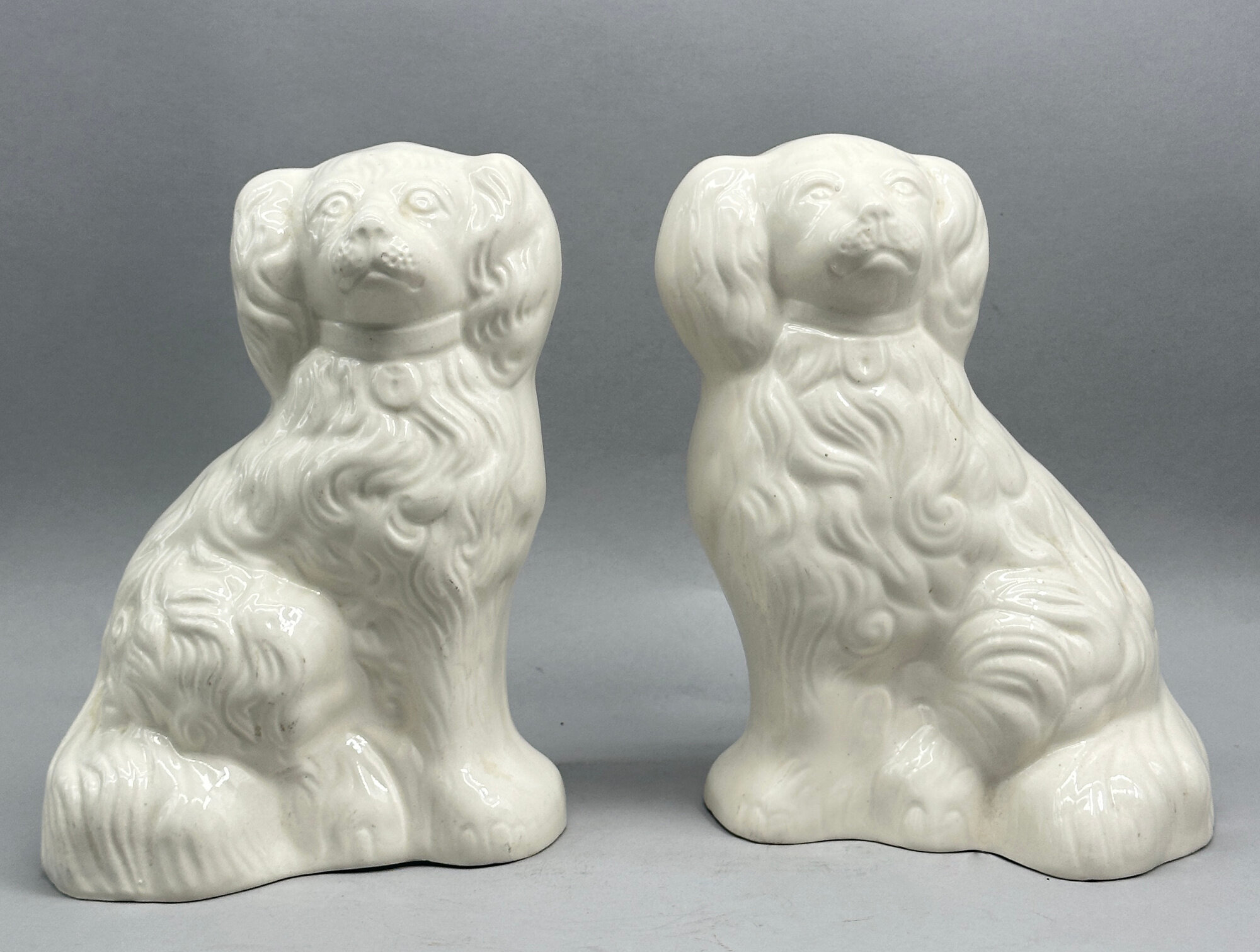
An unusual pair of white glaze models of Spaniels, Beswick, 1960s
Price: £75While a close relation to the traditional Victorian ‘Staffordshire Dog’, these figures were actually made by the English firm Beswick in the twentieth century. Founded in 1894 by James Beswick and his sons, the company became known for its output of figurines, eventually securing the rights to producing characters from the novels of Beatrix Potter and the films of Walt Disney. It was sold to Royal Doulton in 1969 who continued production until 2002, selling the pottery premises in 2003 and the rights to the name in 2004 when they were bought by Dartington Crystal who still manufacture pieces carrying the Beswick name. These spaniel figures appear to date from the 1960s and were made in at least two sizes. Most have painted decoration but the plain white finish here is really the most pleasing of all producing a pair of decorative items with timeless appeal.

1940s Dutch coin braclet
Price: £35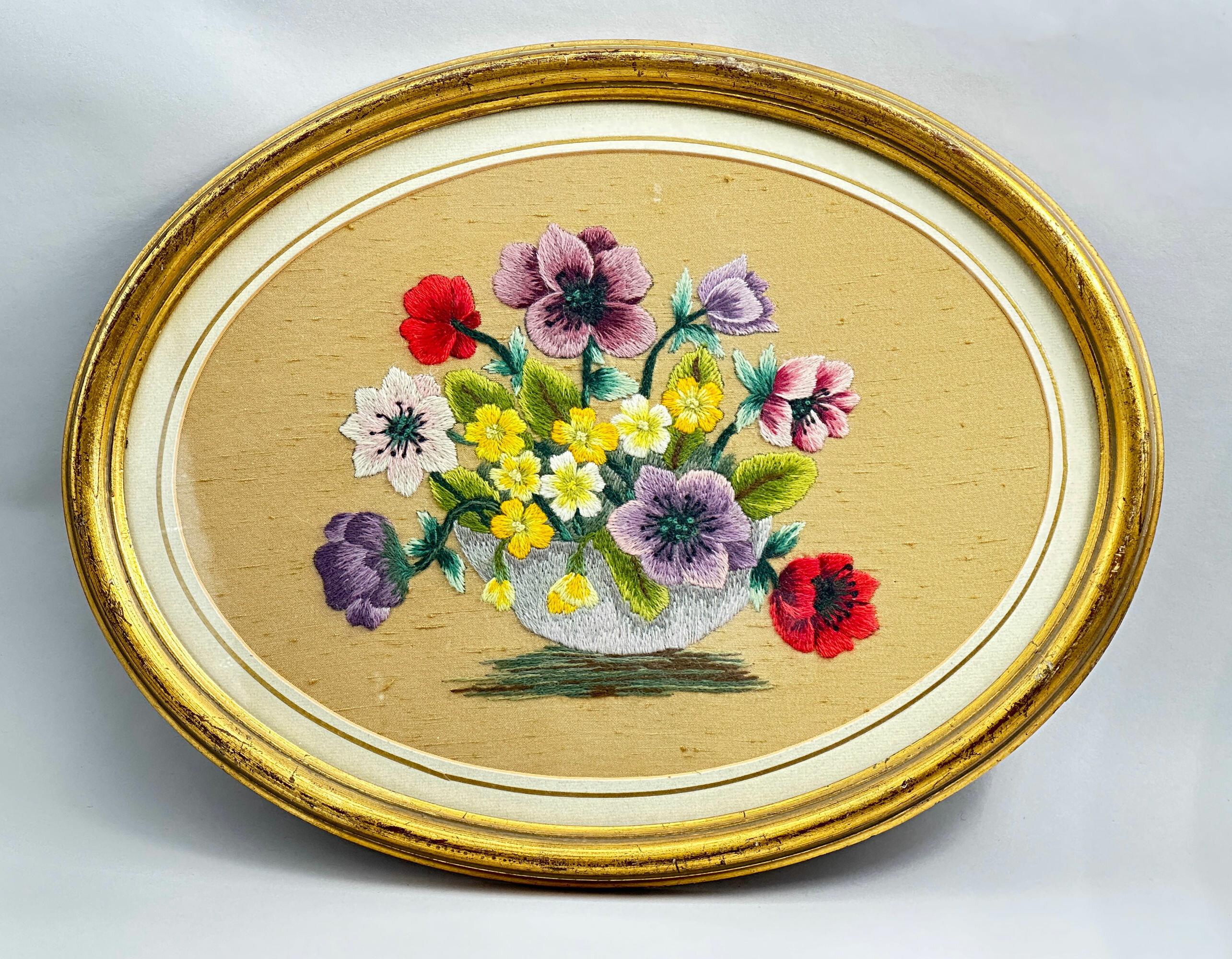
Framed Stumpwork Panel depicting a Bowl of Flowers, English, 1930s
Estimate: £30 – 40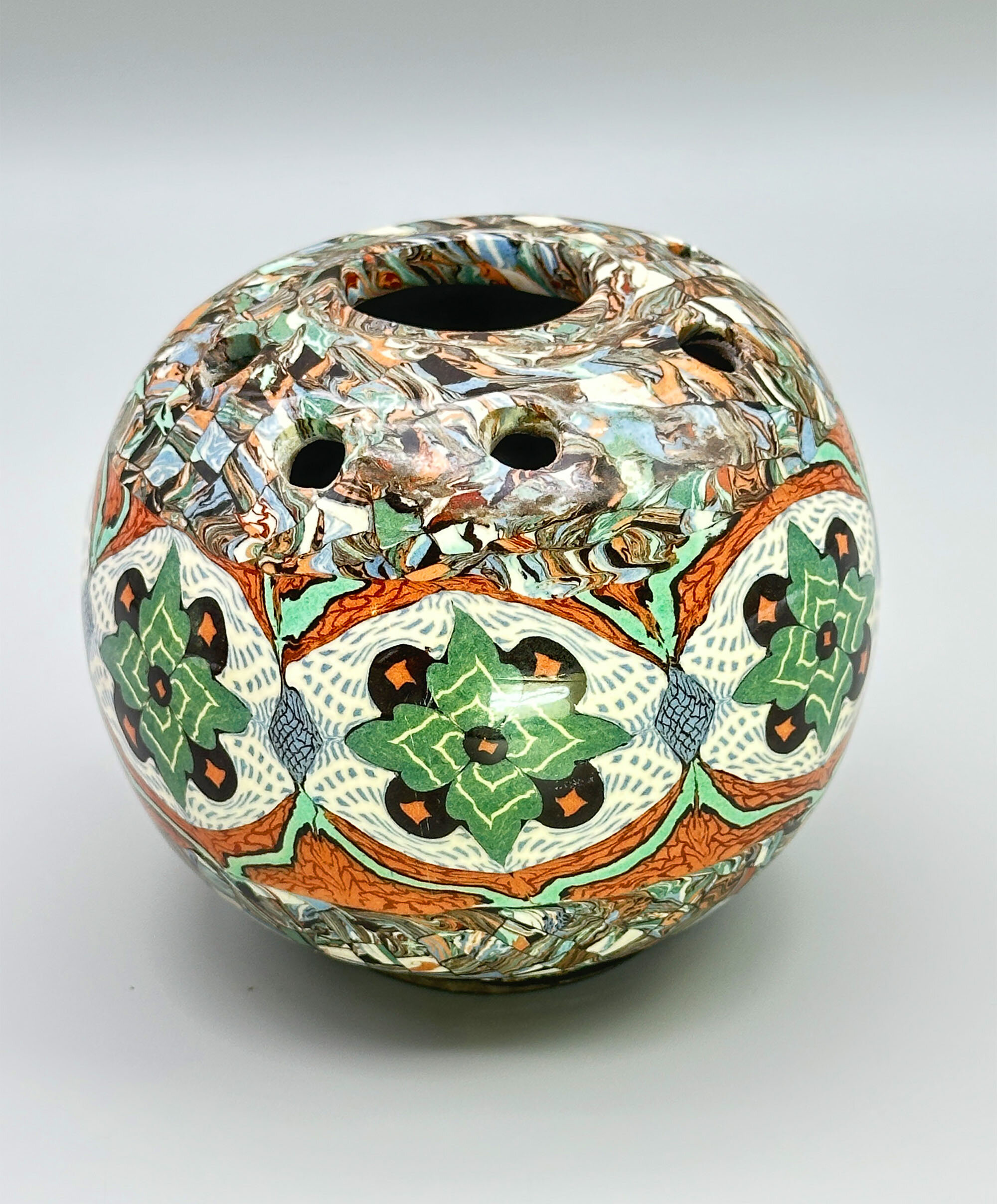
Vallauris Mosaic Pattern Vase, Jean Gerbino, signed, mid C20th
Estimate: £50 – 80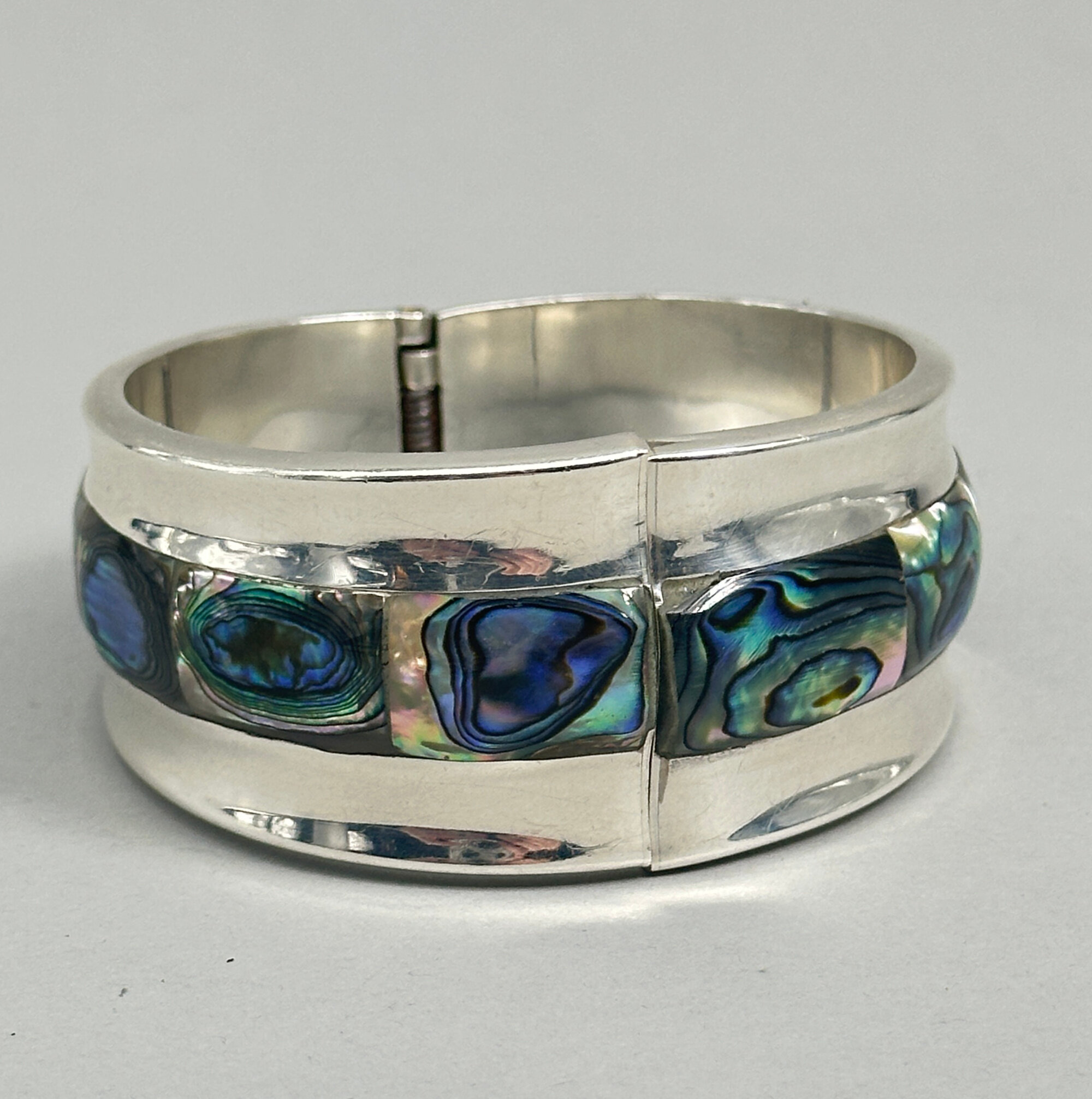
Outstanding Taxco silver and abalone Bangle c1980
Price: £200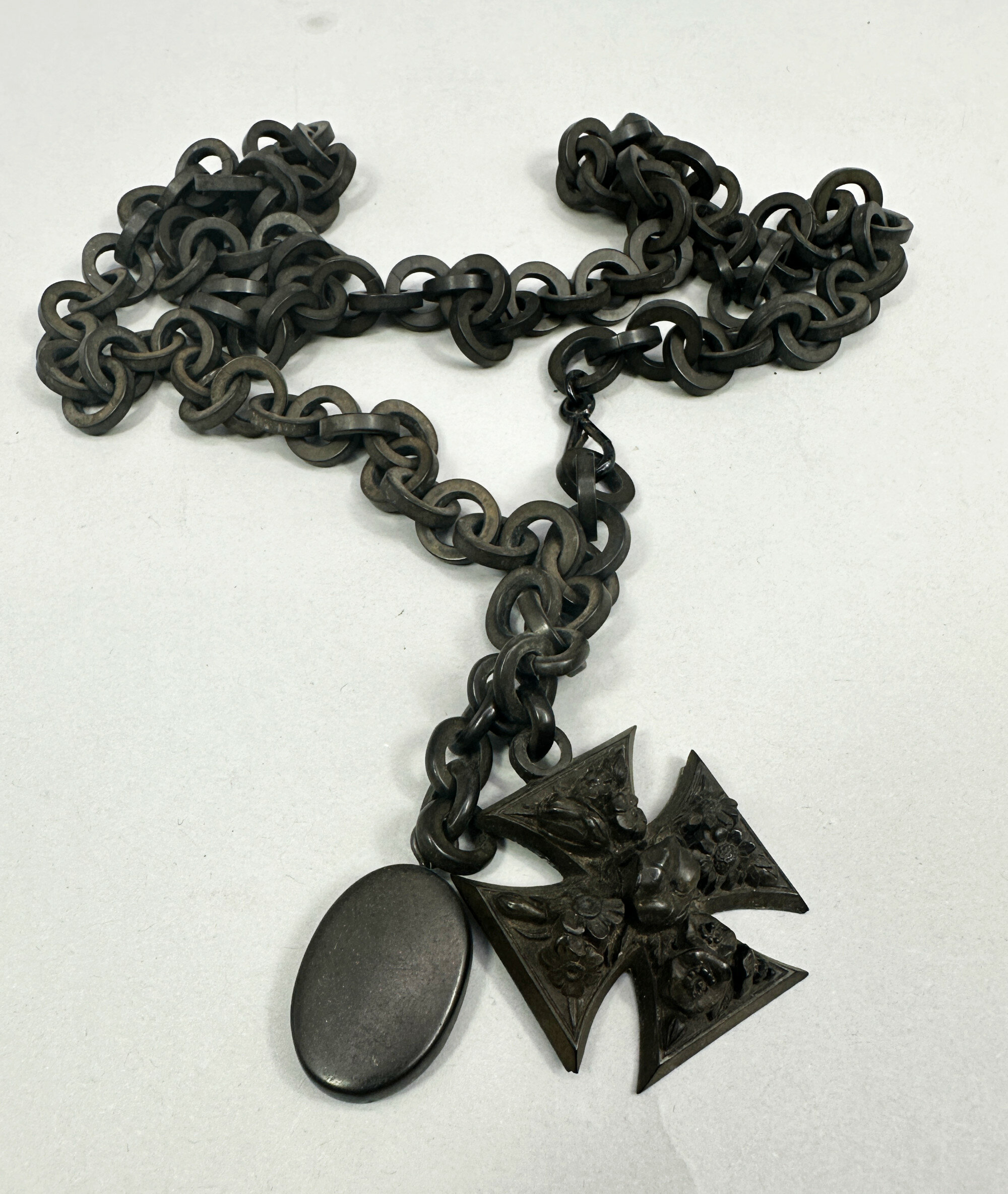
Vulcanite long necklace with Maltese cross and fob c1880
Price: £195
Outstanding Suede Lanvin Clutch in original box 1950s
Price: £250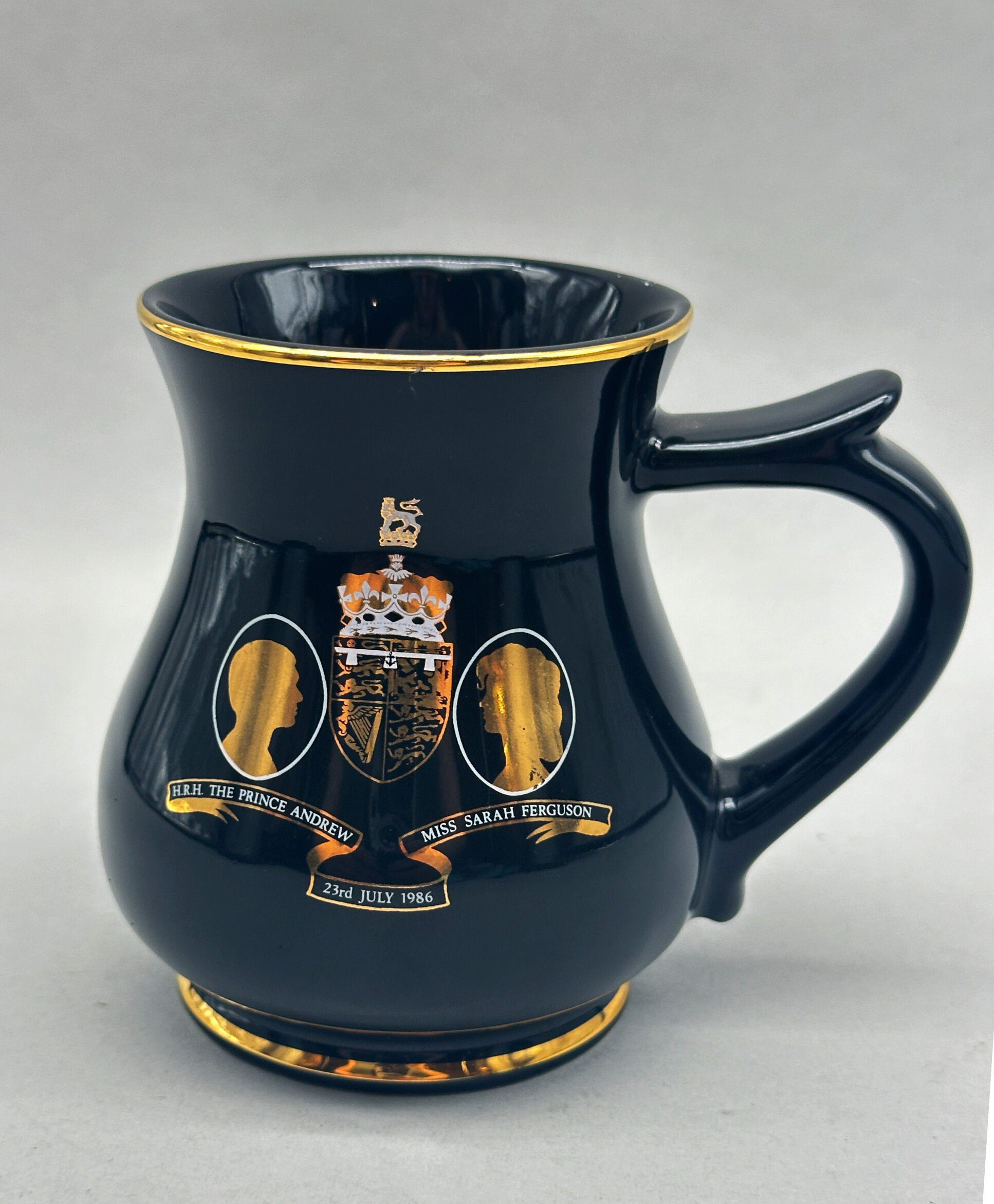
Ceramic Tankard celebrating the Marriage of Prince Andrew and Sarah Ferguson in 1986
Price: £10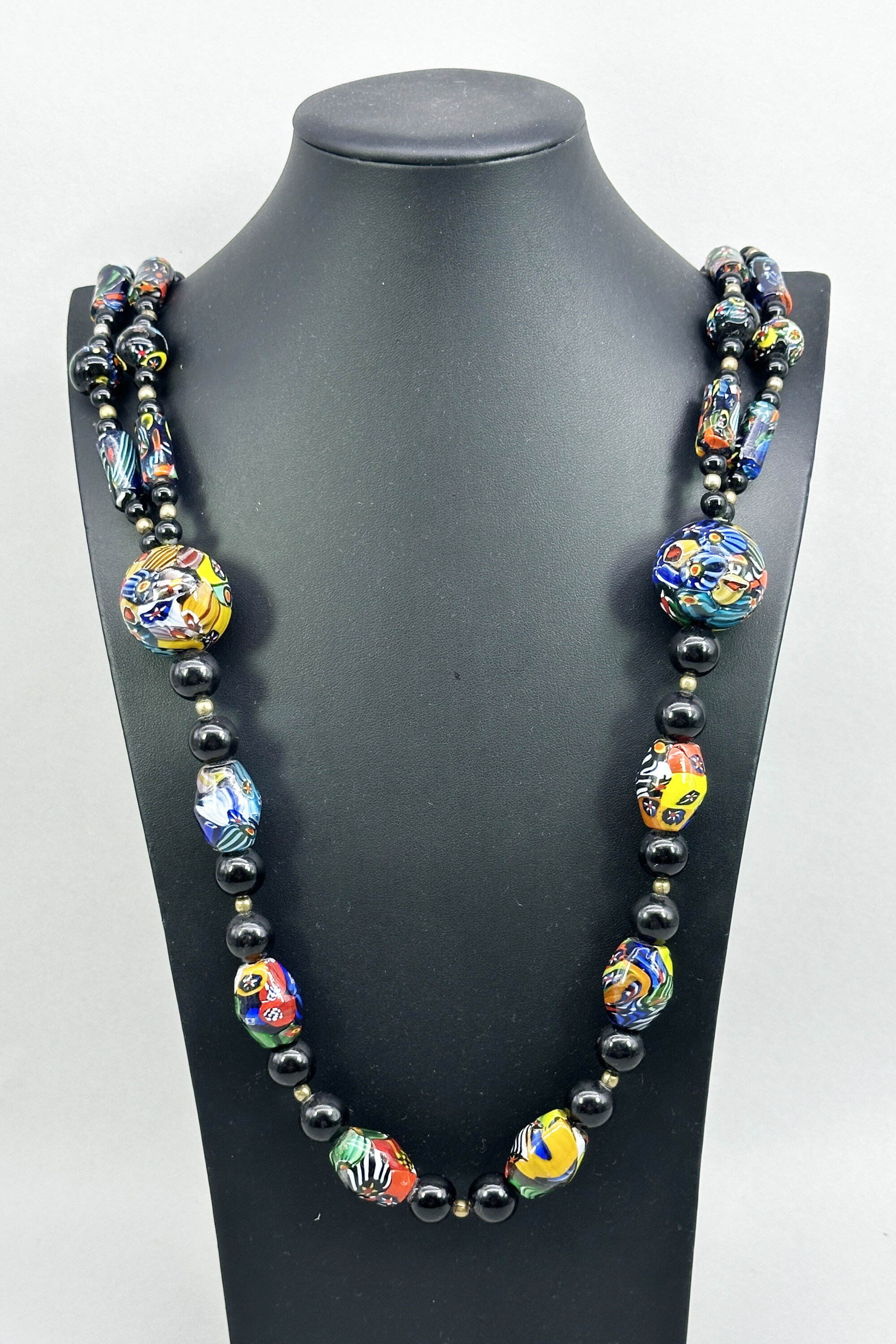
Monumental Mille Fiore glass bead necklace c1970
Price: £175
Intricate Czech glass necklace 1930s
Price: £65
Group lot of three jade necklaces
Price: £45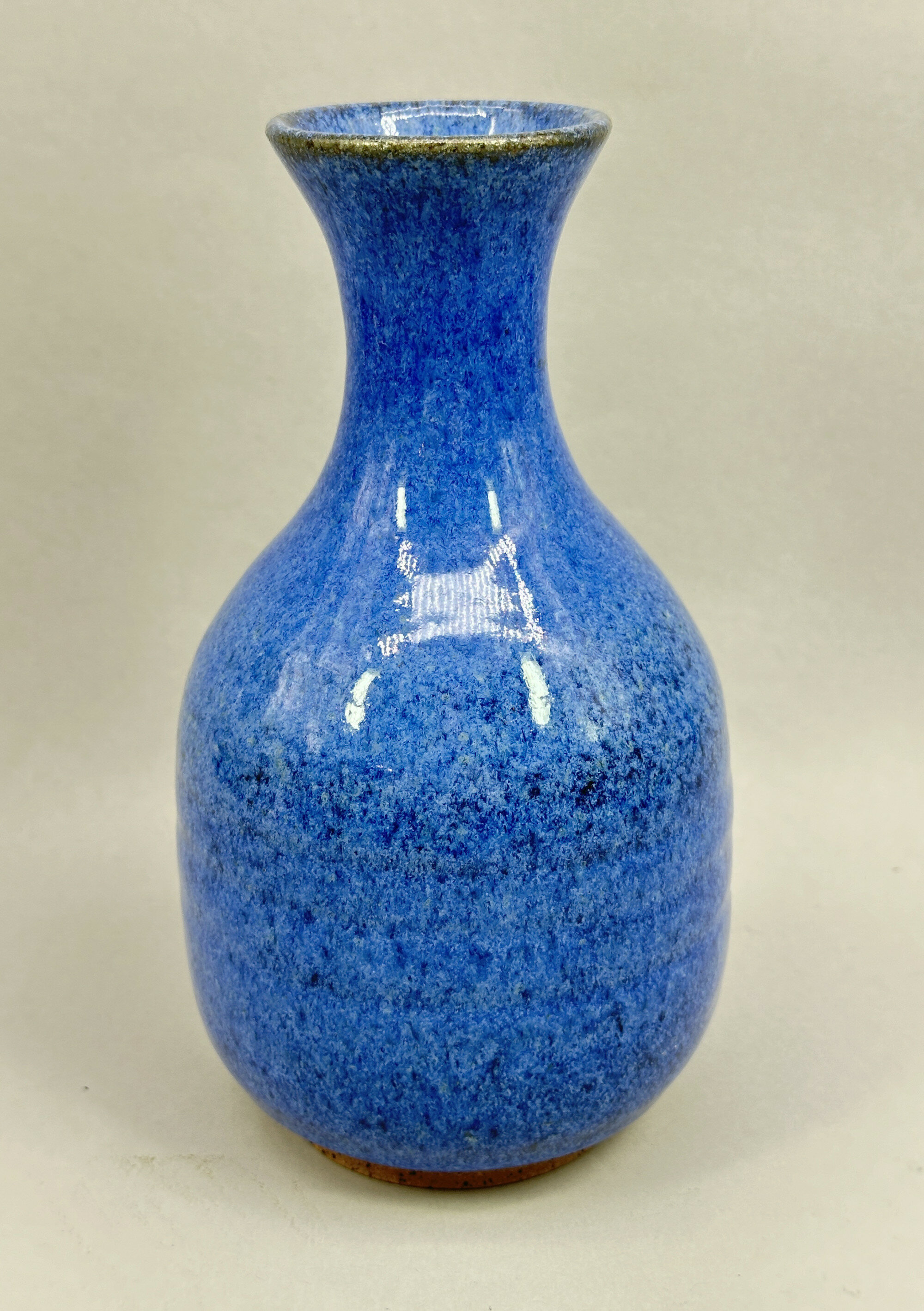
Studio Pottery Vase with Robin’s Egg Glaze marked Zambia, Modern
Price: £30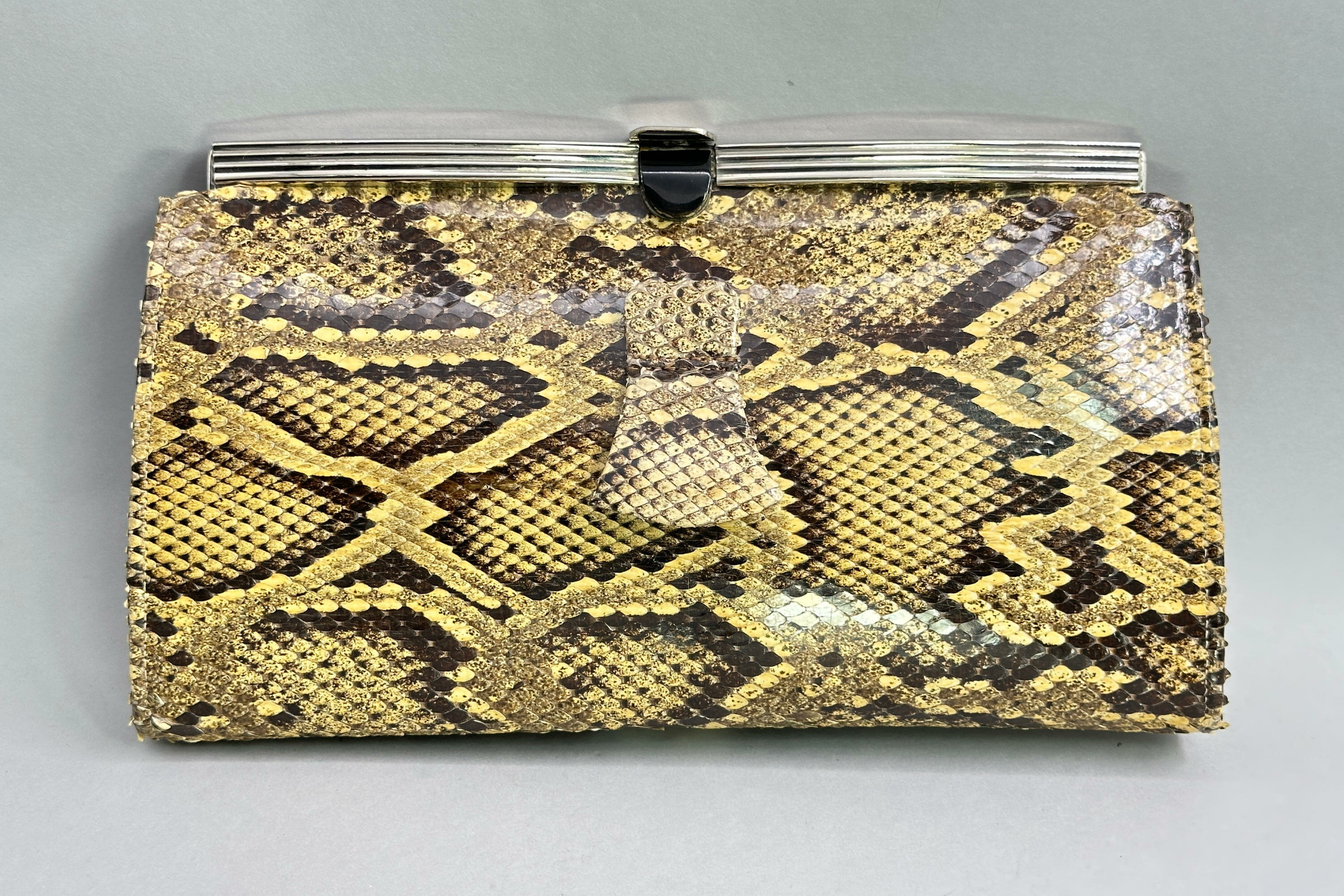
Art Deco Python Clutch
Price: £85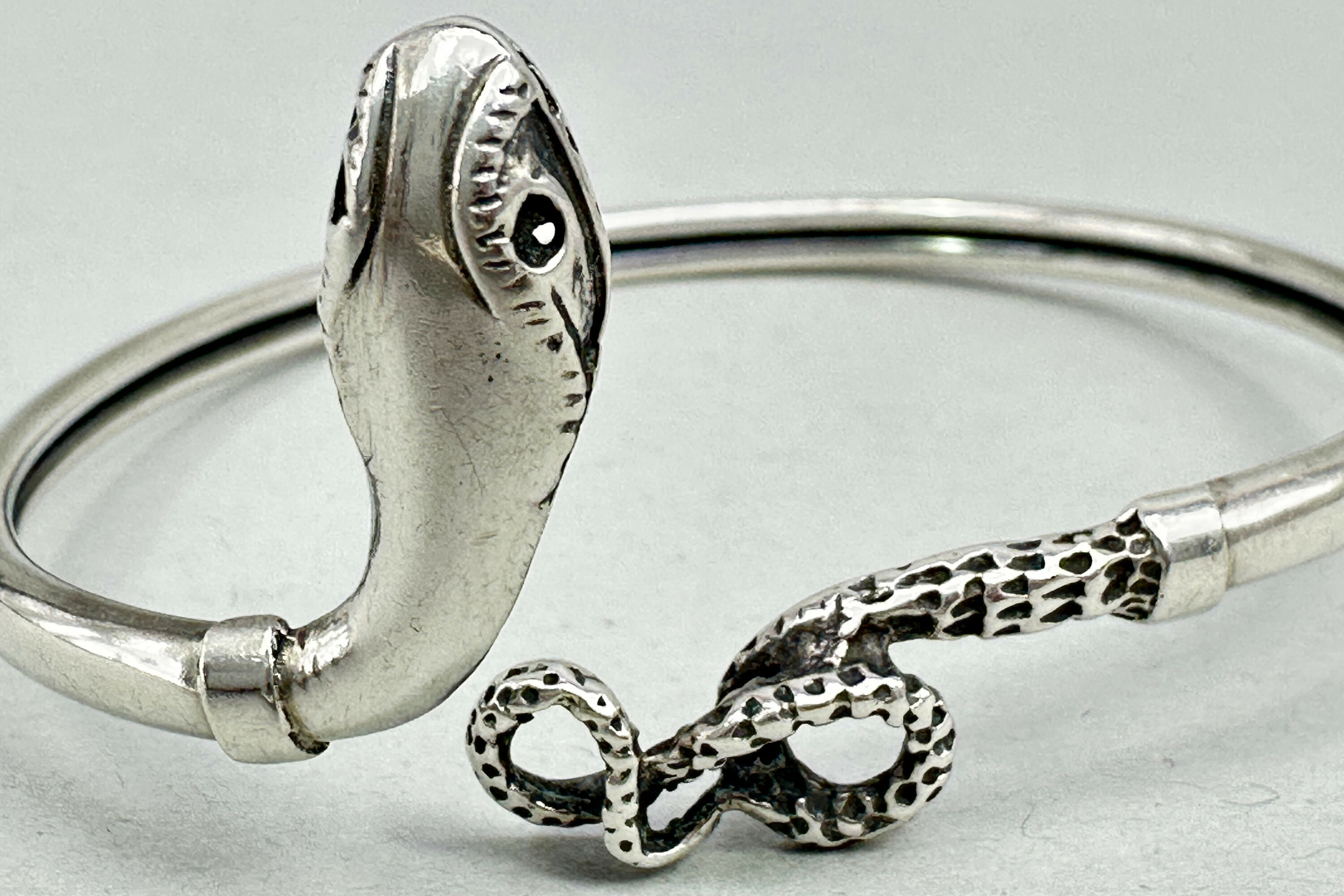
Silver Snake bangle, 20th century
Price: £25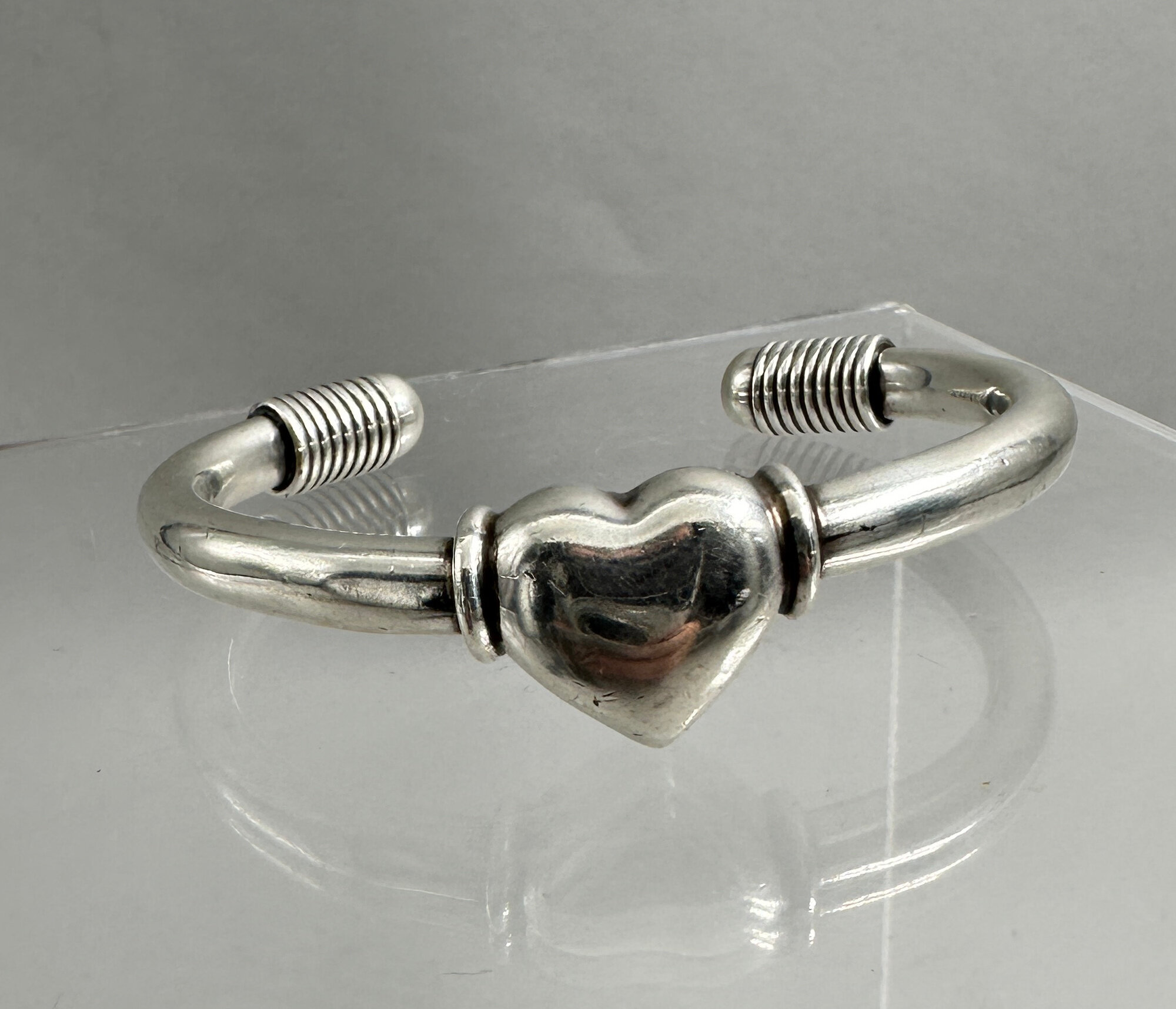
Sweet Taxco heart bracelet c1980
Price: £75
Art Deco continental black spinel and marcasite ring, 1920s
Price: £35
Egyptian Revival scarab ring, 1930s
Price: £25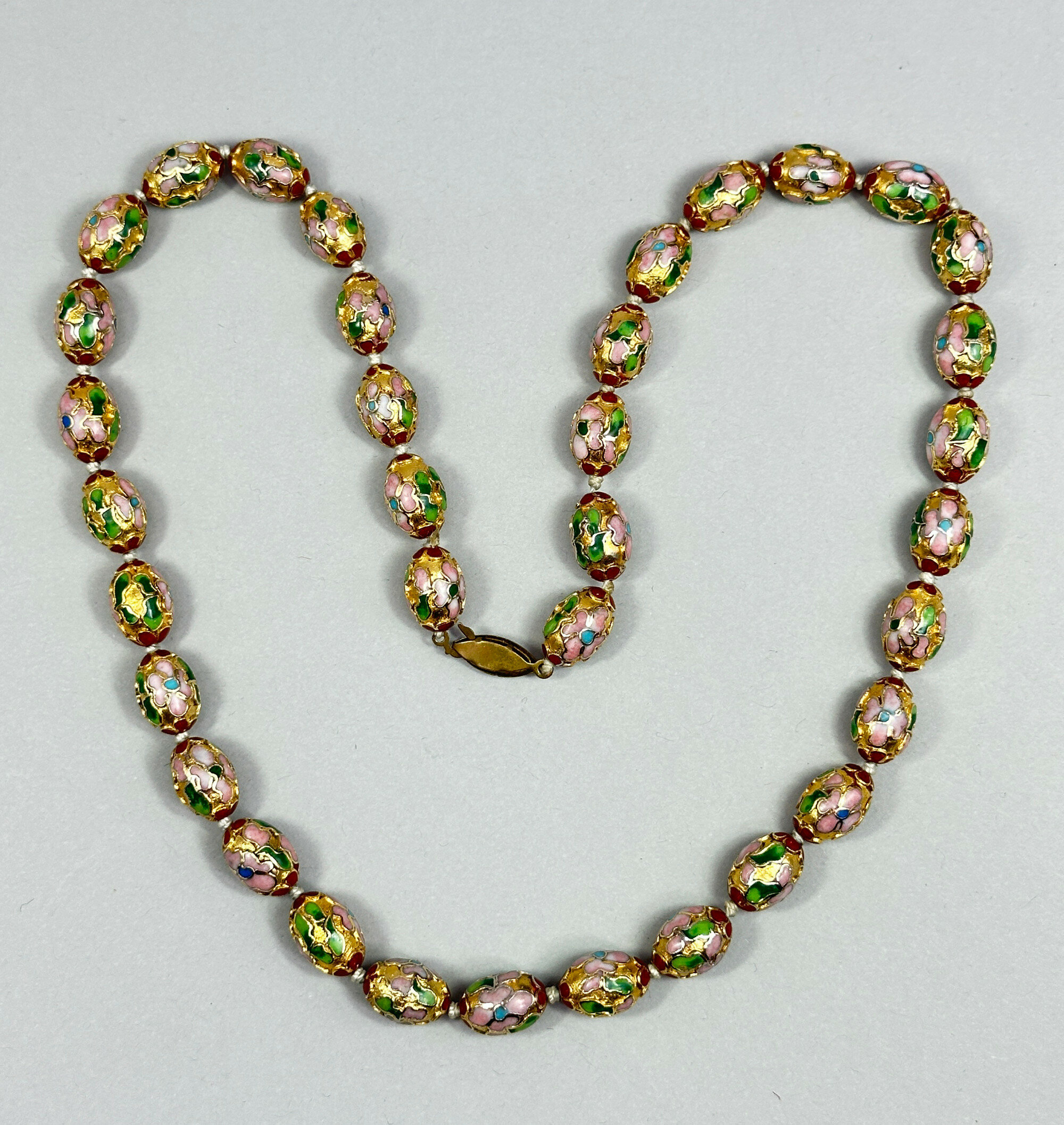
Vintage Chinese Cloisonne Bead Necklace, mid C20th
Price: £55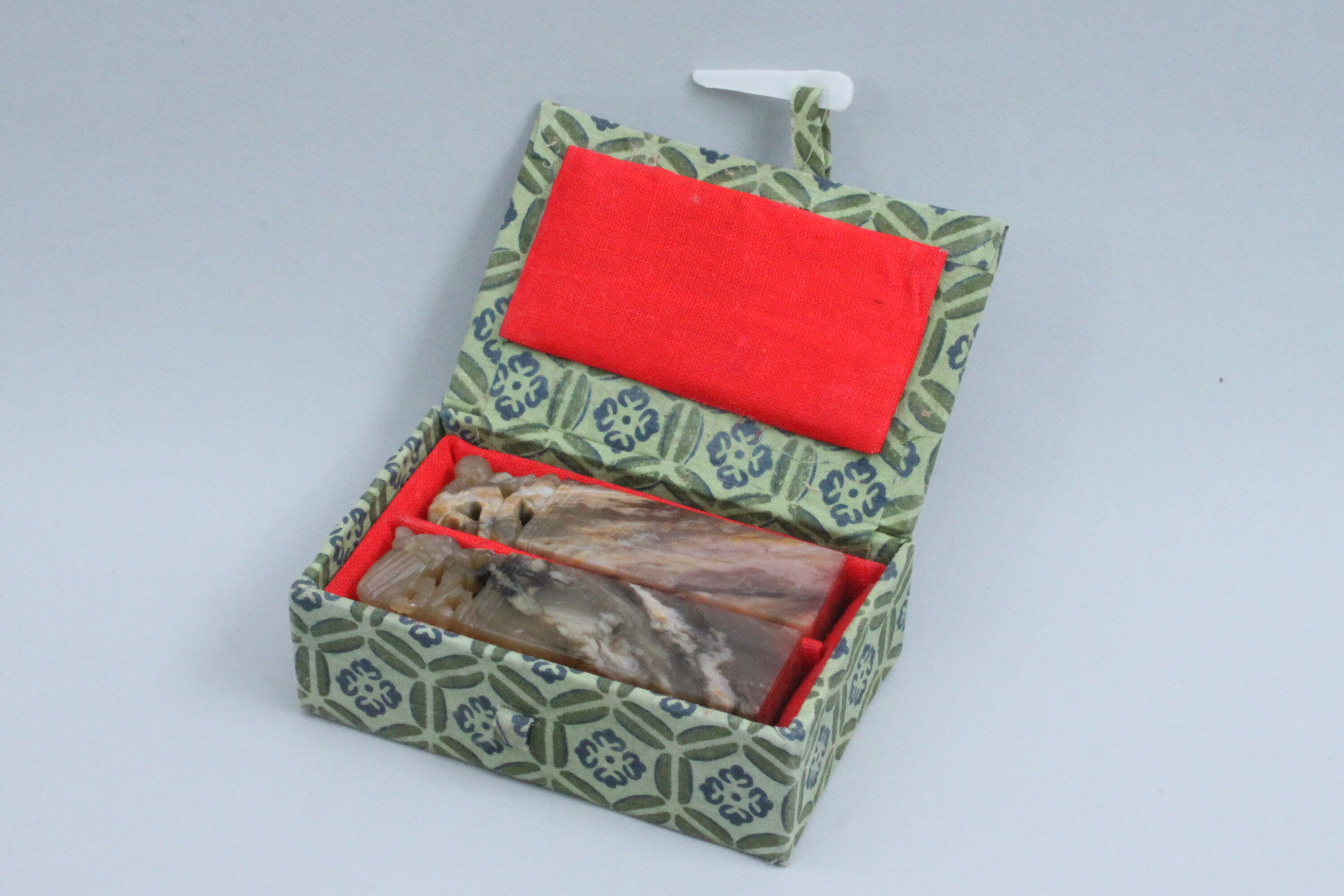
Pair of Chinese Soapstone Seals in a fitted box, C20th
Price: £45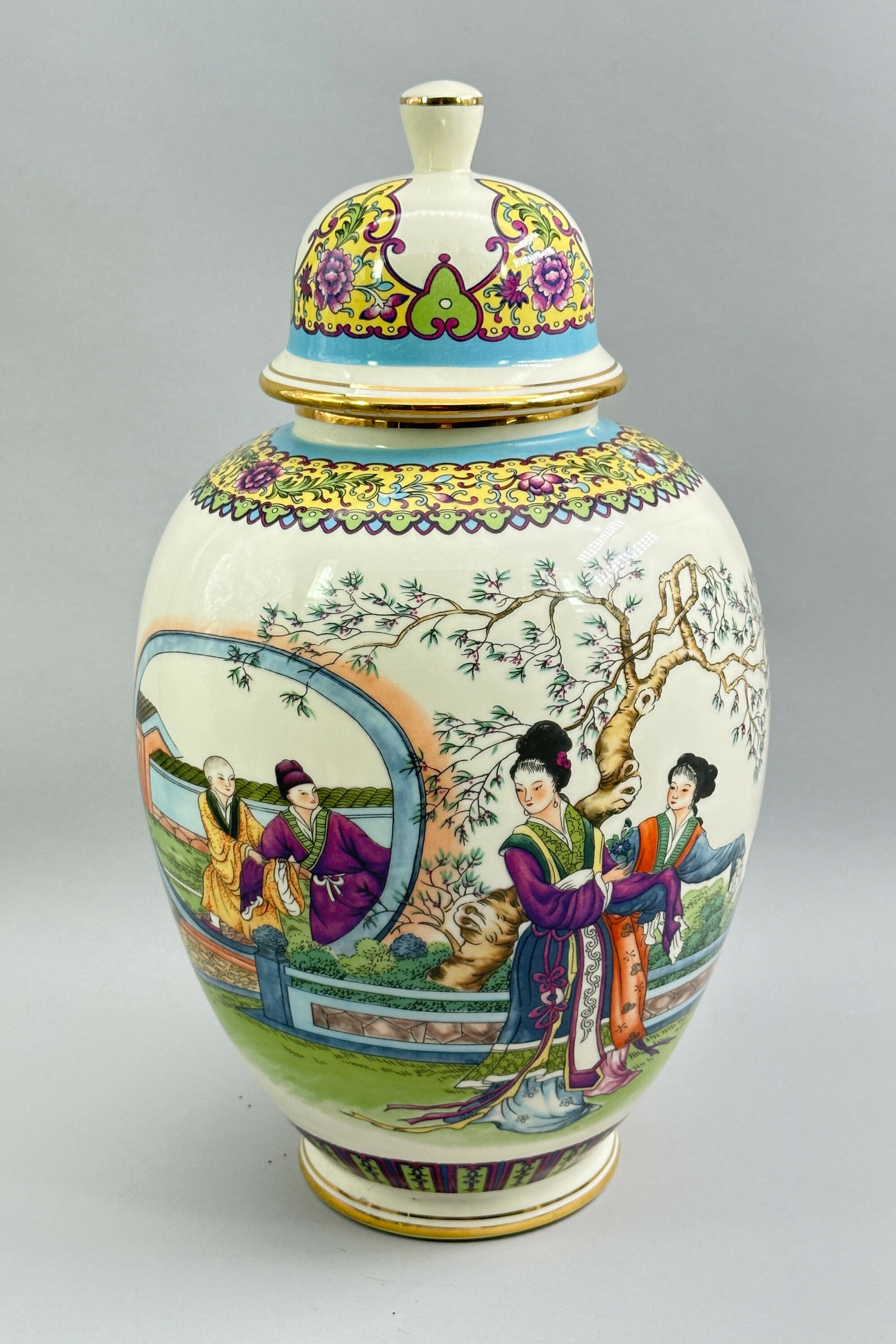
Chinese style Vase and Cover decorated with ladies and courtiers in a garden scene, C20th
Price: £55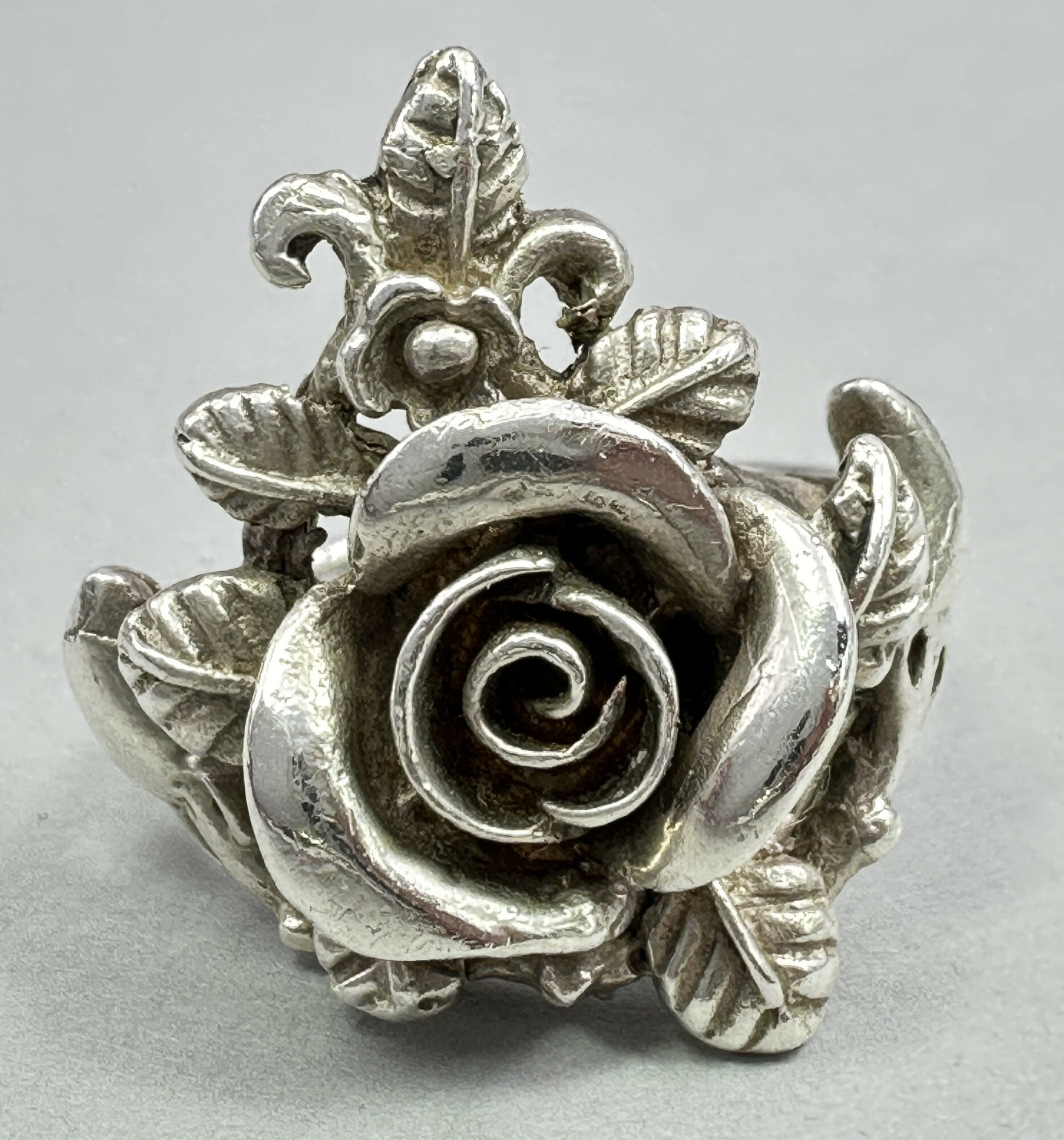
Silver rose ring, 20th century
Price: £35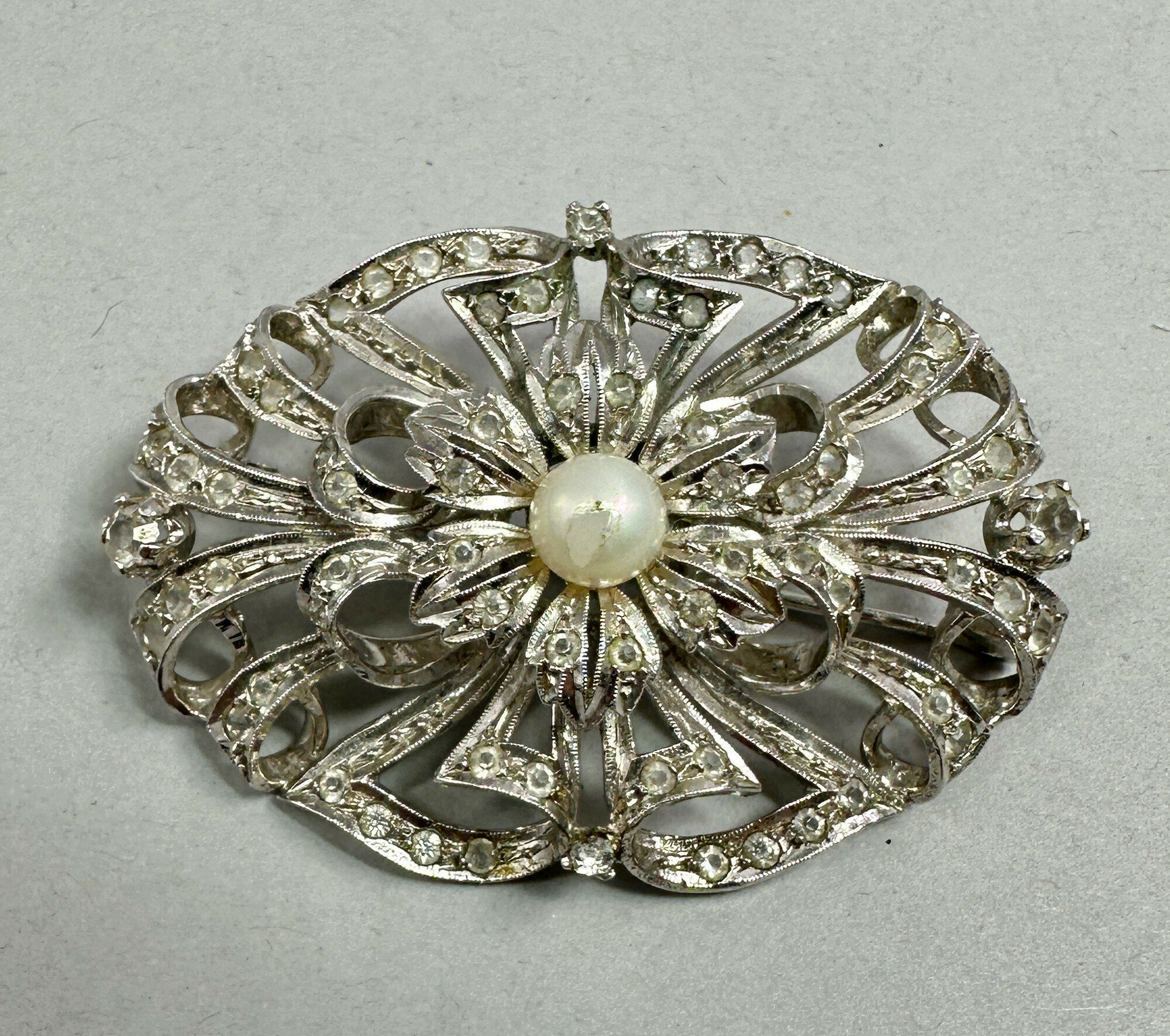
Incredible quality Silver and paste brooch c1950
Price: £45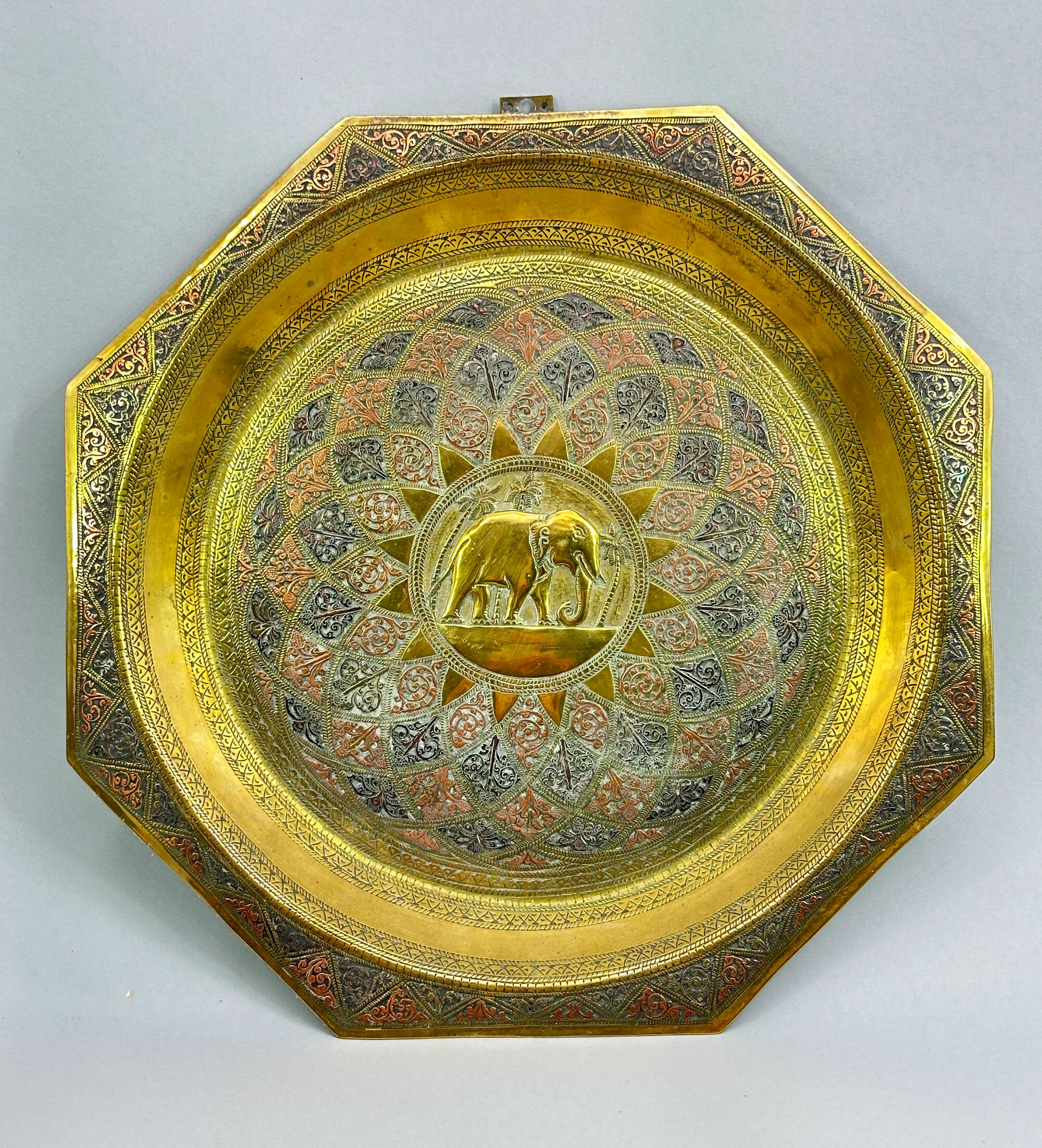
An Octagonal Brass Tray with a roundel of an elephant, probably Persian early C20th
Price: £45
Large Cinnabar and filigree silver brooch, 1930s
Price: £45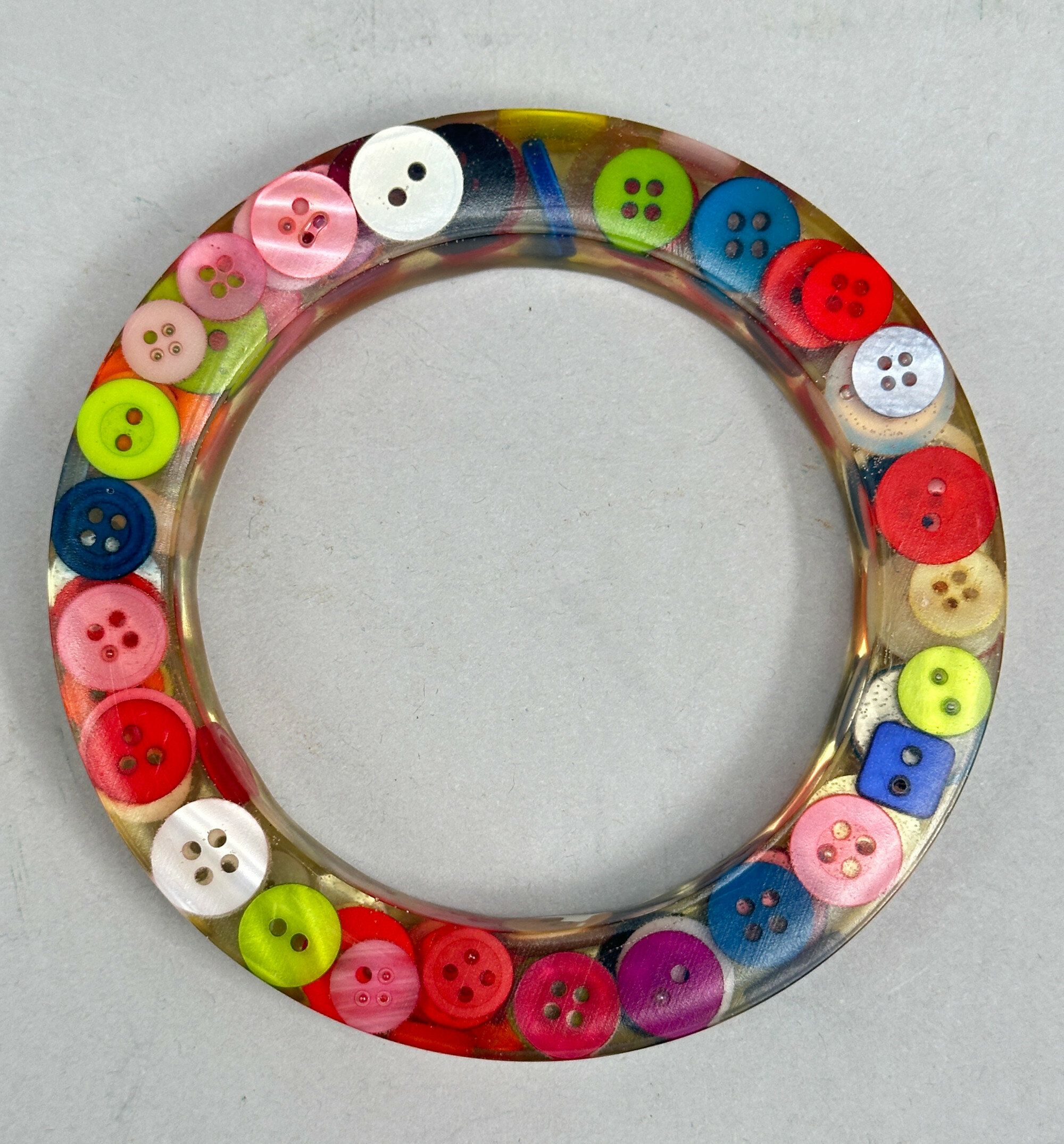
Fun 1970s button bangle
Price: £25
Vintage Indian silver pendant Necklace, 20th century
Price: £85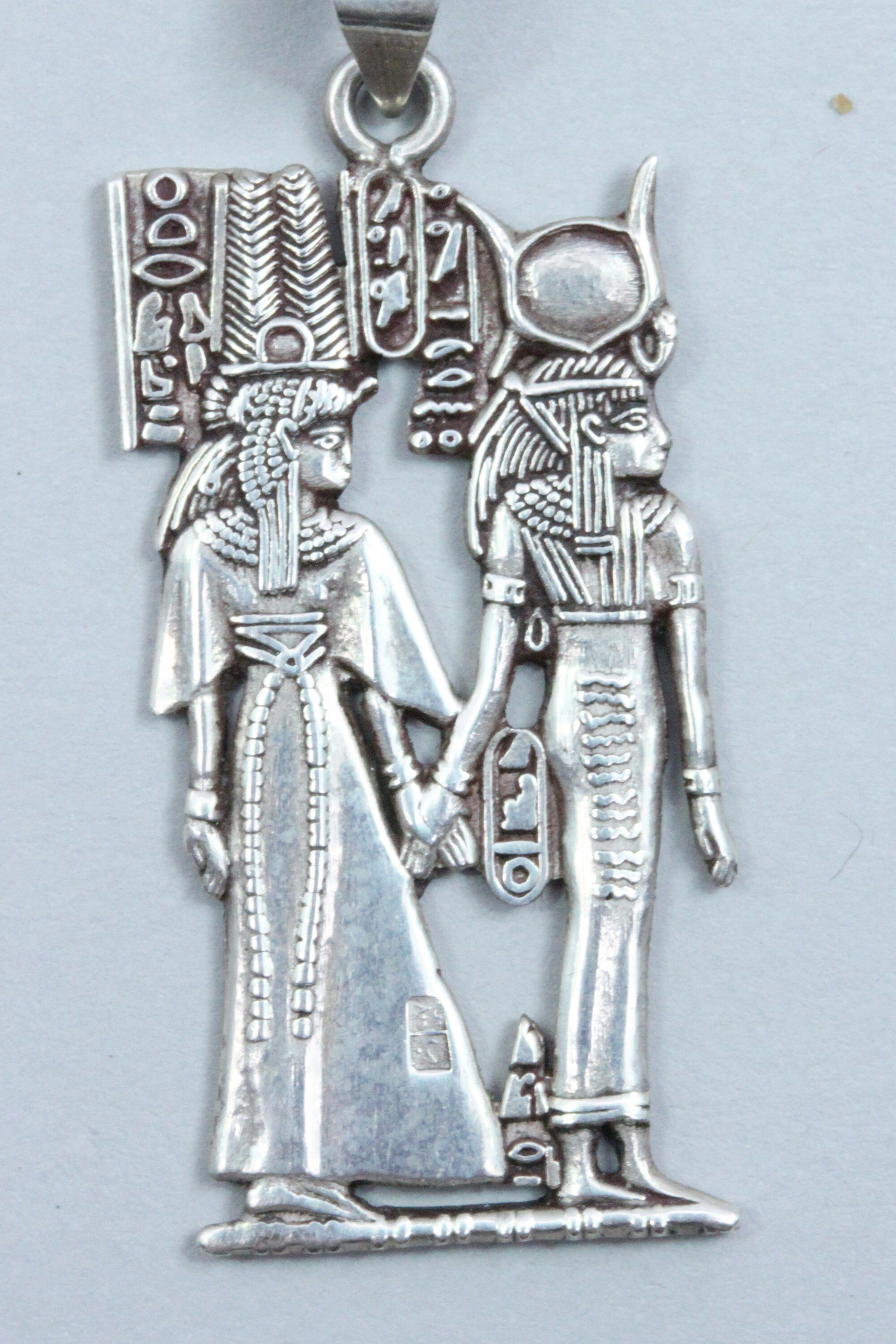
Silver Pendant, Tutankhamun and Ankhsenamun, Egyptian 1950s
Price: £35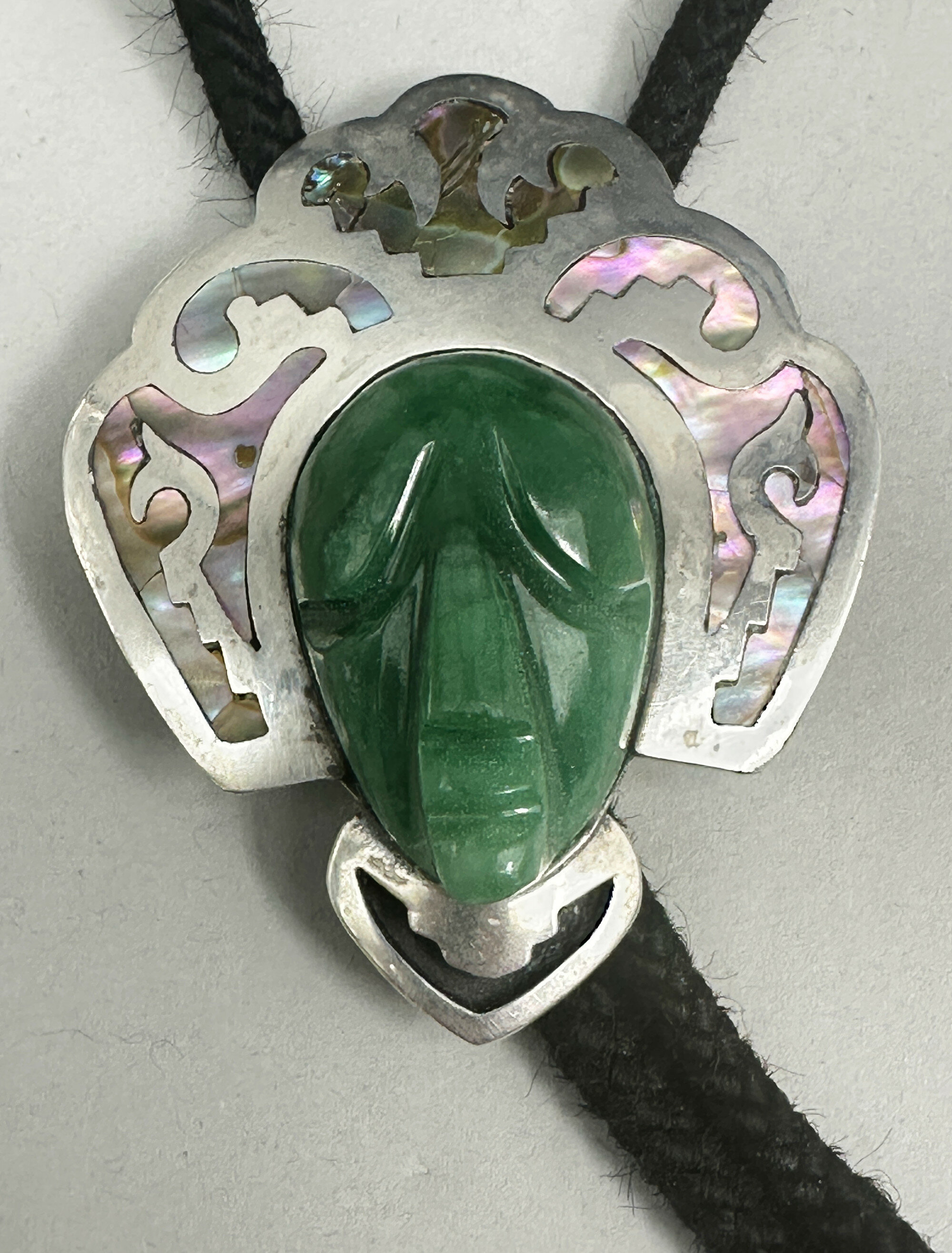
Mexican Silver Bolo Tie with Aztec mask Head, Taxco, c1950
Price: £125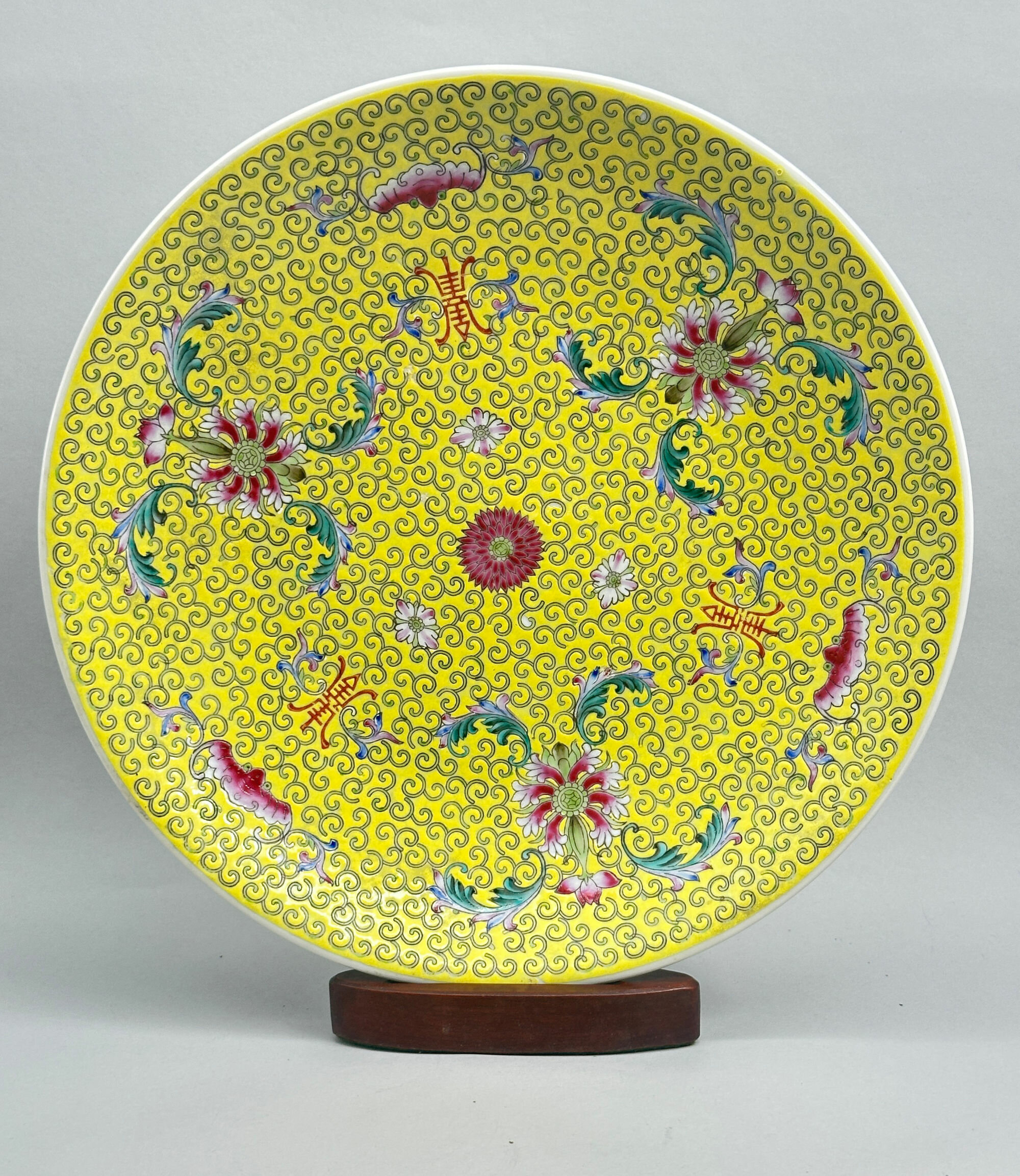
Chinese Yellow Ground Famille Rose Charger, 1950s/early 1960s
Price: £55This is a fine example of the porcelains made at Jingdezhen, for centuries the chief centre of ceramic production in China, in the early years of the People’s Republic of China (1949-). Soon after the communists took control, the kilns at Jingdezhen were organised into co-operatives, each with a number. Many of their pieces were marked and the form of the mark determines the date of production. The circular marks, as here, were the earliest allowing a dating of this charger to the 1950s or possibly the early 1960s. Some of these conglomerates, for the quality can vary, retained the skills of their predecessors and produced works of high quality. This is clearly seen here in the careful and precise enamelling and the general artistry of the design employing ‘imperial’ yellow with the symbolism of happiness (bats), longevity (shou symbols), friendship and a life of ease (chrysanthemum) and fruitfulness and offspring (lotus), all combining to produce a piece well worthy of its many predecessors.
Please note that the wood stand is for display purposes only and is not incuded with this lot.
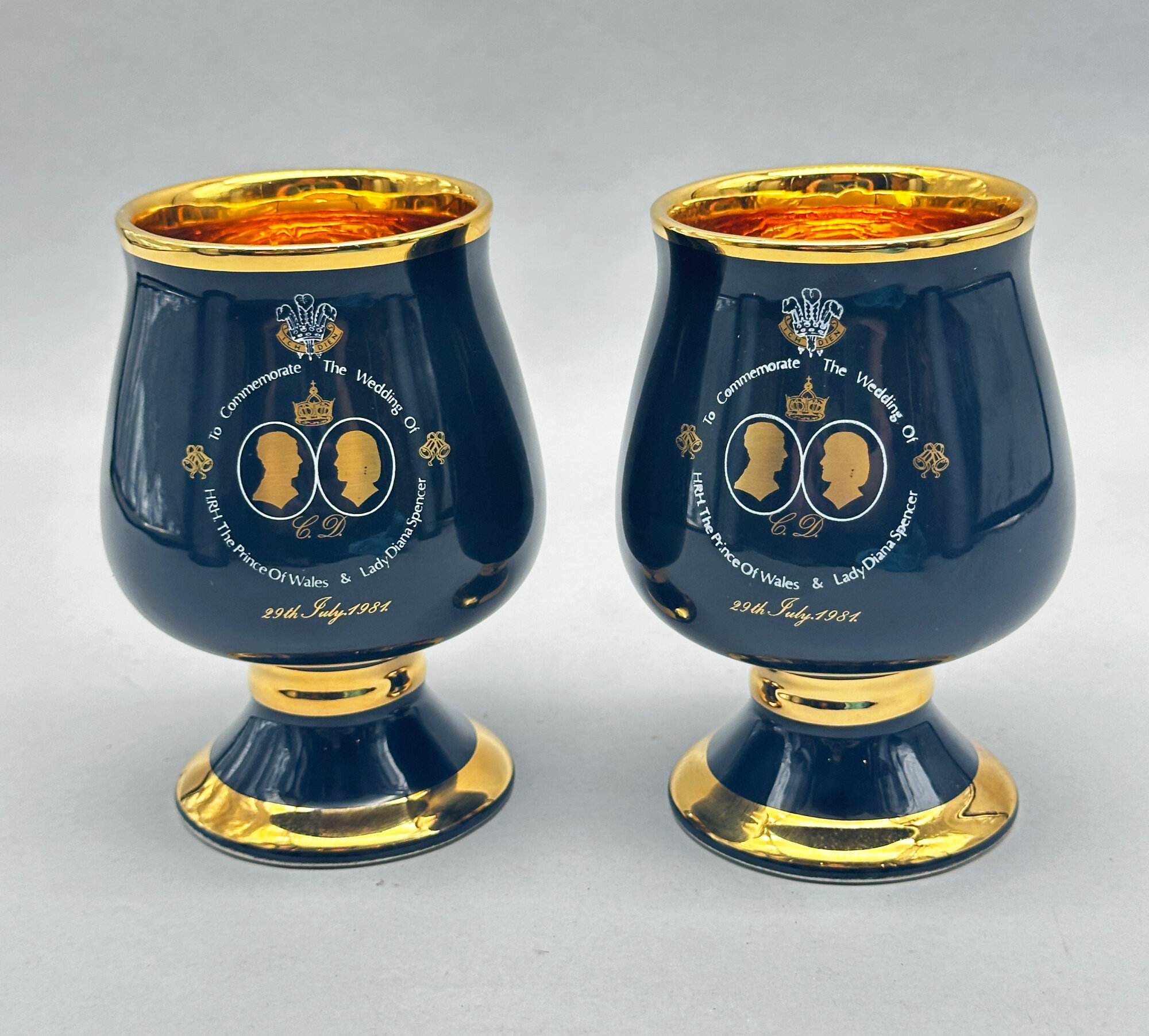
Pair of Ceramic Goblets : the Wedding of Prince Charles and Lady Diana Spencer in 1981
Price: £20
Pair of Edwardian Chinese silver brooches, c. 1910
Price: £25
American 1980s statement necklace with intaglio pendants
Price: £55PLEASE NOTE THAT THERE IS FREE UK SHIPPING ON THIS ITEM. For international buyers the shipping cost will be reduced by the UK shipping cost, so don't worry if you are outside the UK, you still receive this benefit!
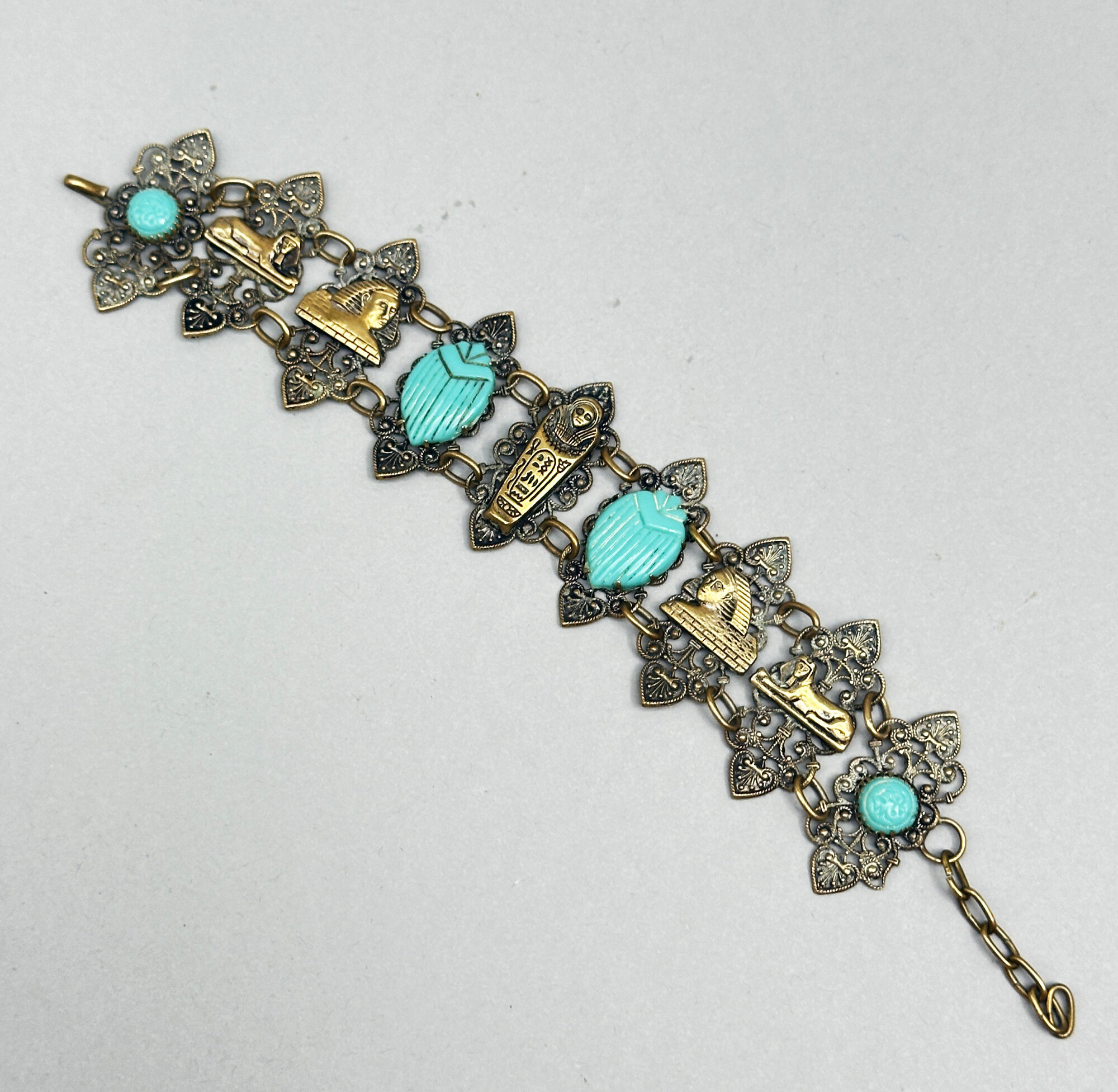
Czech Egyptian Revival bracelet 1930s
Price: £30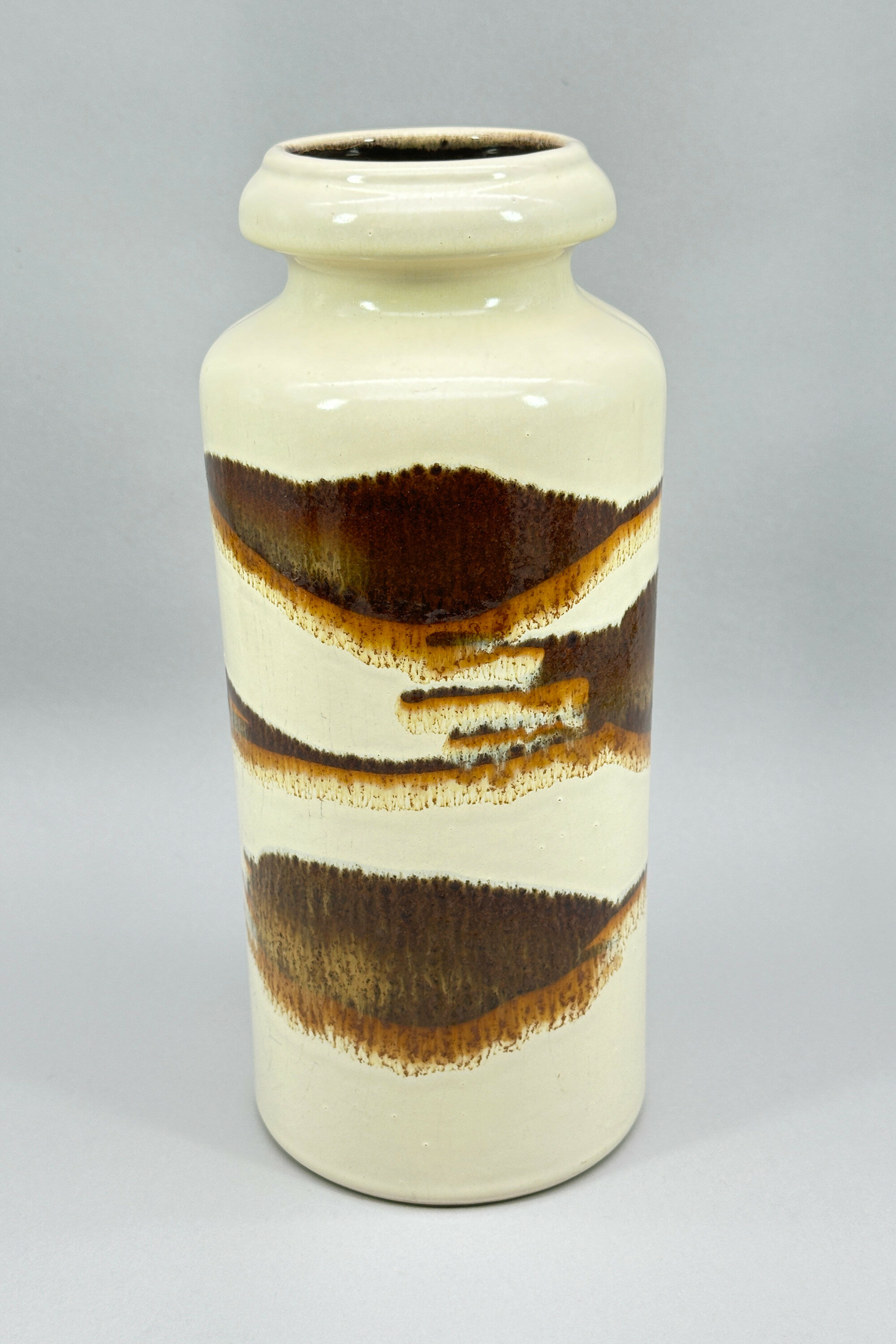
West German Vase with drip glaze decoration, Scheurich, 1960s
Price: £45Although not marked as such, this vase has all the hallmarks of the firm Scheurich Keramik which started production in 1954, rather later than most of its competitors, but soon became the largest producer of commercial art pottery in Germany. Their pieces rarely carried the factory name but usually the model number followed by the height in centimetres with ‘W-Germany’ below, as here. Model ‘517’ can be found in a variety of different glazes but the colourings here with the contrast between browns and cream are particularly successful. Dating is to the 1960s.
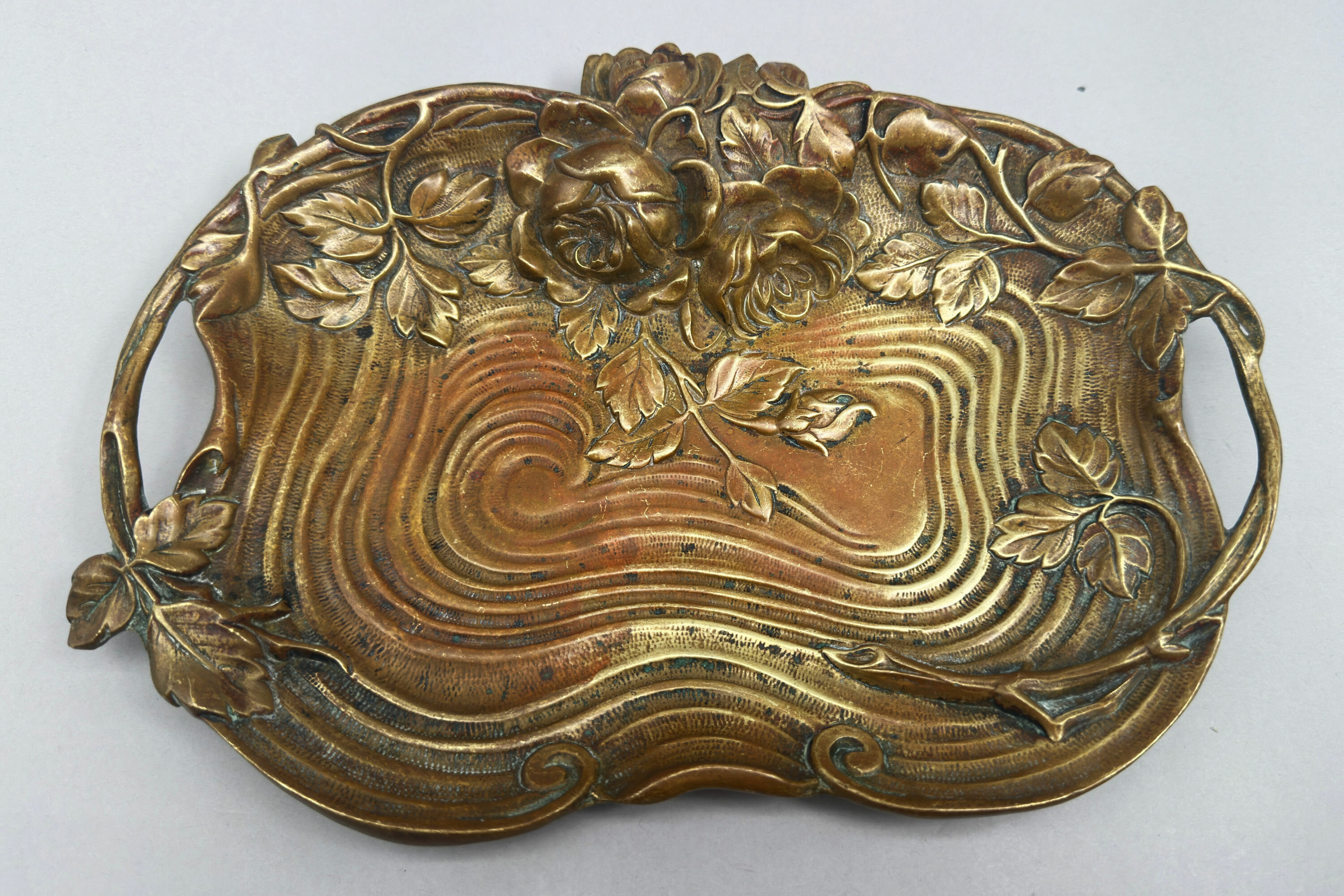
Art Nouveau Bronze Tray, stamped 172 Deposé, French c1900
Price: £95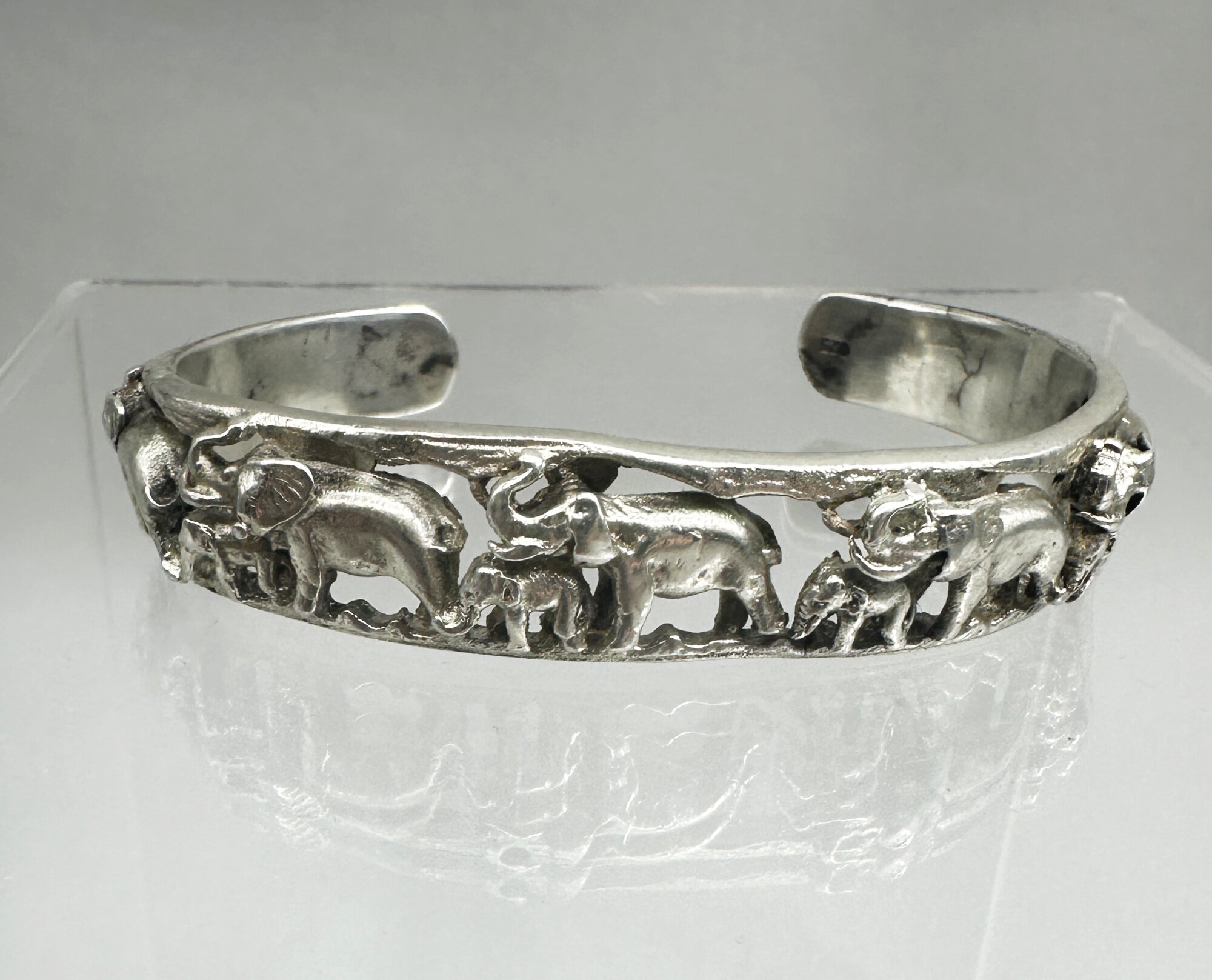
Taxco silver elephant cuff bracelet c1970
Price: £85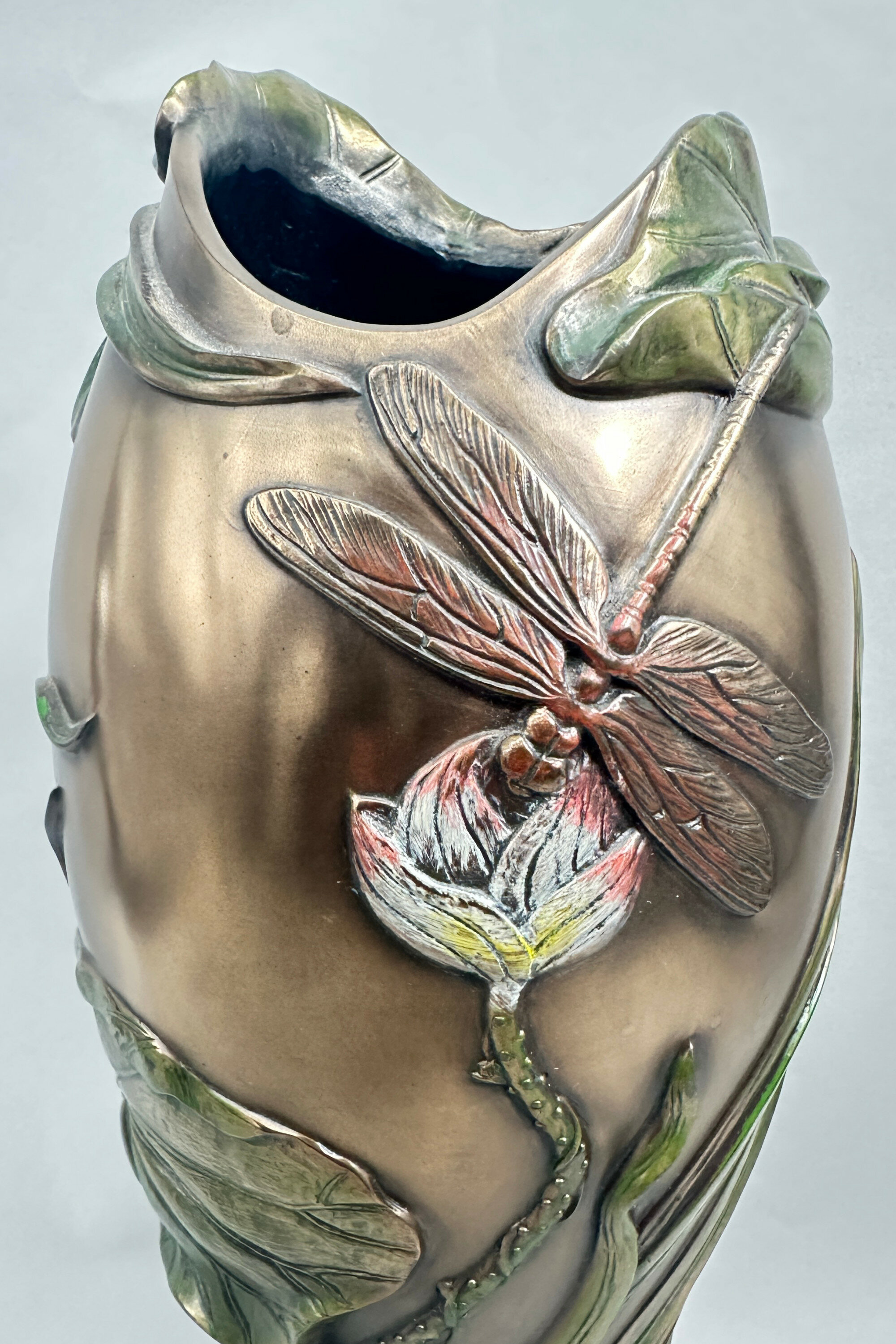
Past Times Art Nouveau Style Vase, Veronese Collection, 2004
Price: £45‘Past Times’ was founded in 1986 by John Beale, at first as a mail order company but then trading from physical stores and developing into a business which enjoyed enormous popularity with over one hundred shops in the early 2000s. The stock was focused on retro and vintage style items also including a wide range of licensed products, such as Harry Potter and Beatrix Potter merchandise. Badly impacted by the recession in 2008 it went into administration in 2012 and was bought by W.H.Smith a year later leading to the disappearance of its products from the marketplace.
This ‘Art Nouveau’ vase can be seen as an example of their range at its best. Manufactured with care it presents an appealing souvenir of the era it aims to recreate at a rather more affordable price than the authentic originals.
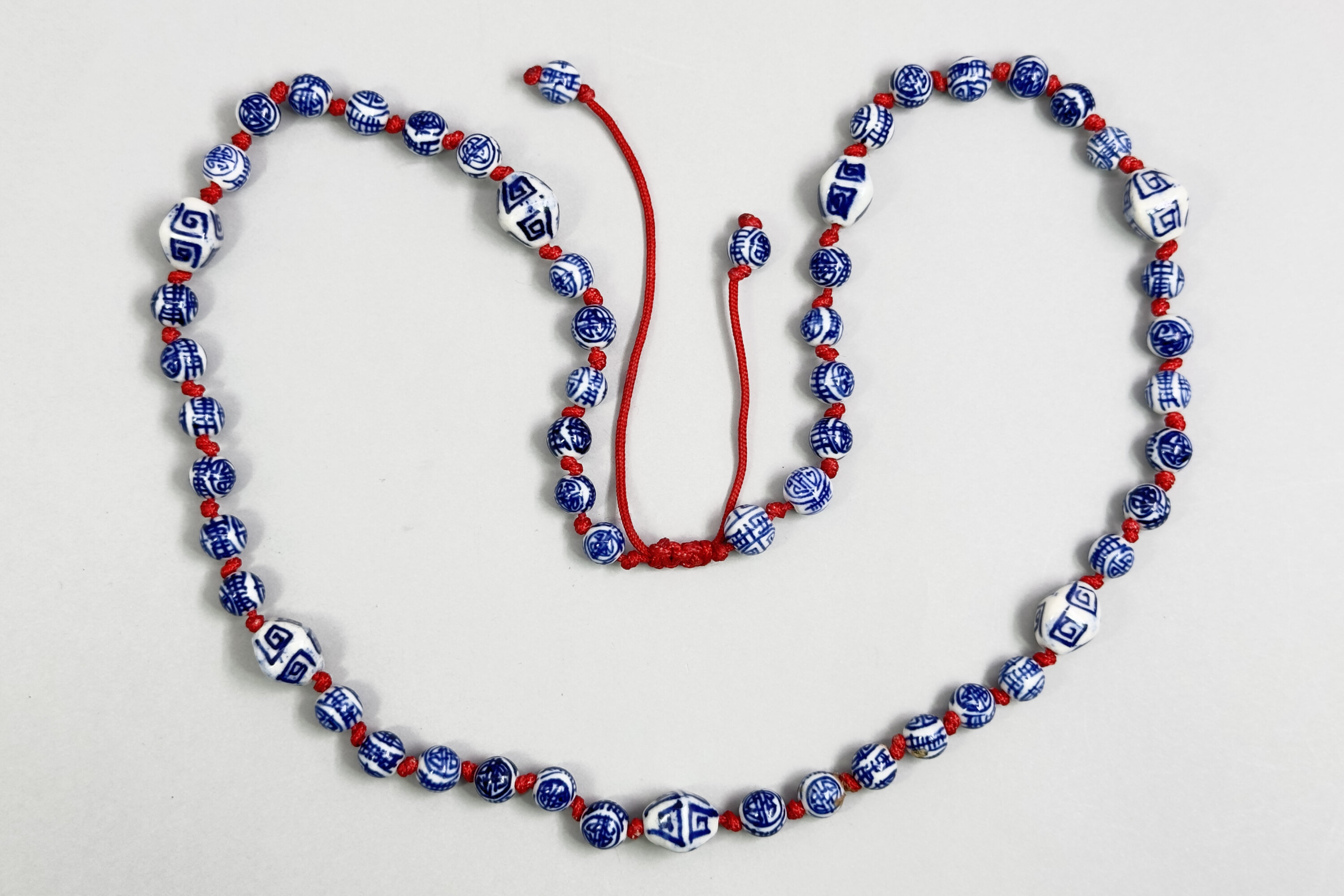
Chinese Blue and white ceramic beads, C20th
Price: £15PLEASE NOTE THAT THERE IS FREE UK SHIPPING ON THIS ITEM. For international buyers the shipping cost will be reduced by the UK shipping cost, so don't worry if you are outside the UK, you still receive this benefit!

An Arts and Crafts small Brass Tray, English early twentieth century
Price: £40
An Arts and Crafts small Brass serving Tray, English early twentieth century
Price: £40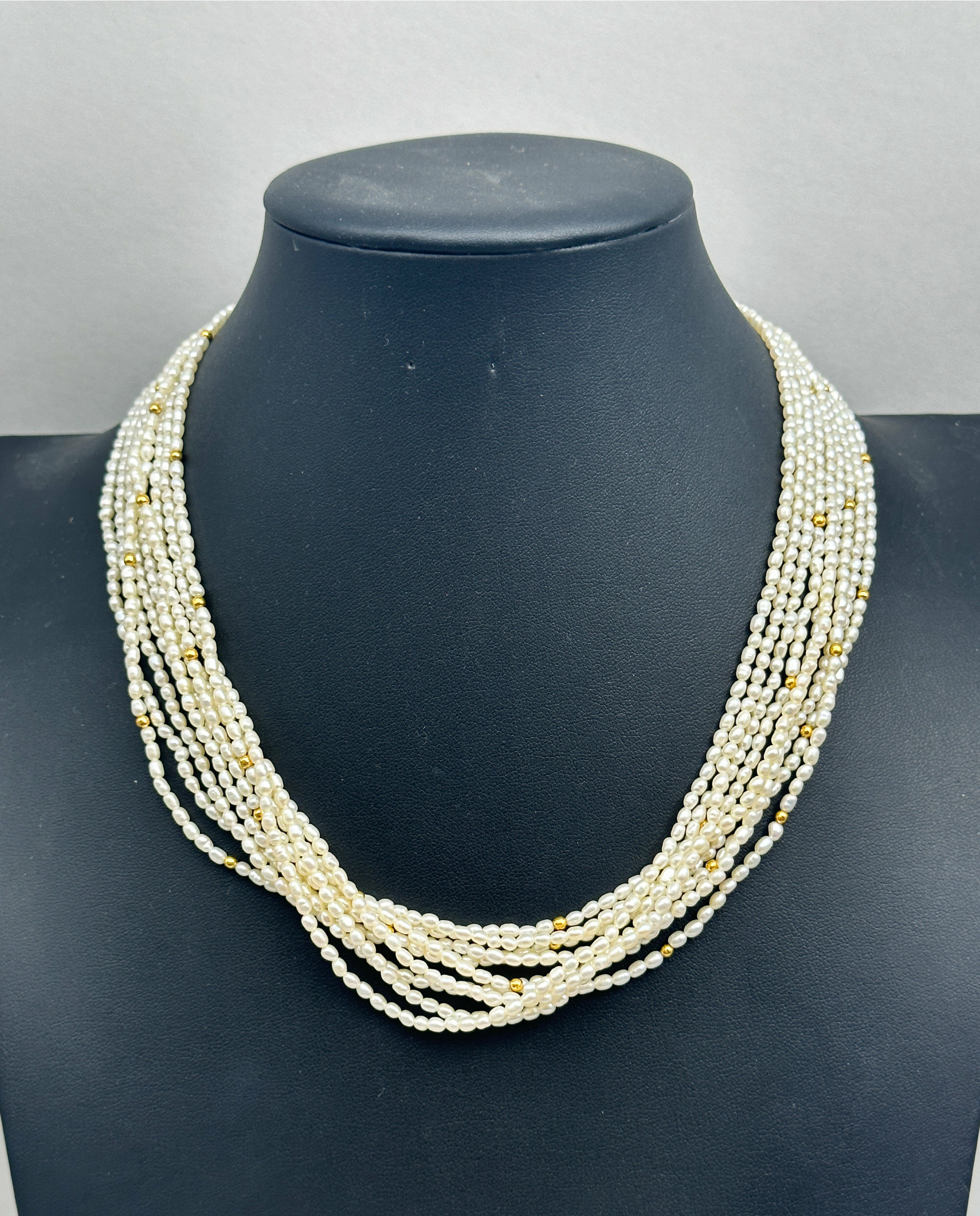
Nine strand authentic seed pearl necklace 1980s
Price: £45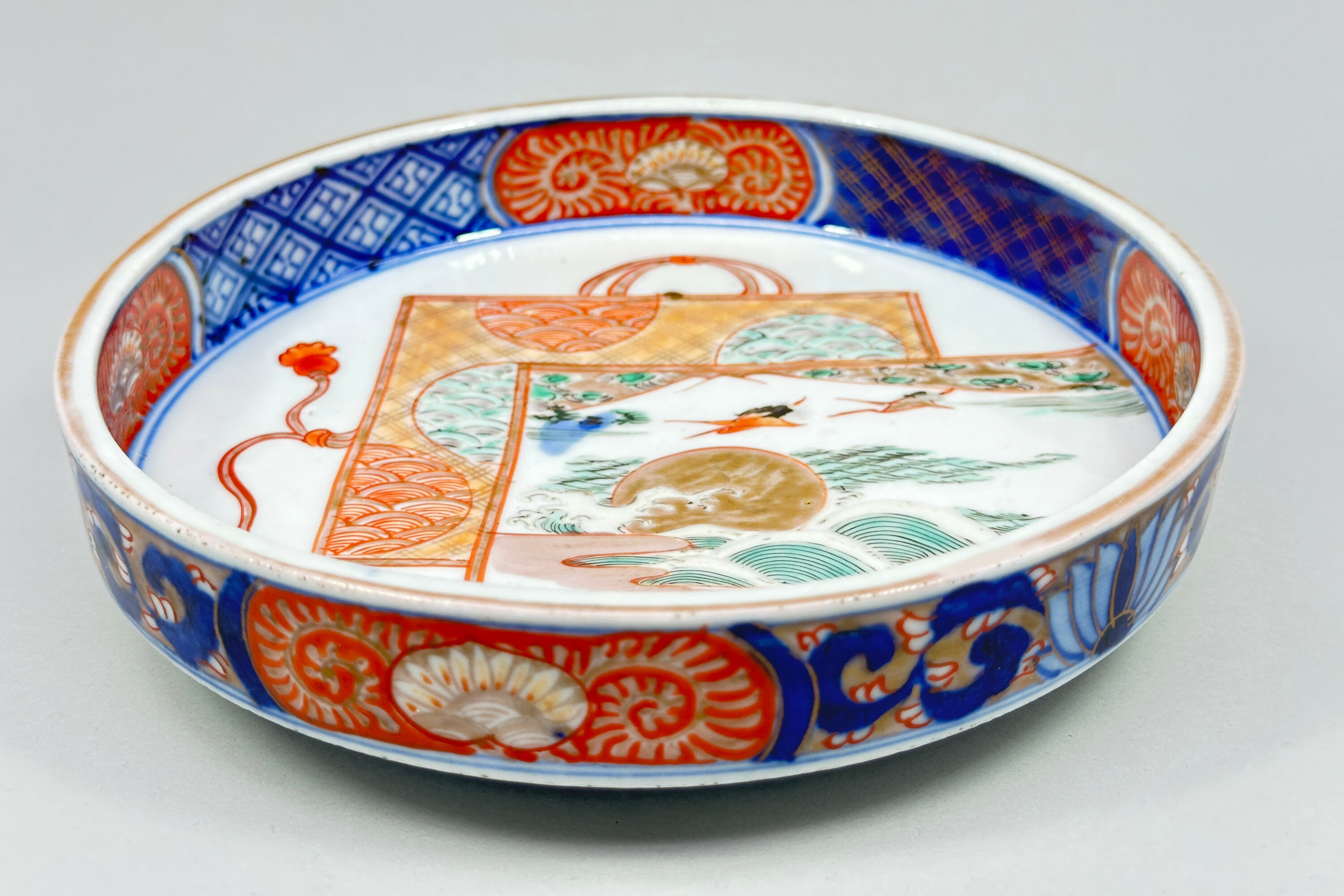
Japanese Arita shallow Bowl circa 1880
Price: £55The town of Arita in the former Hizen Province, northwestern Kyūshū island, was a major centre for the production of porcelains in Japan. Best known for blue and white pieces it also produced polychrome wares as well, including the familiar Imari colourings. While similar to Imari, the wider palette of colours used here is usually termed ‘Arita’ and this bowl employs not only the colourings but also many of the decorative elements found in these wares. The angular form, though, is unusual. Dating is to the Meiji era (1868-1912) probably around 1880.
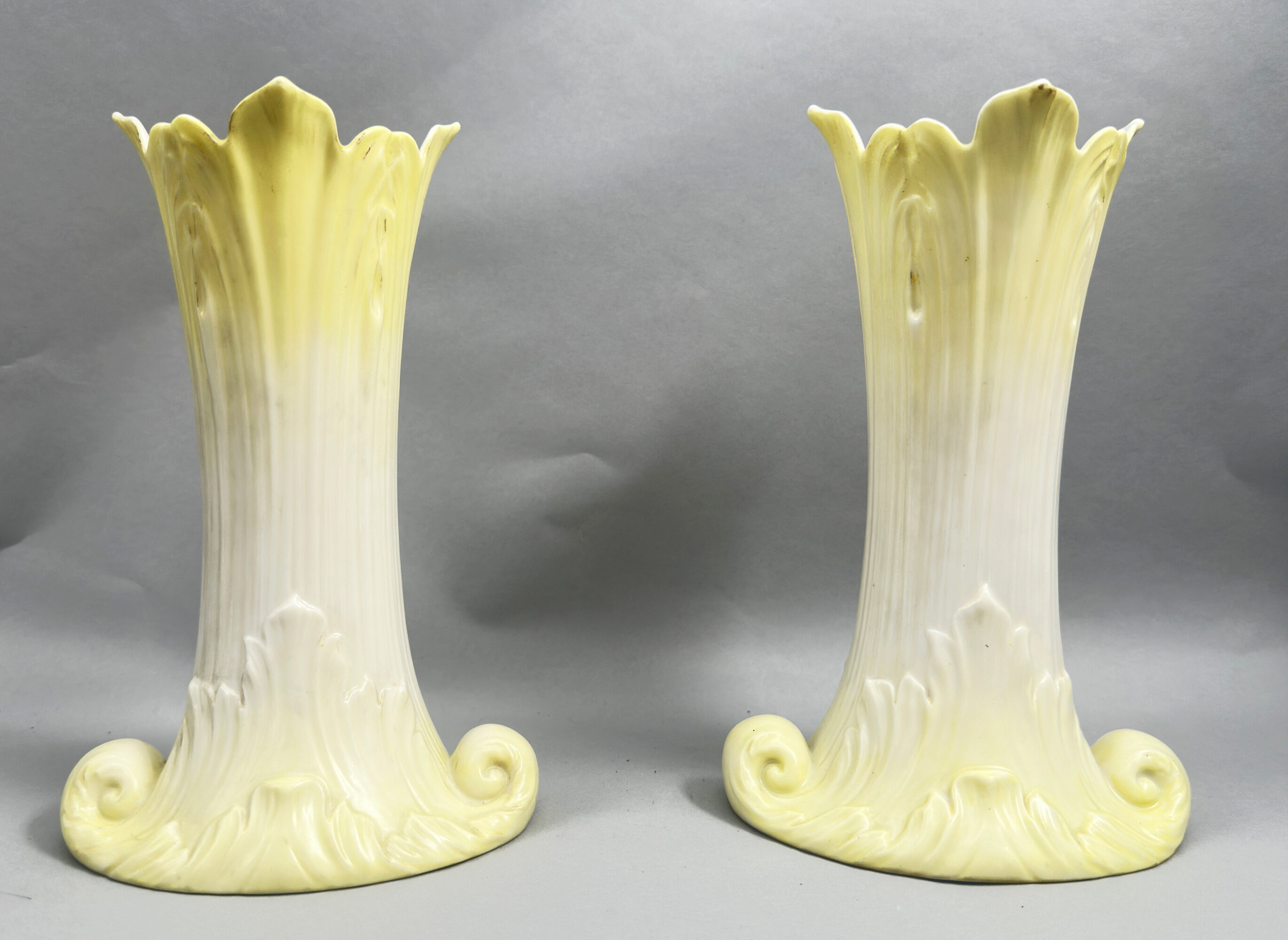
Pair of Royal Worcester Grainger and Co Vases, date mark for 1902
Estimate: £80 – 120
Large graduated necklace of nut carving beads, 1930s
Price: £25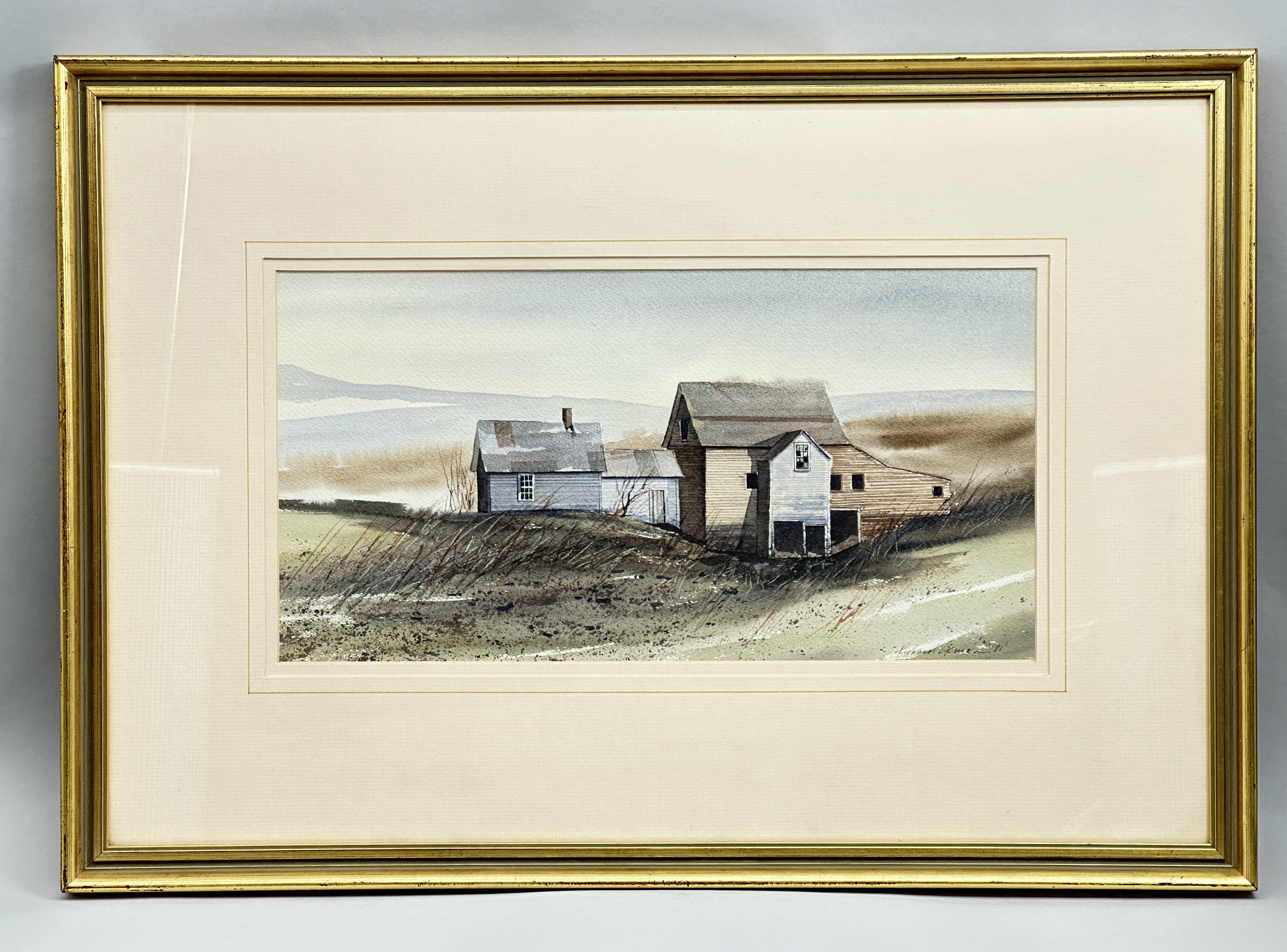
Signed Watercolour of Farm Buildings, Richard Akerman (1942-2005), dated 1981
Price: £110..............................................................................…………………………………………………………………………………………..............................…
Richard Akerman was born in London in 1942. He attended the Hornsey College of Arts and Crafts in the early 1960s, studying a general fine art course which incorporated printmaking and sculpture. His first exhibition was at the Obelisk Gallery in Crawford Street, London, where his work was displayed alongside works by famous surrealists such as Man Ray and Salvador Dali, implying that the style of his early work matched that of his more famous contemporaries. Years of travel followed in both Europe and the Far East and this seems to have turned him to painting in a more coventional style. A succession of watercolours was to follow with subjects ranging from still life and flowers to garden and architectural subjects. His work became immensely popular through the prints made from his original paintings, indeed such was the demand for them that he rivalled Monet as a subject for reproduction in this medium becoming, in a sense, quite a household name with exhibitions of his work internationally.
The path to success, however, was not straightforward and one account of him, written by his son Marcus, mentions running a hot dog stand alongside joining the artists with their weekend displays of works for sale on the railings at Kensington Gardens. Convivial and outgoing (a self portrait captures him well : see image 9), Akerman was married with three children and spent the latter years of his life in Spain where he sadly died after an accident in 2005.
But his work survives him and the prints produced in his lifetime can still be obtained today, giving an accesible overview of his output. The style is approachable with an attractive use of colour and often slightly impressionistic brushwork. But there are works executed in a more precise style, for example a signed watercolour ‘Hot House Flowers’, exhibited by the Edinburgh Gallery in 1994 (see image 10) and this is seen in the work we have on offer. The location of this group of farm buildings is uncertain but Akerman painted similar scenes which appear to be located in Kent and this may well be the case here. Original watercolours by Akerman are not so easily found but what increases the rarity and interest of our picture is that the artist’s signature, done in a slightly more precise hand than the signatures found in the reproduction prints, has the date in addition (’81). We have been unable to find any other example of this and it leads to the possibility that this is a work which the artist painted for himself. Certainly there are no reproductions of it. If so, then it is of particular interest and more than worthy of inclusion in a collection C20th British watercolourists with the addition of being an original creation by an artist who enjoyed such great popularity with the general public.

Two lacquer bird brooches 1980s
Price: £15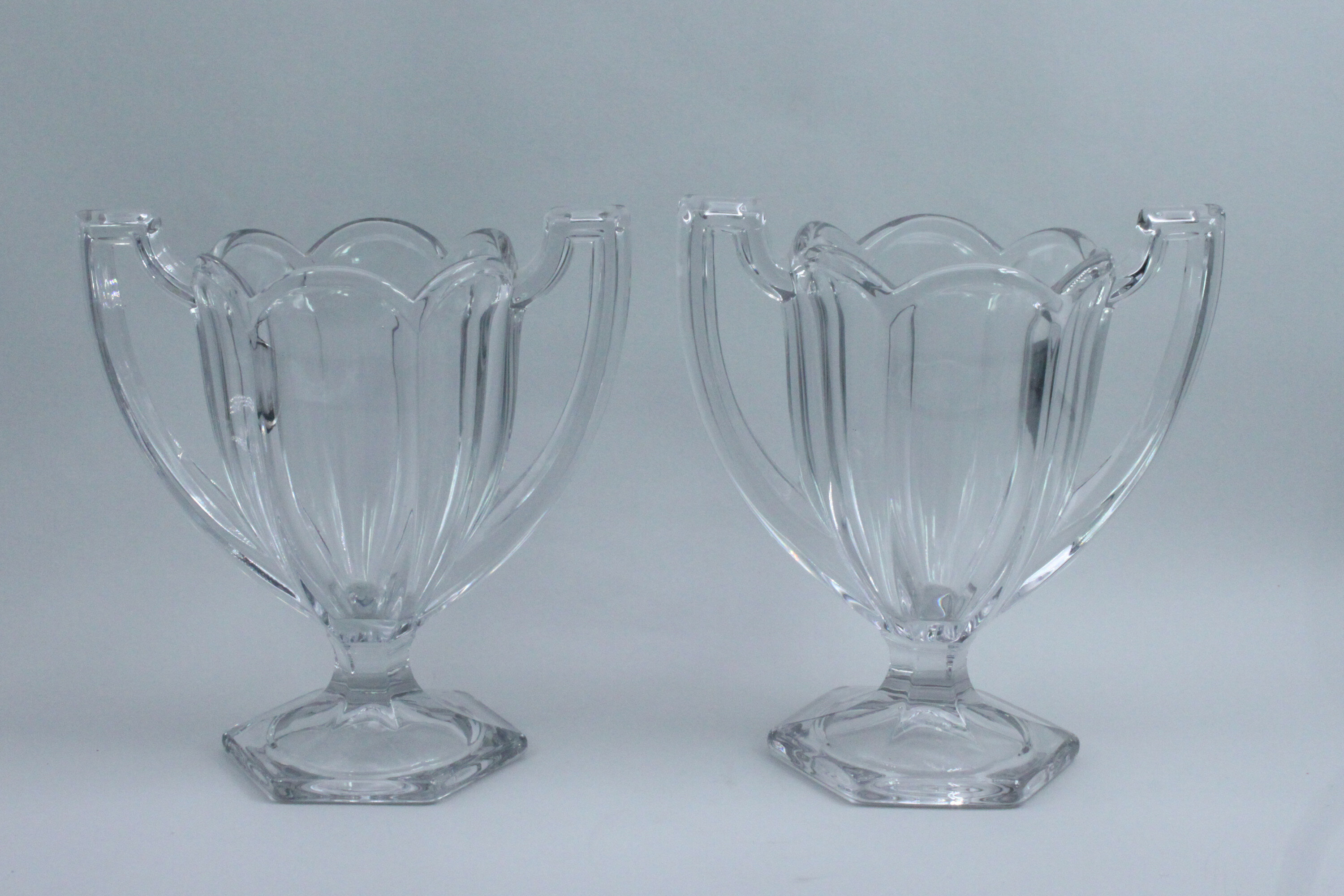
A Pair of Art Deco Pressed Glass Trophy Form Vases, Davidson, 1930s
Price: £45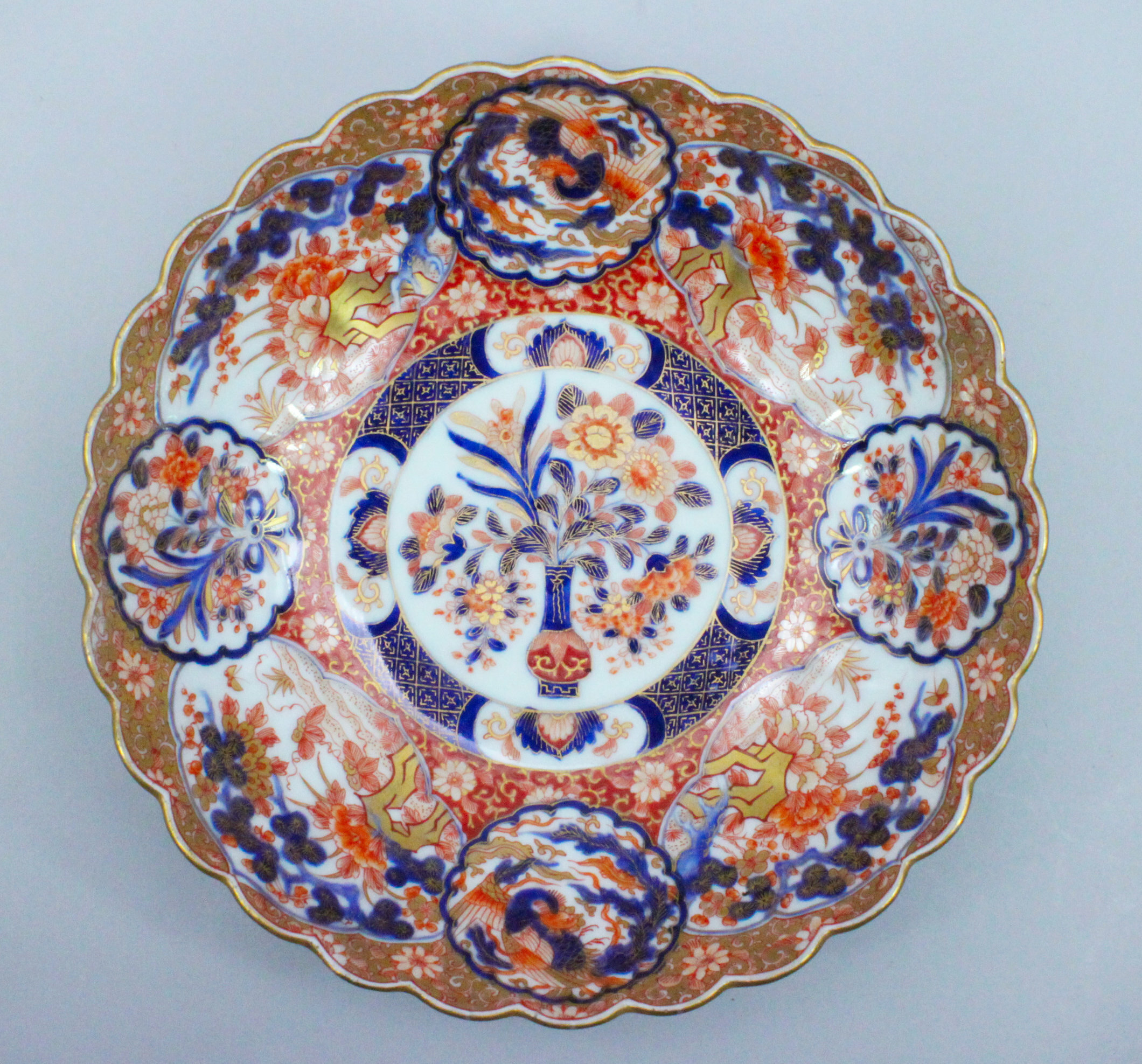
Japanese Fukagawa Imari Bowl, signed, circa 1880
Price: £380The Fukagawa kilns produced the best quality Imari items made in Japan in the late nineteenth century for export to the West. Their history starts with Ezaiemon Fukagawa who in 1856 became head of his family's porcelain business and in 1875 founded Koransha (The Company of the Scented Orchid) in Arita, Japan, to produce tableware for export. In 1894 the modern Fukagawa company was founded by Chuji Fukagawa, with the Fukagawa trade mark of Mount Fuji and a stream, as its trade mark. Dating here is within the Meiji period (1868 - 1912) probably around 1880. This conforms with the script mark used as opposed to the later symbol design.
